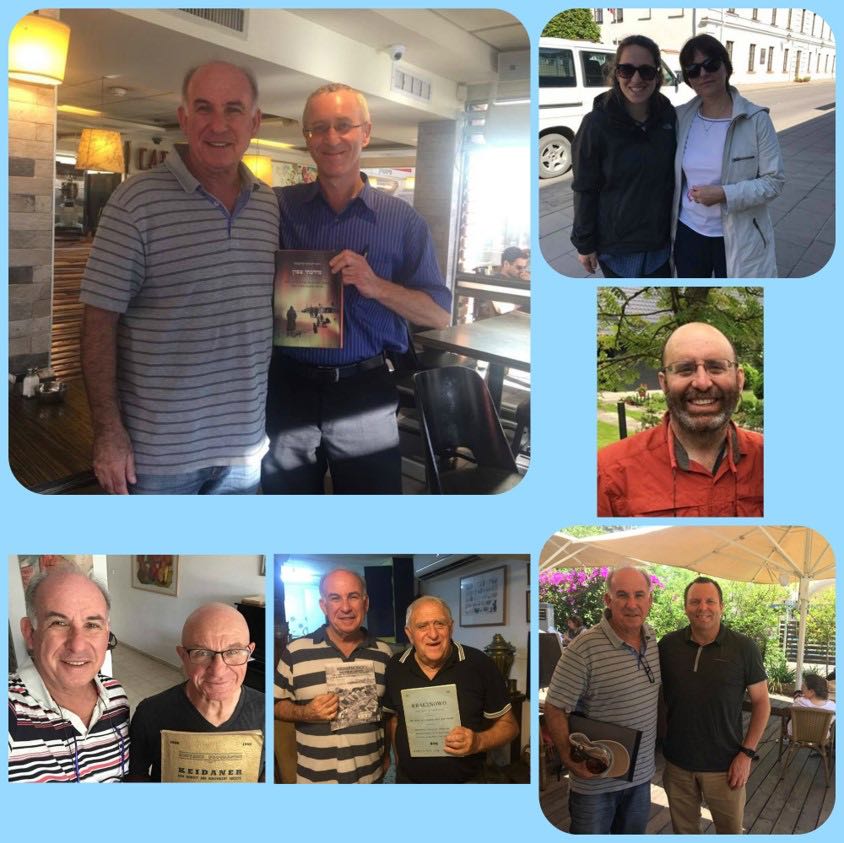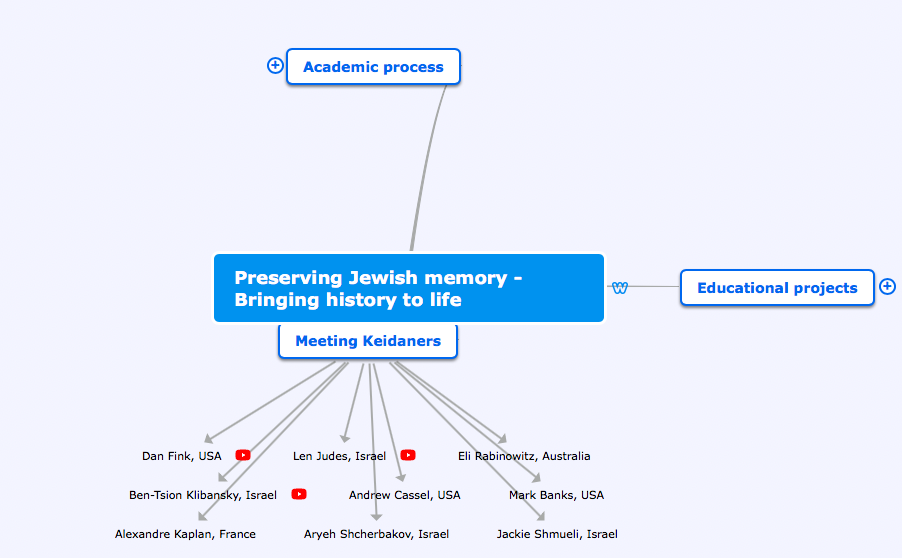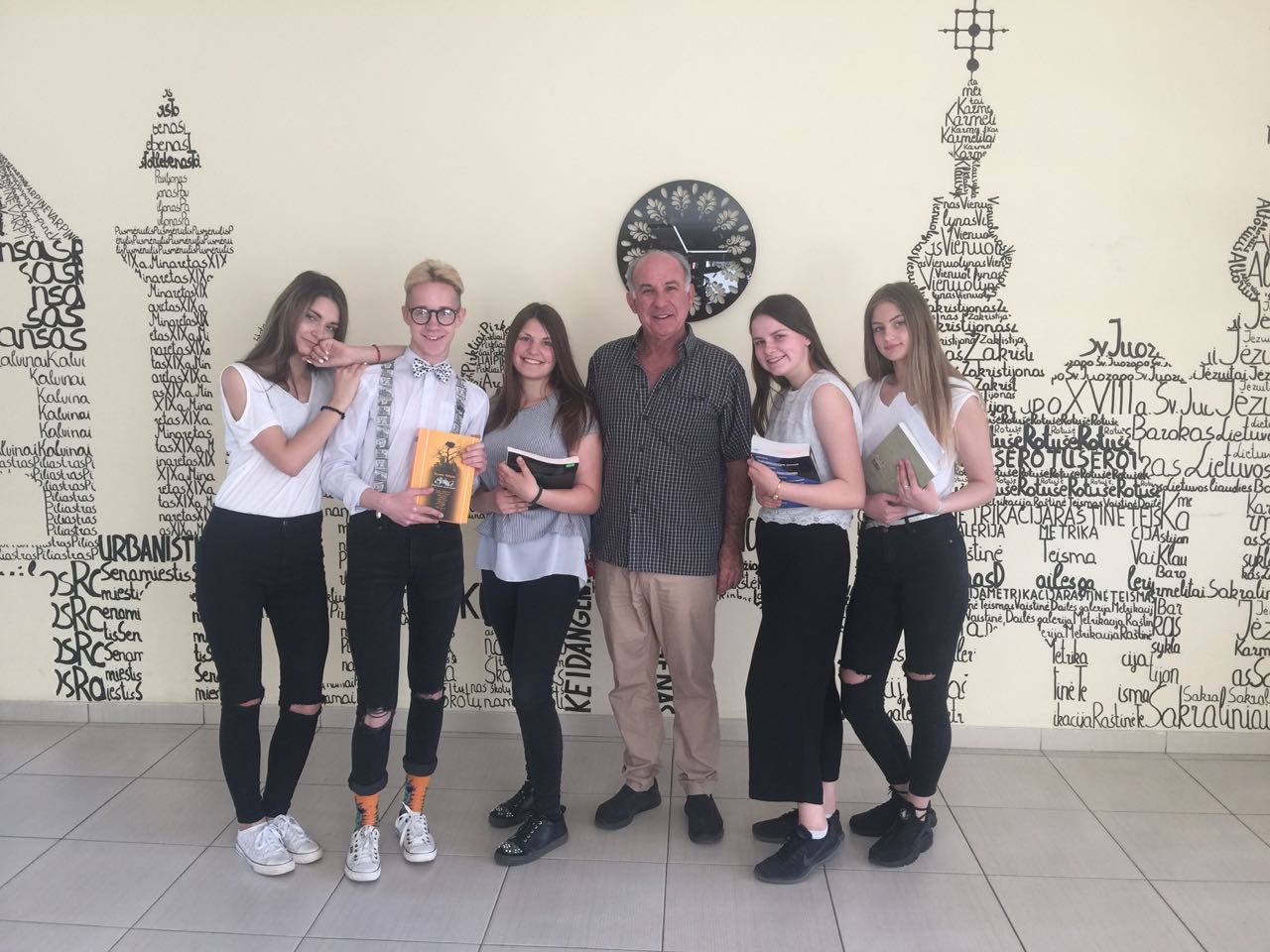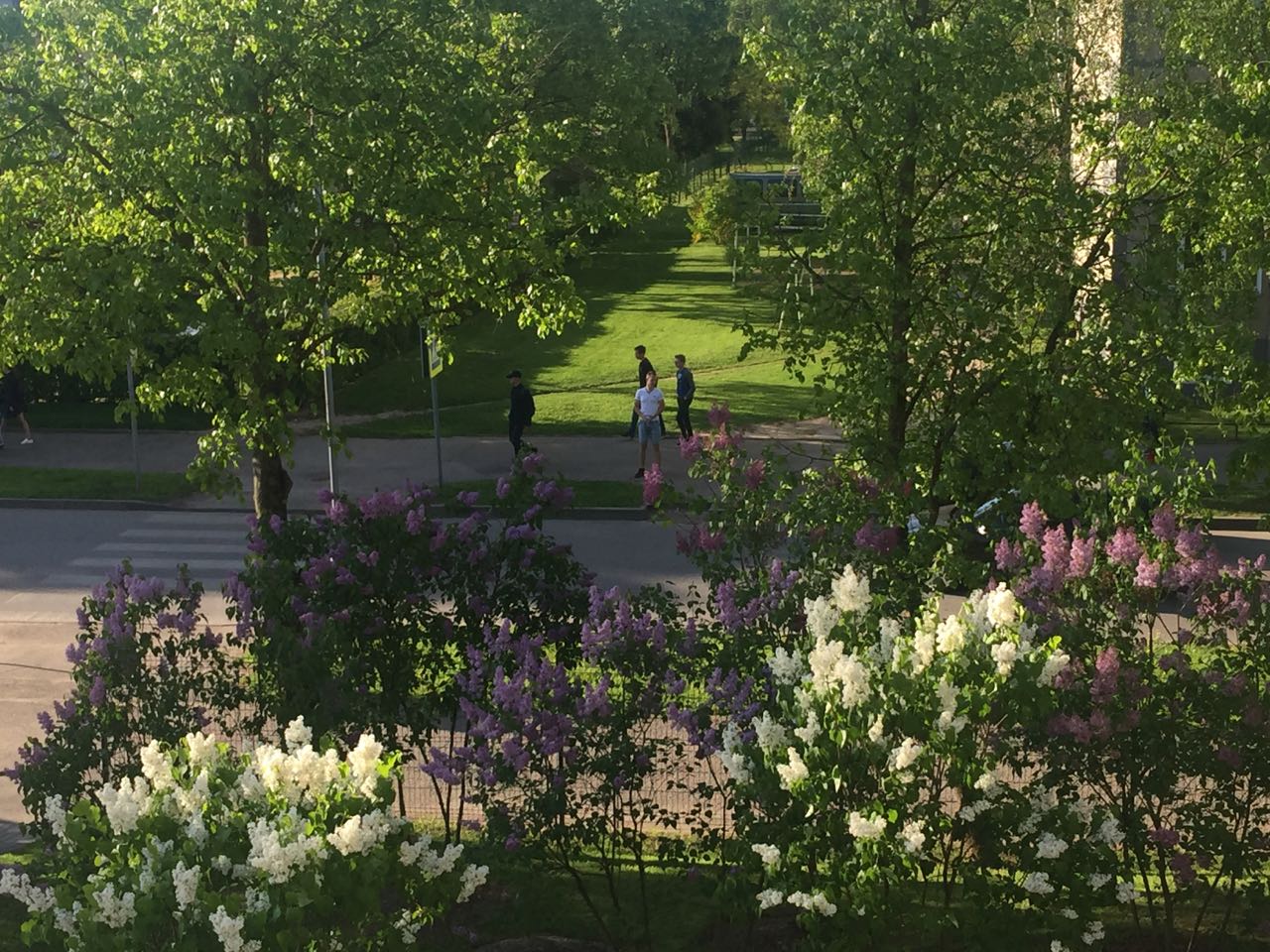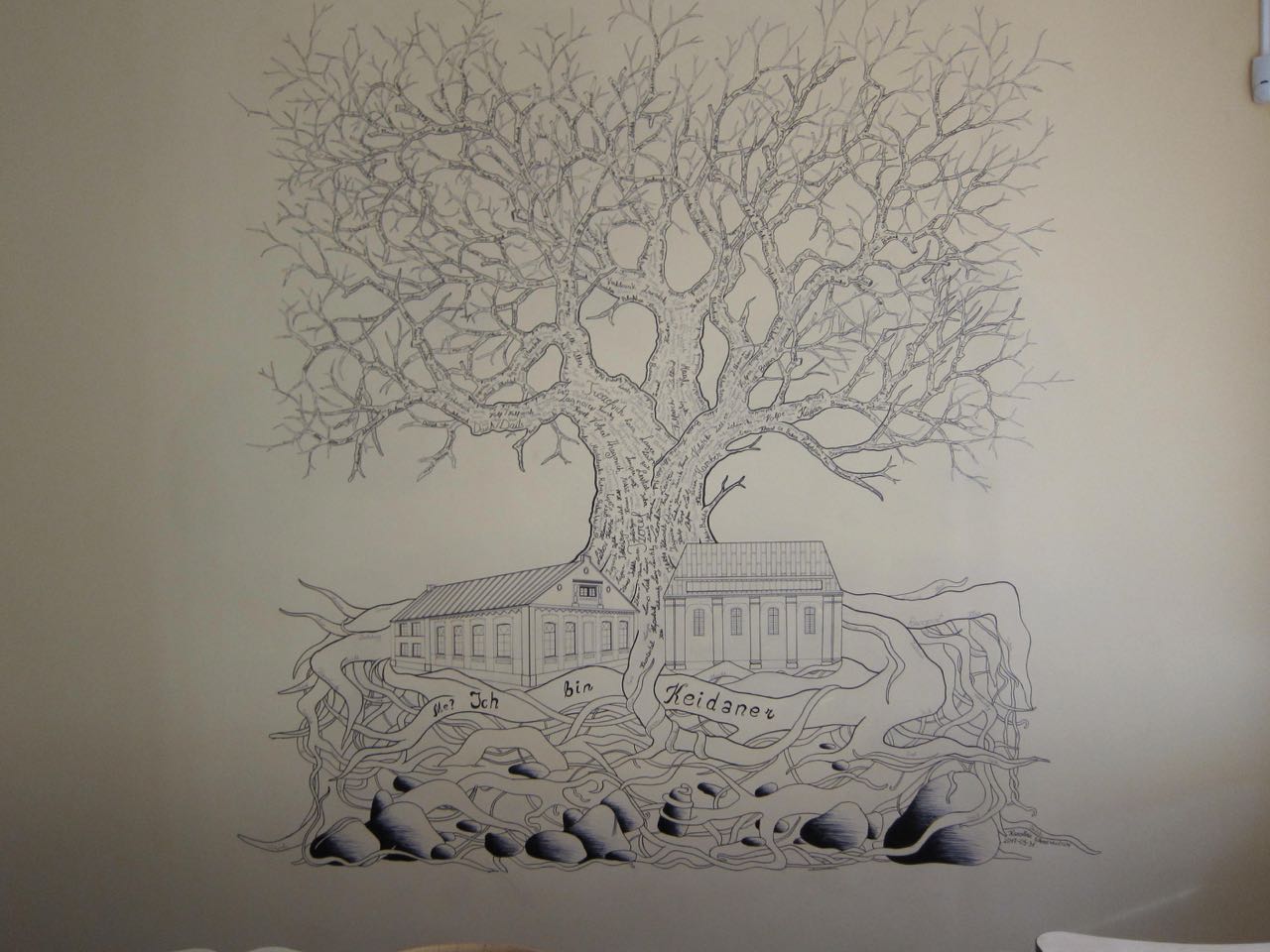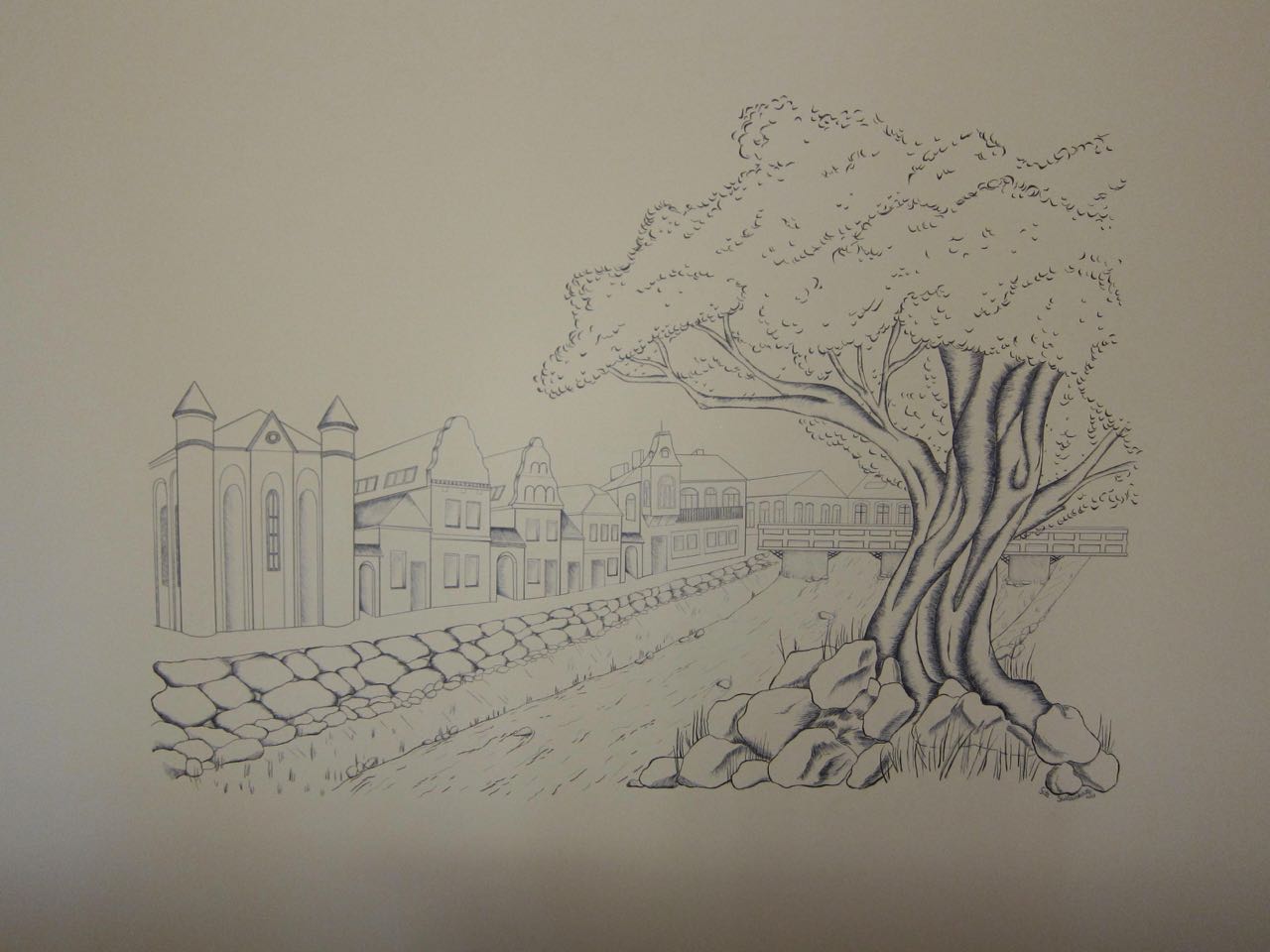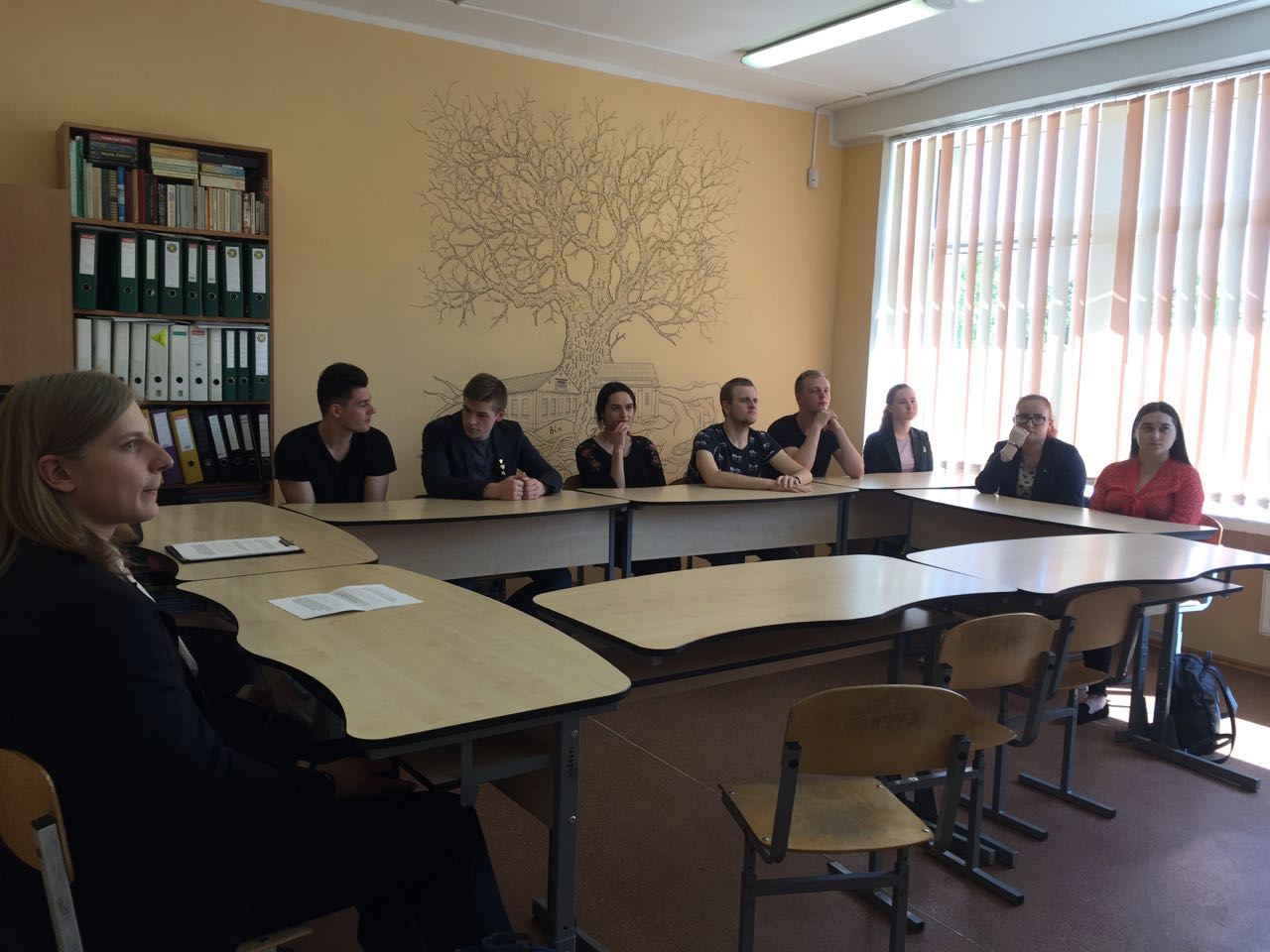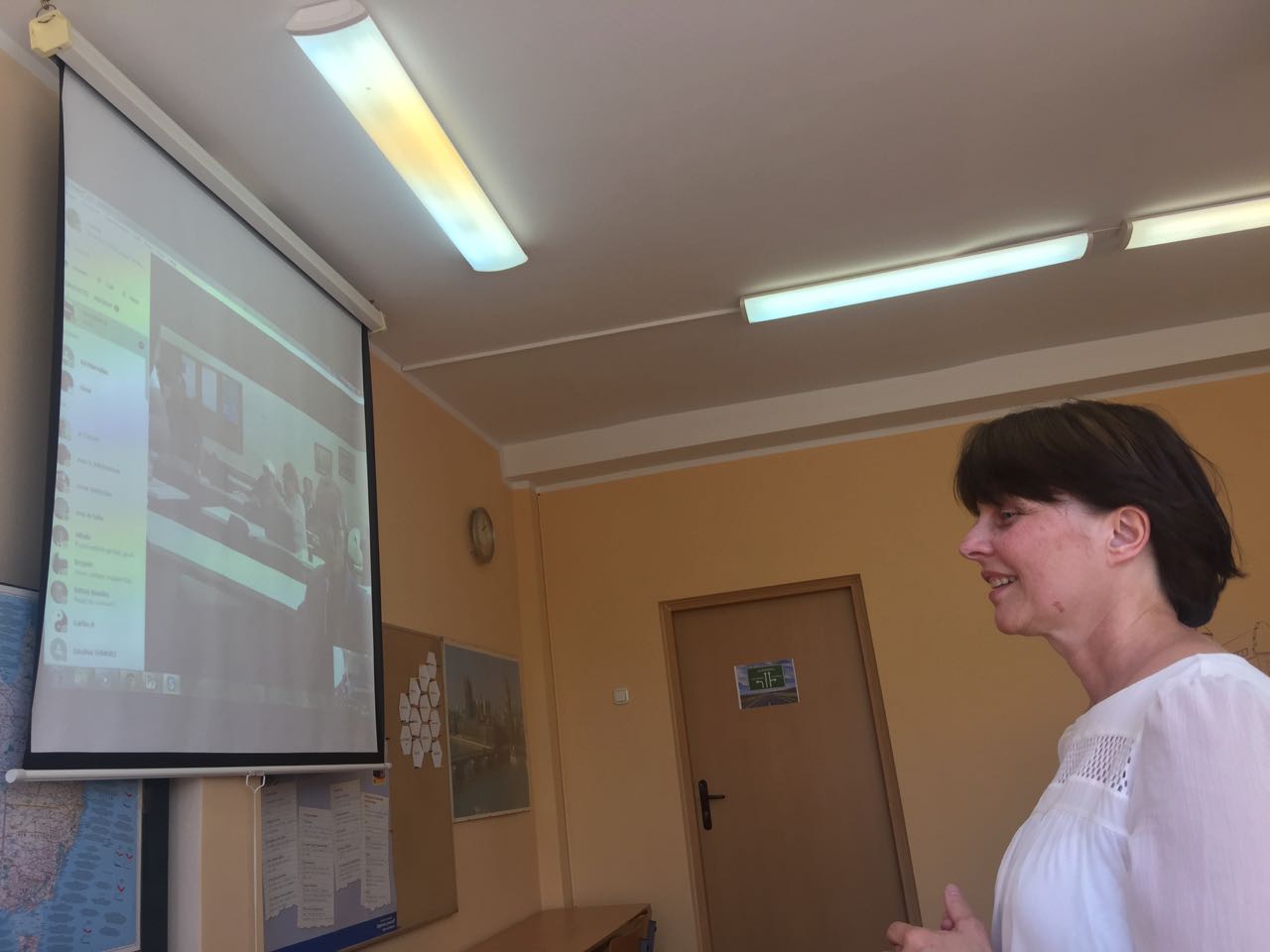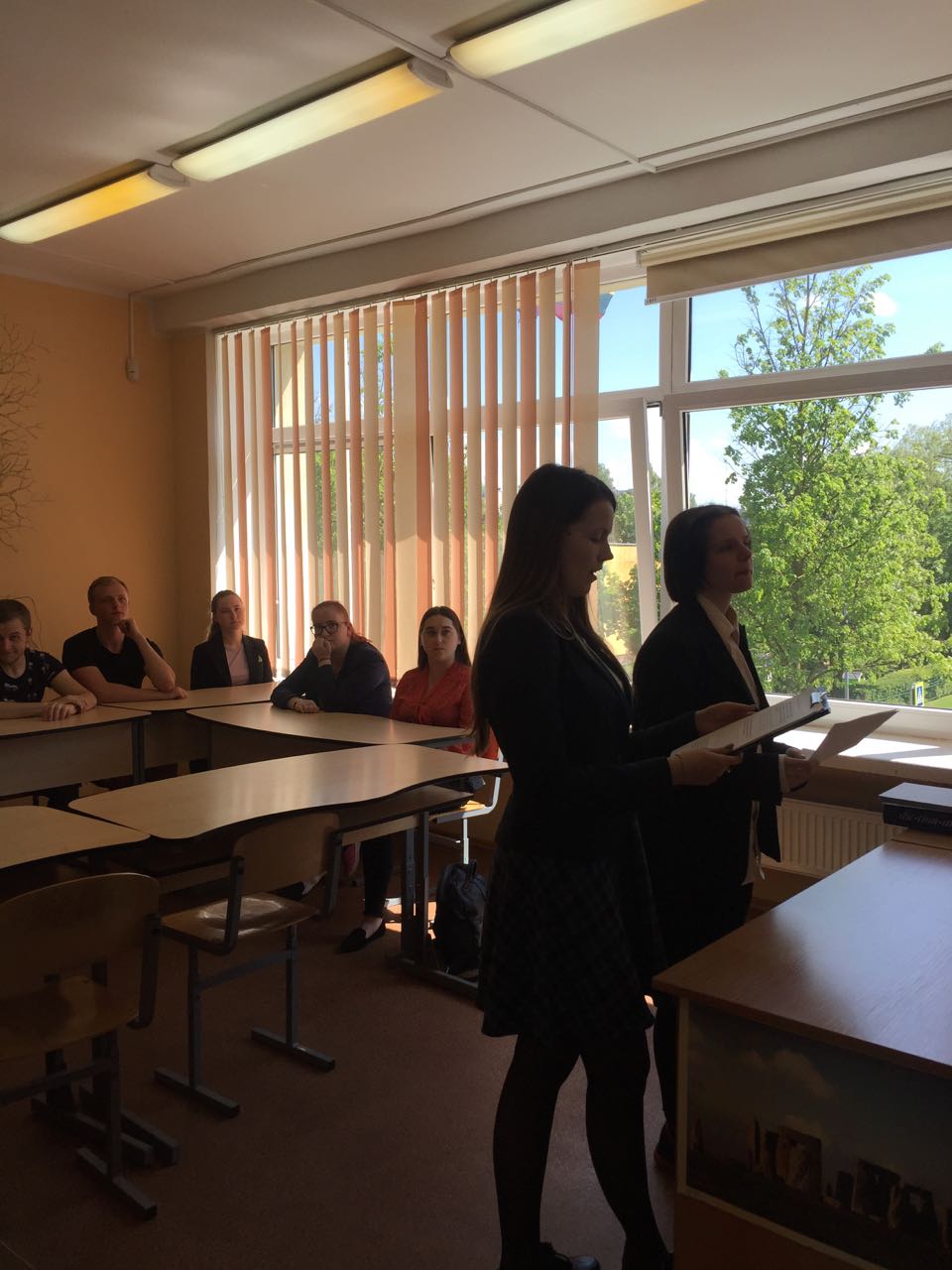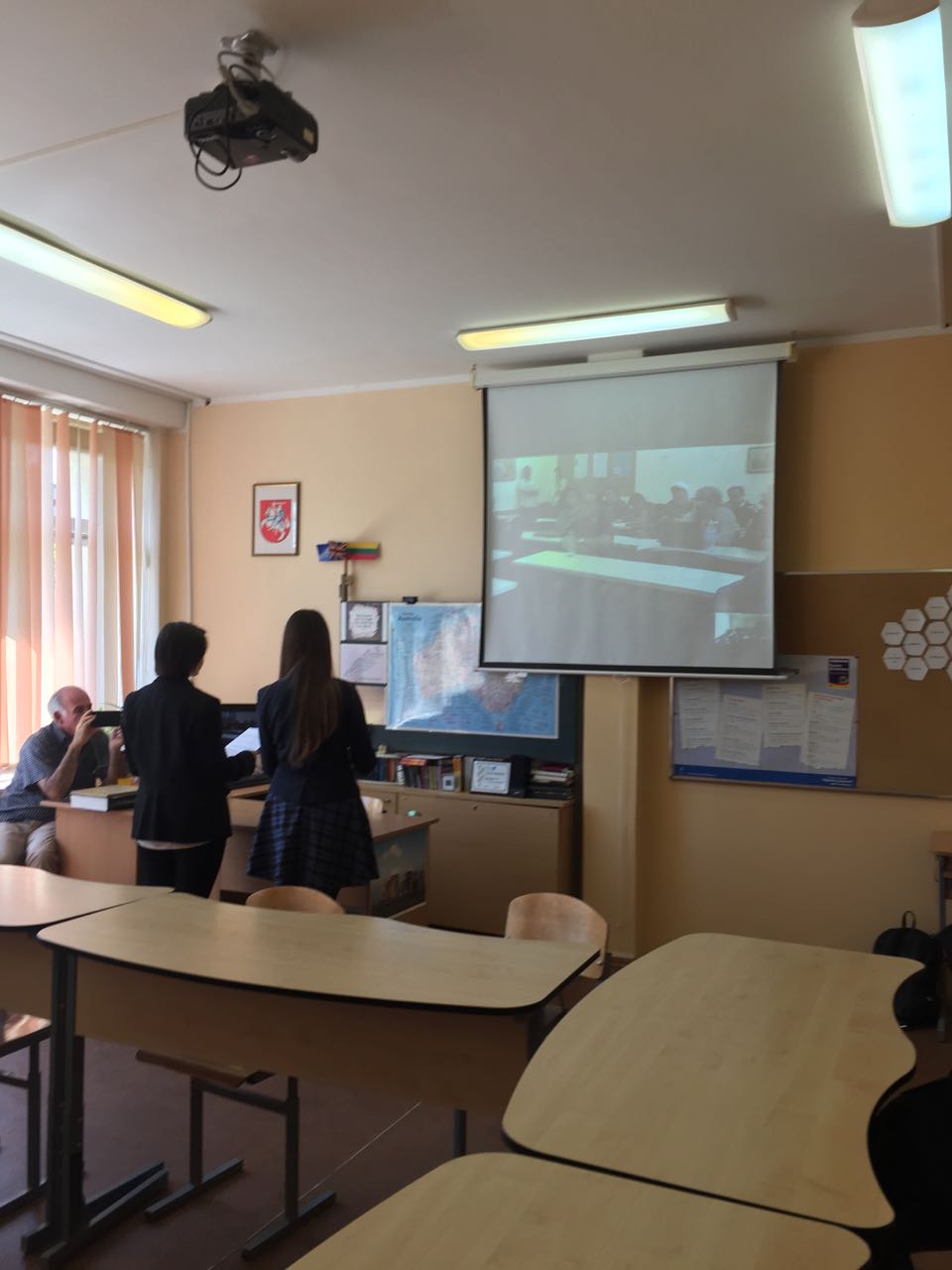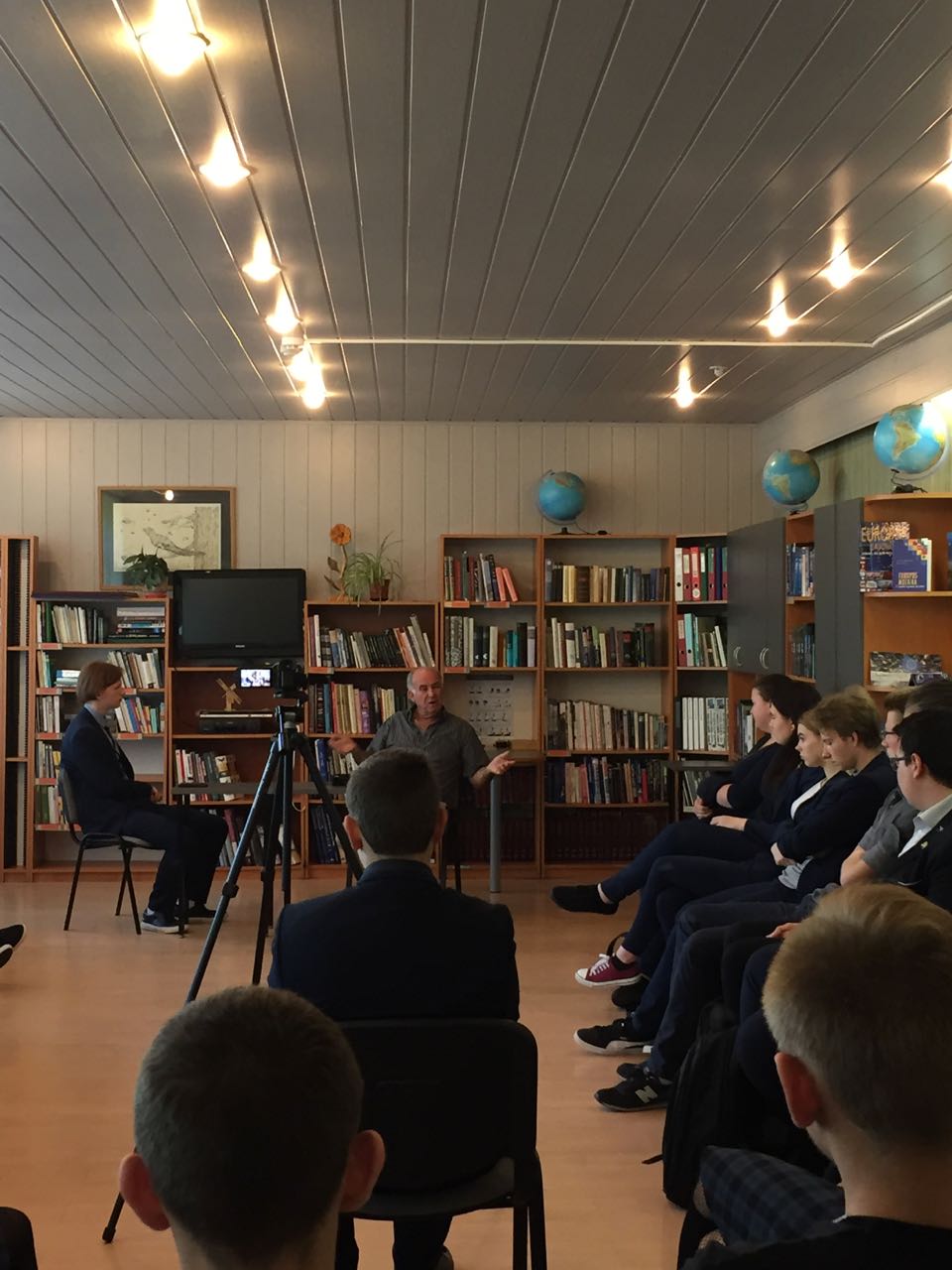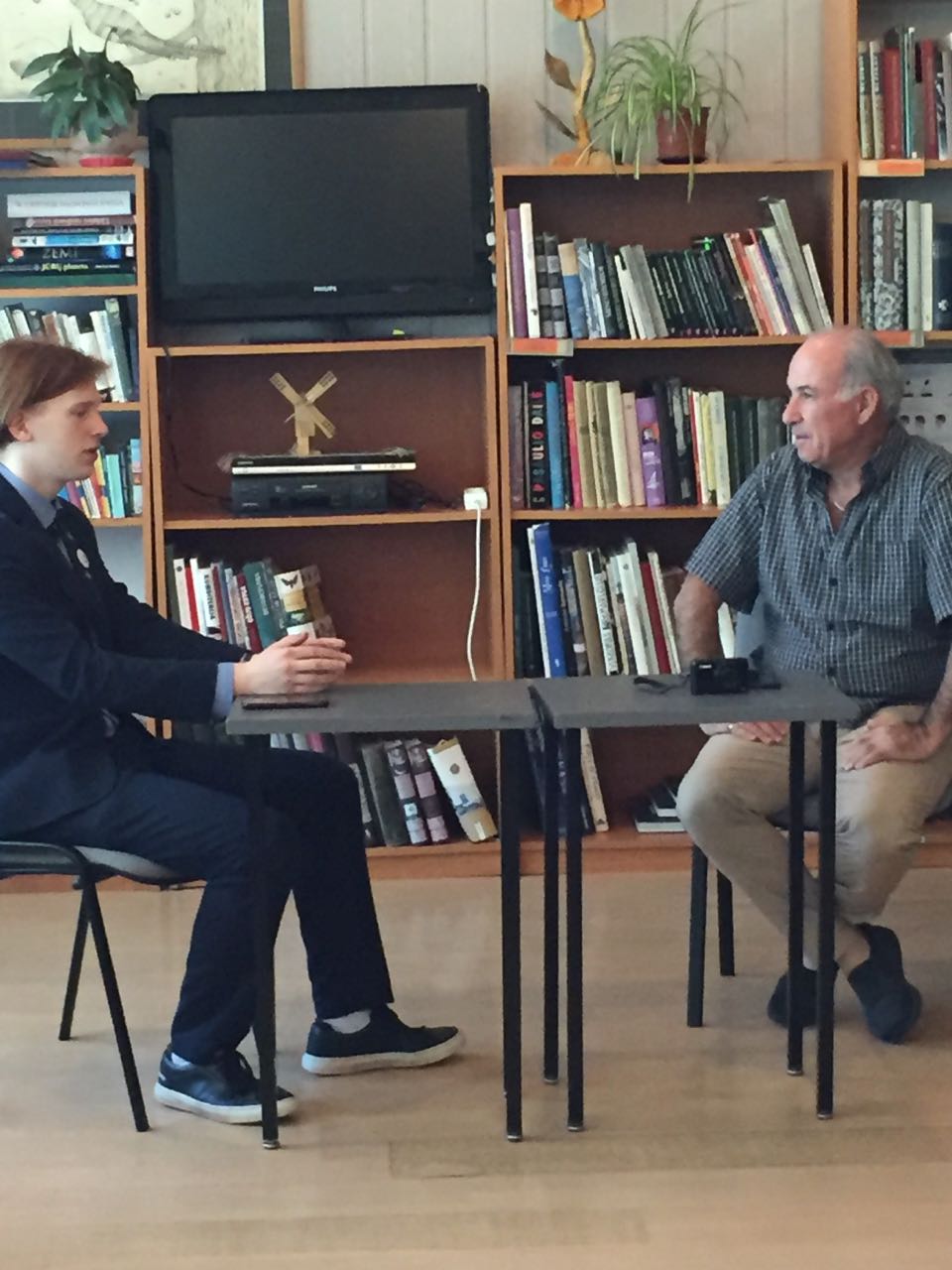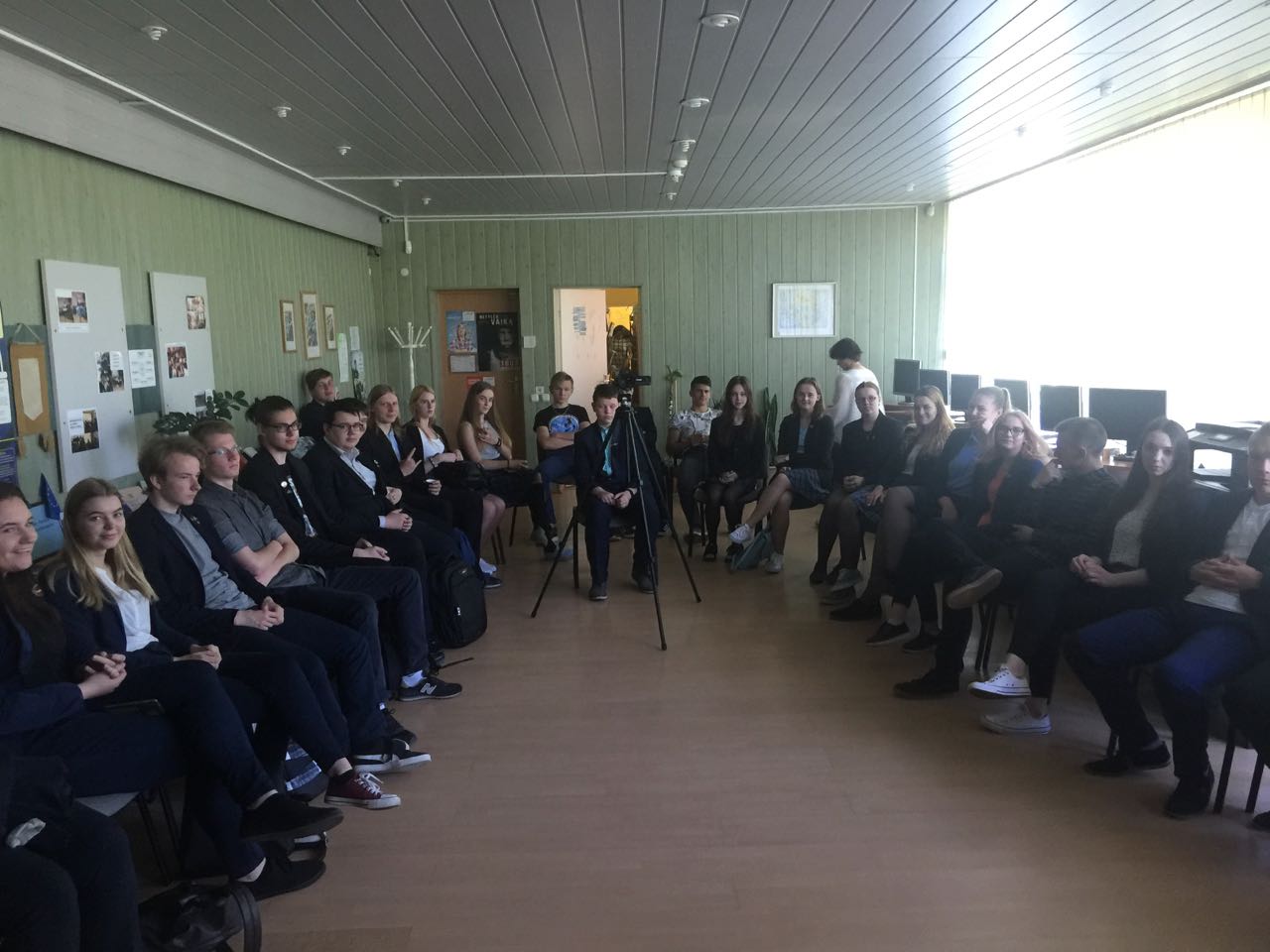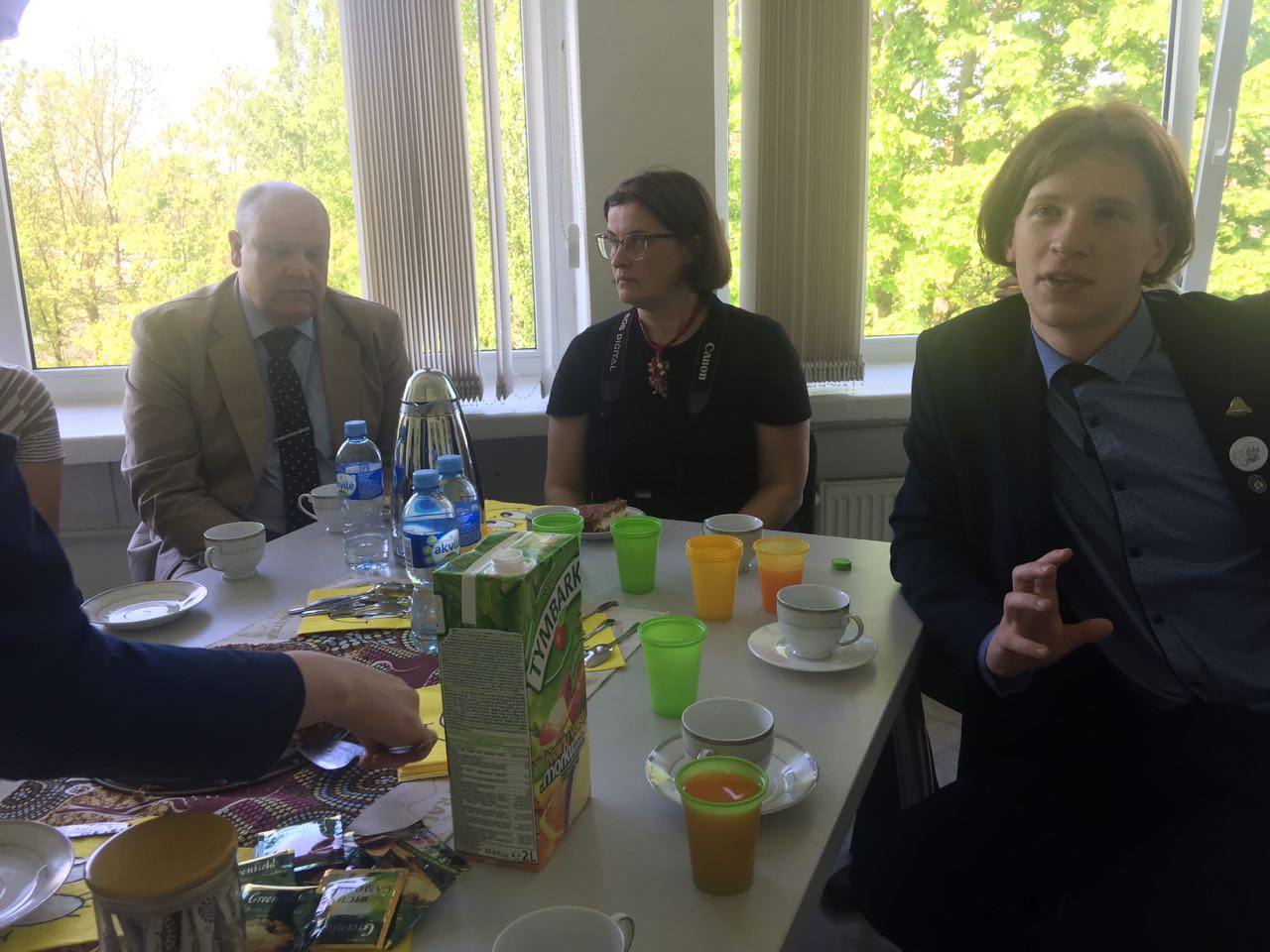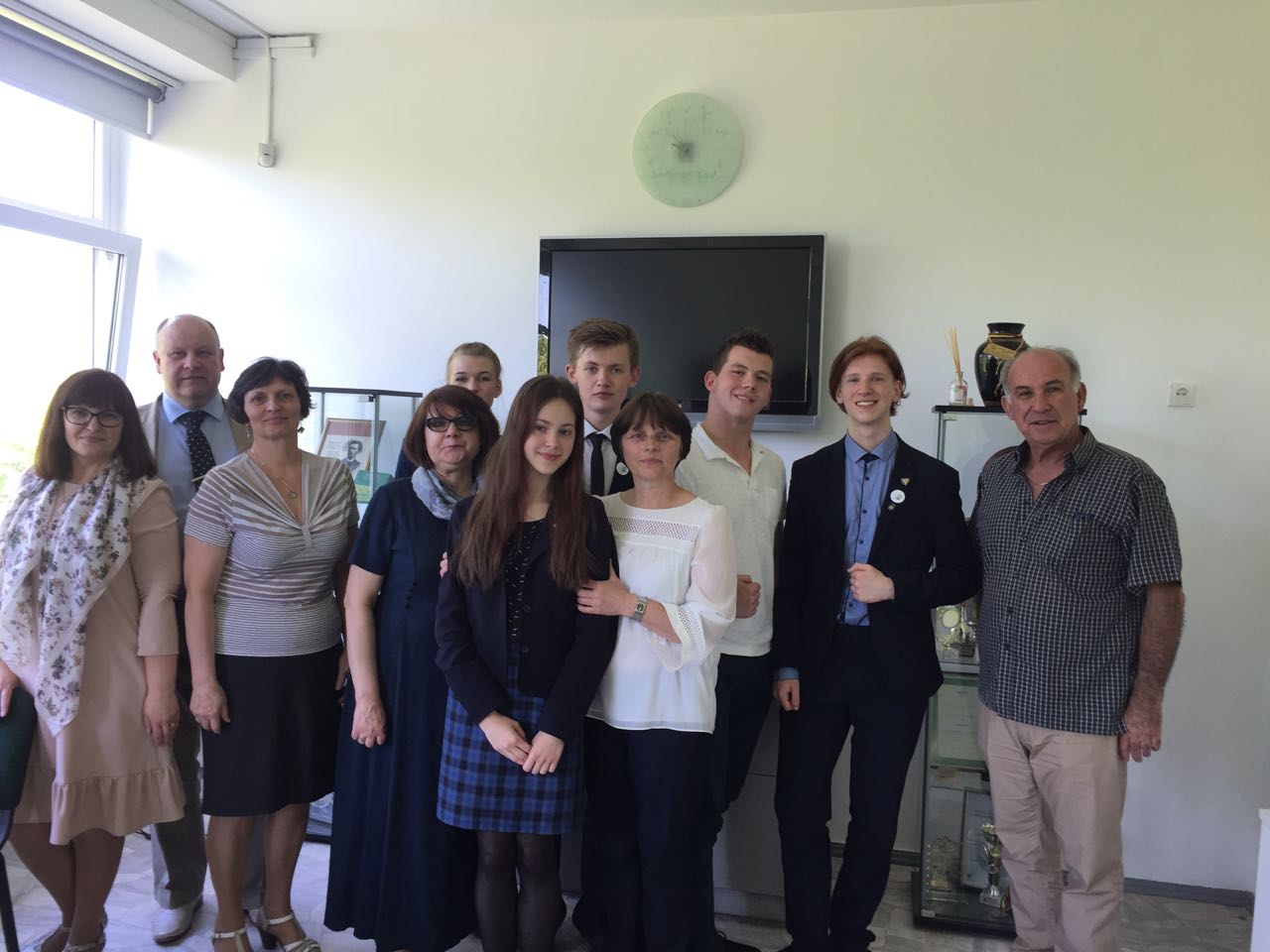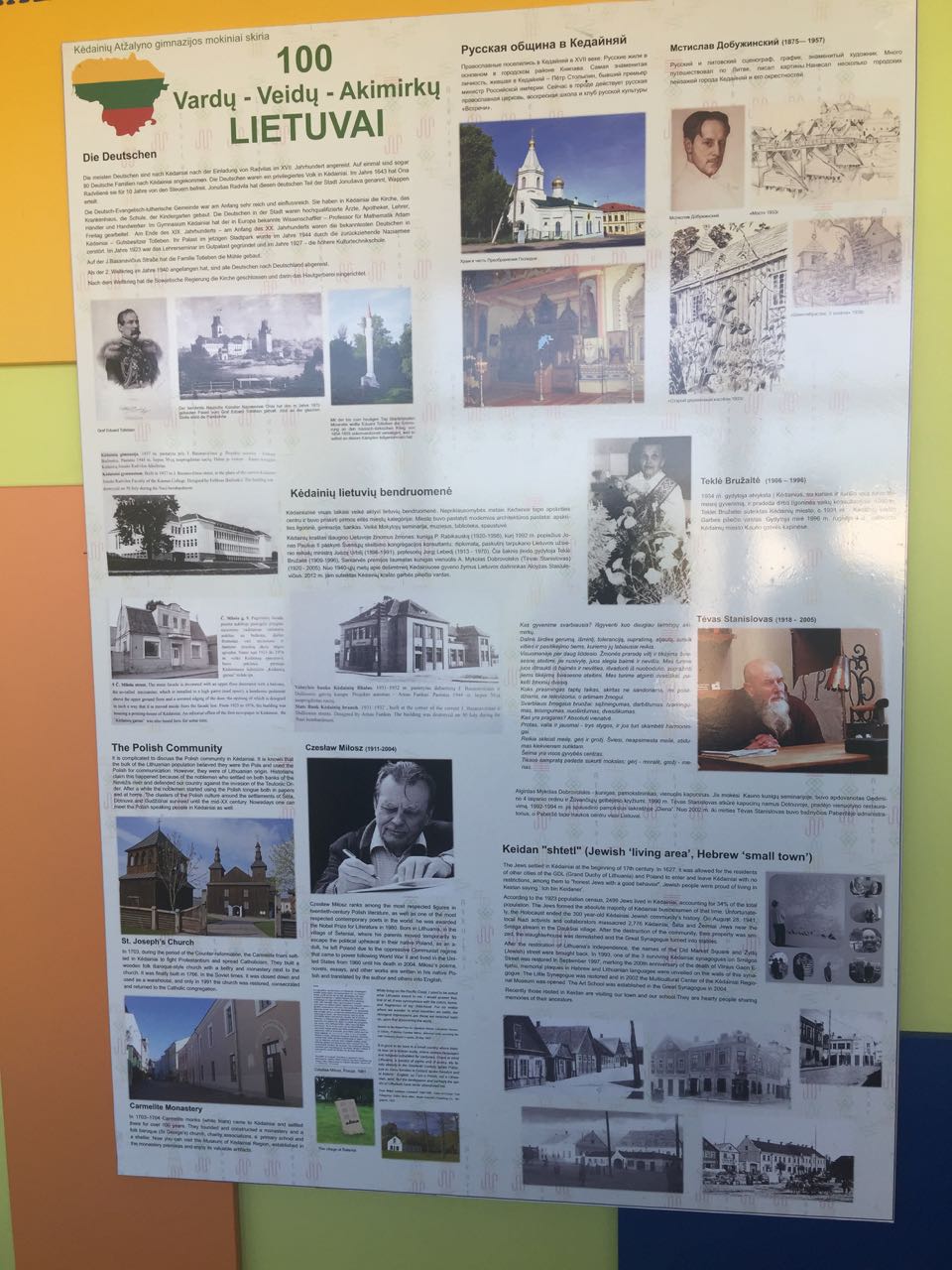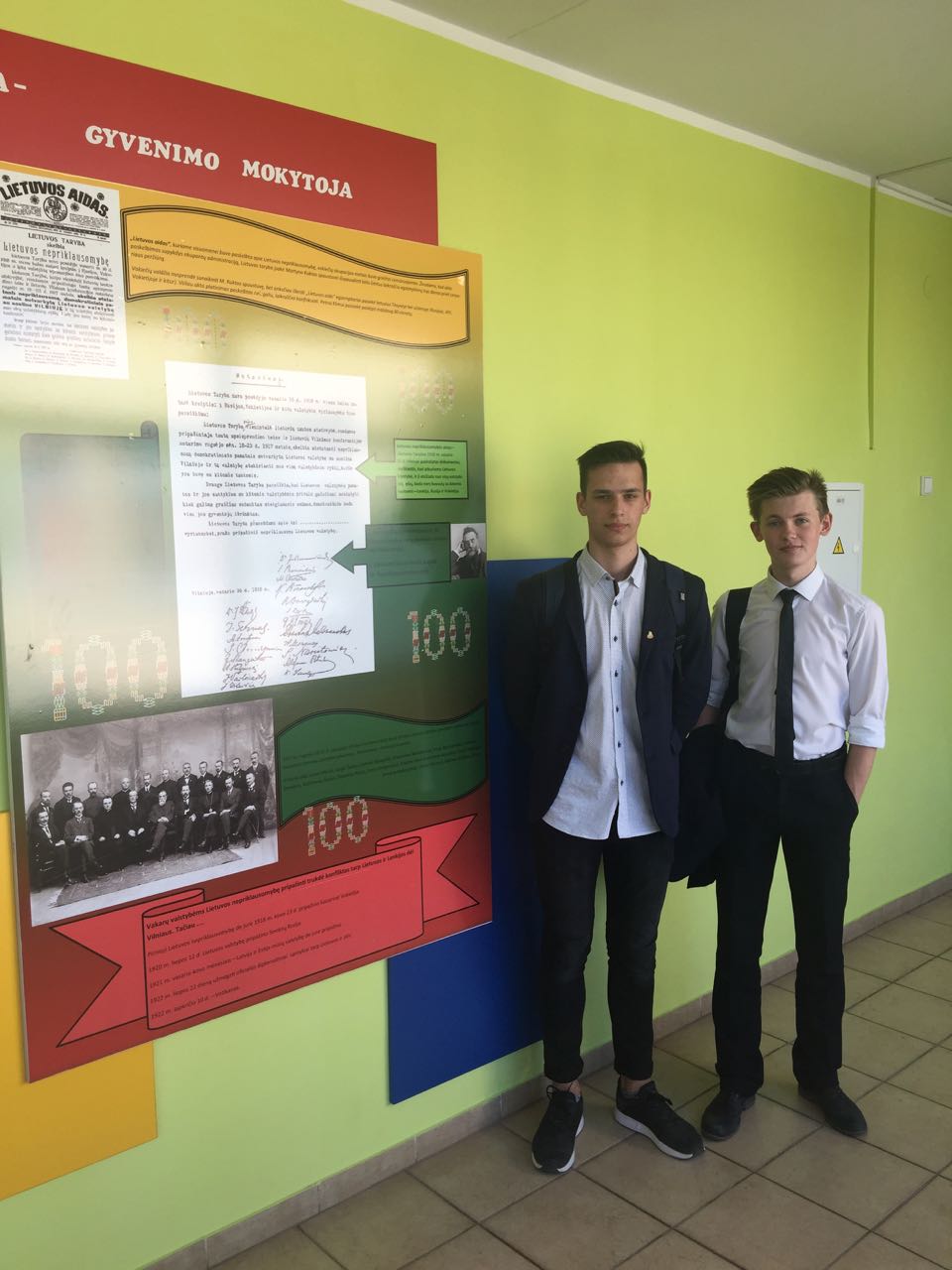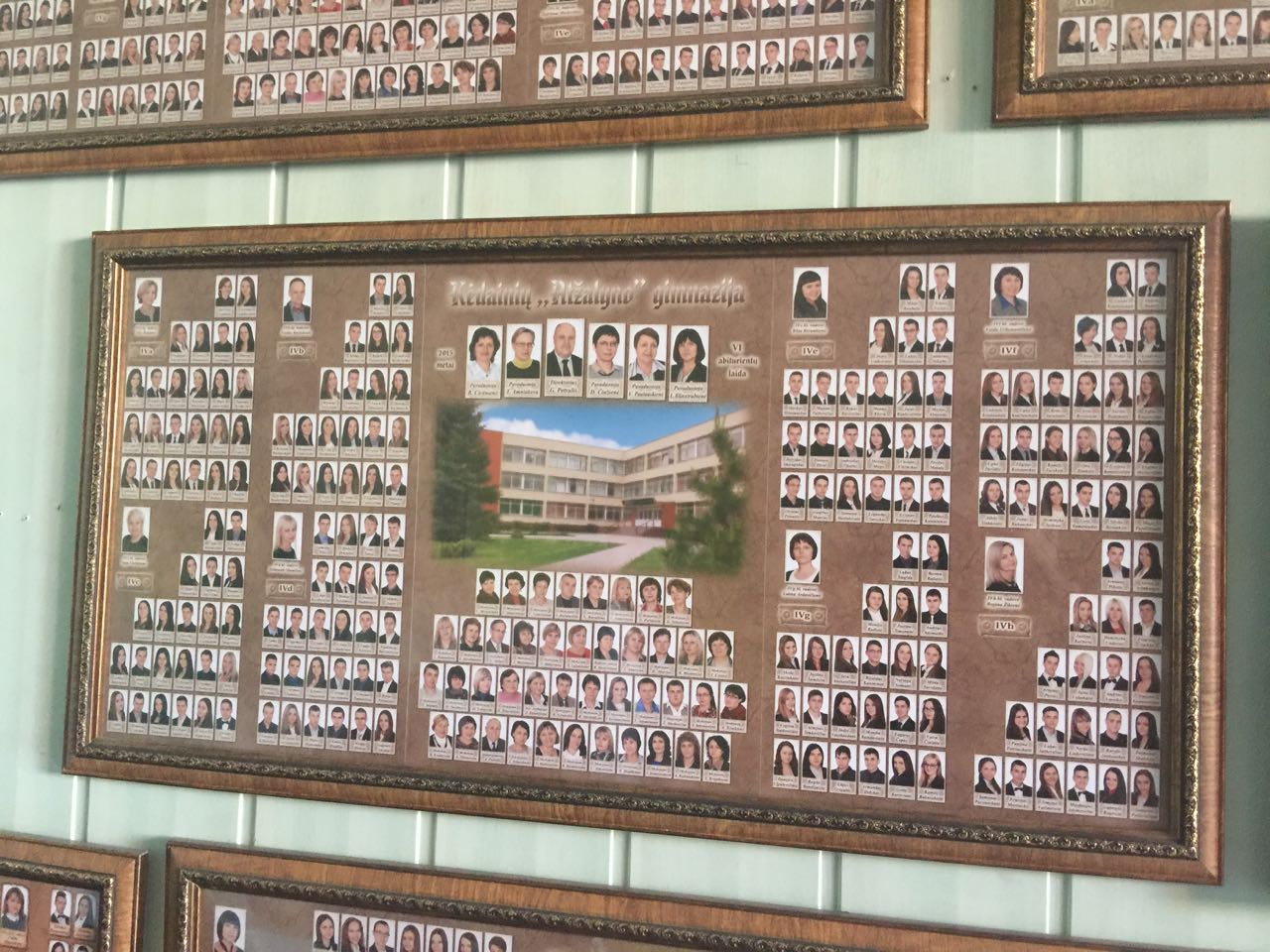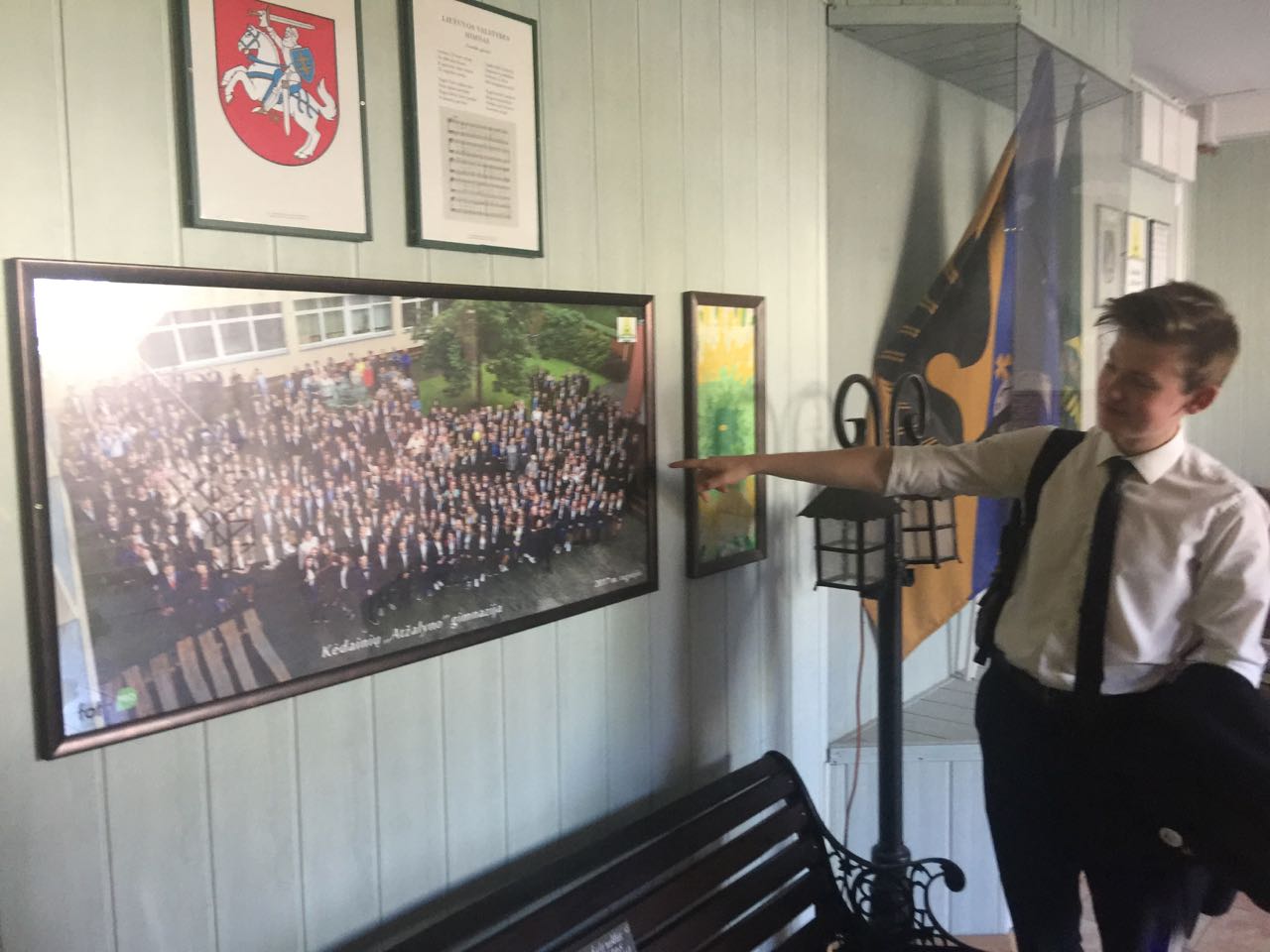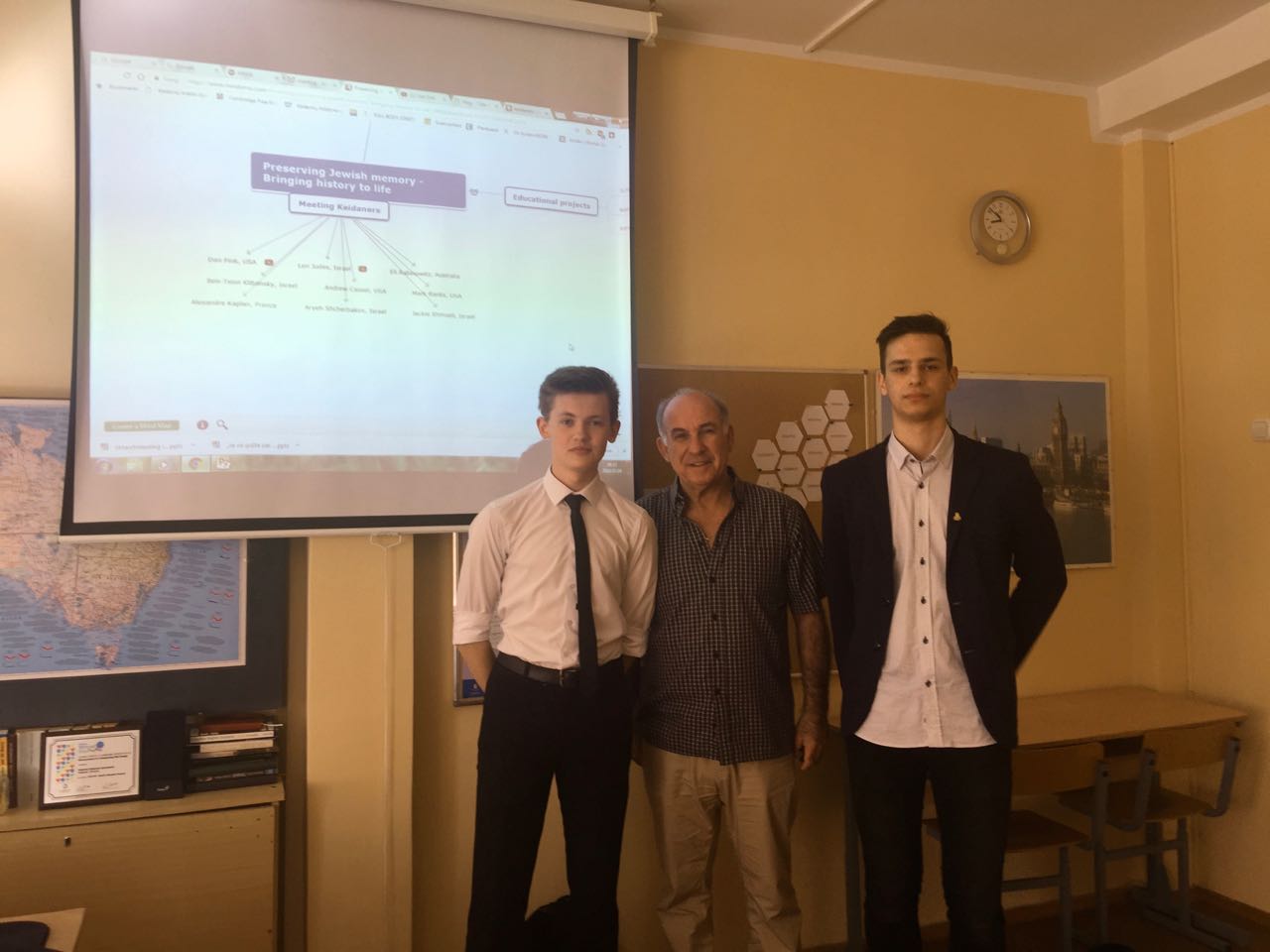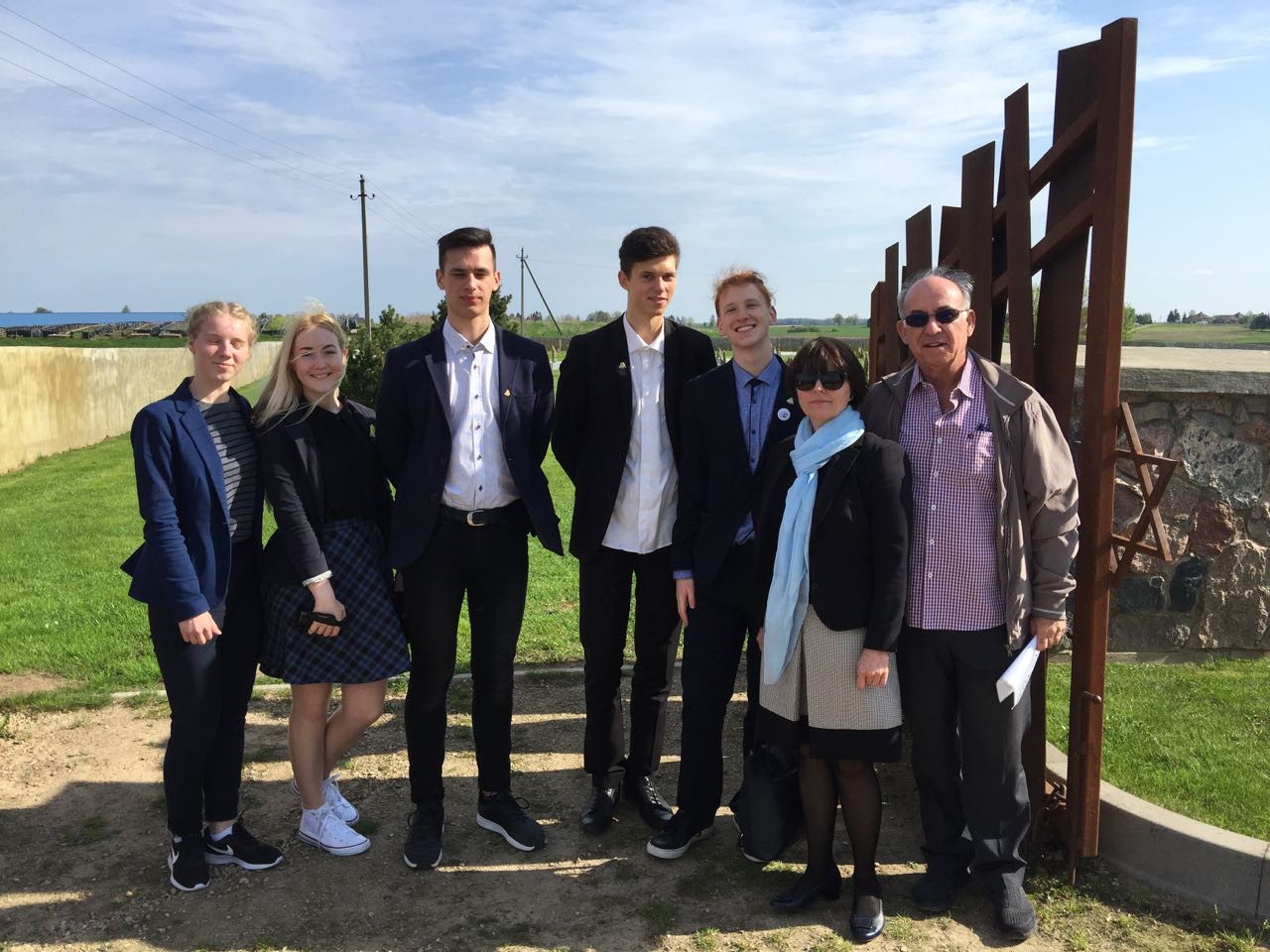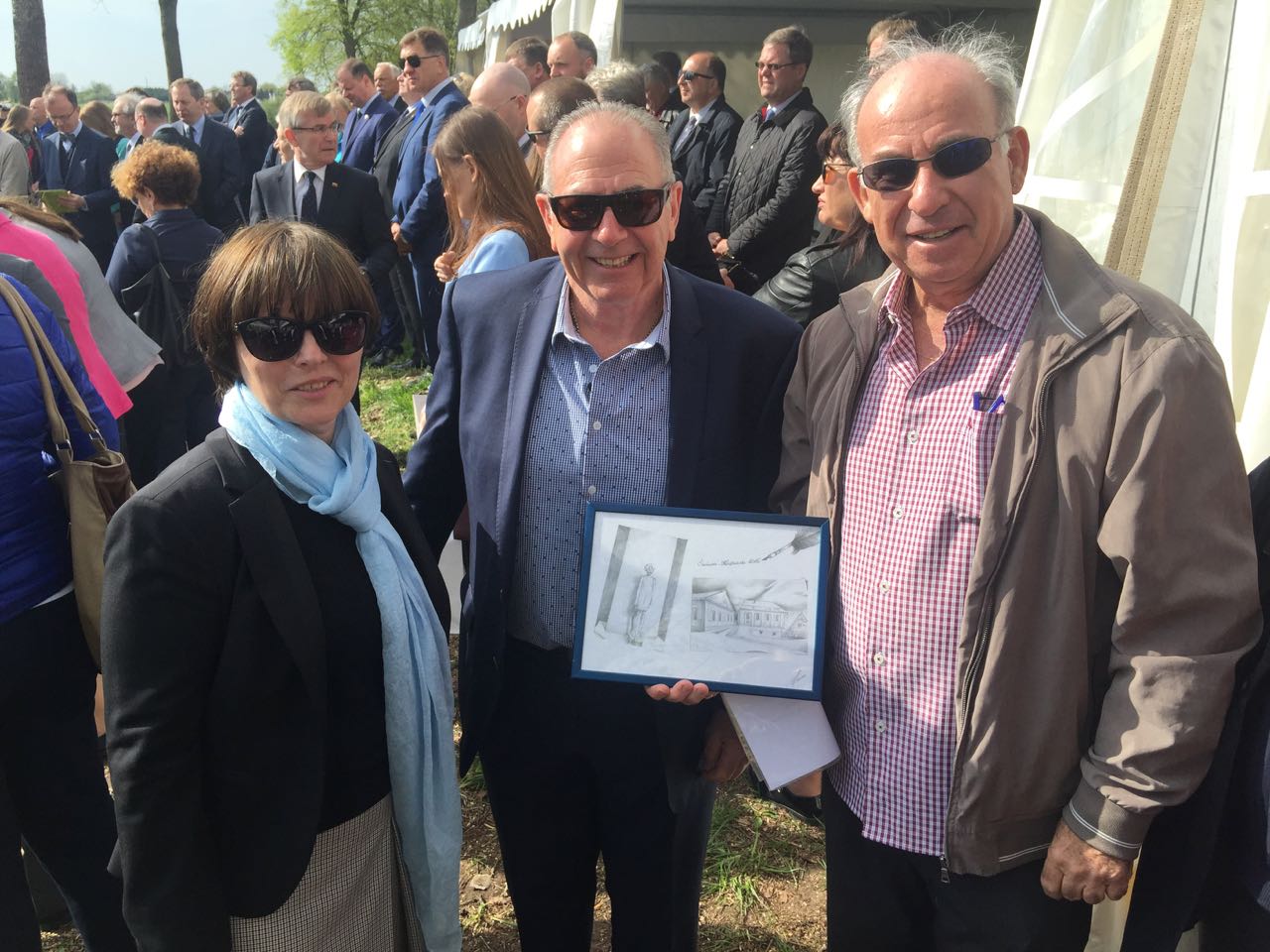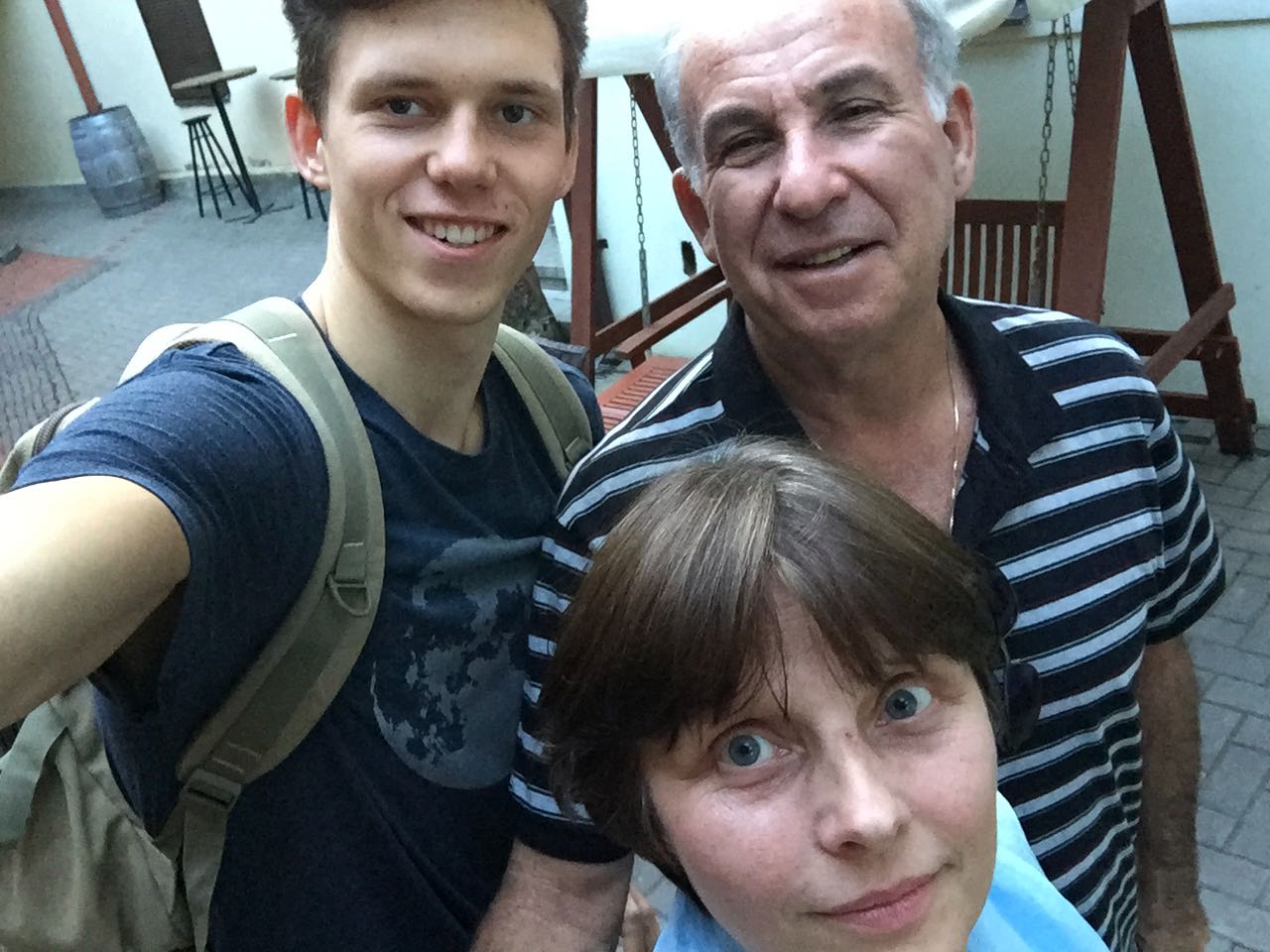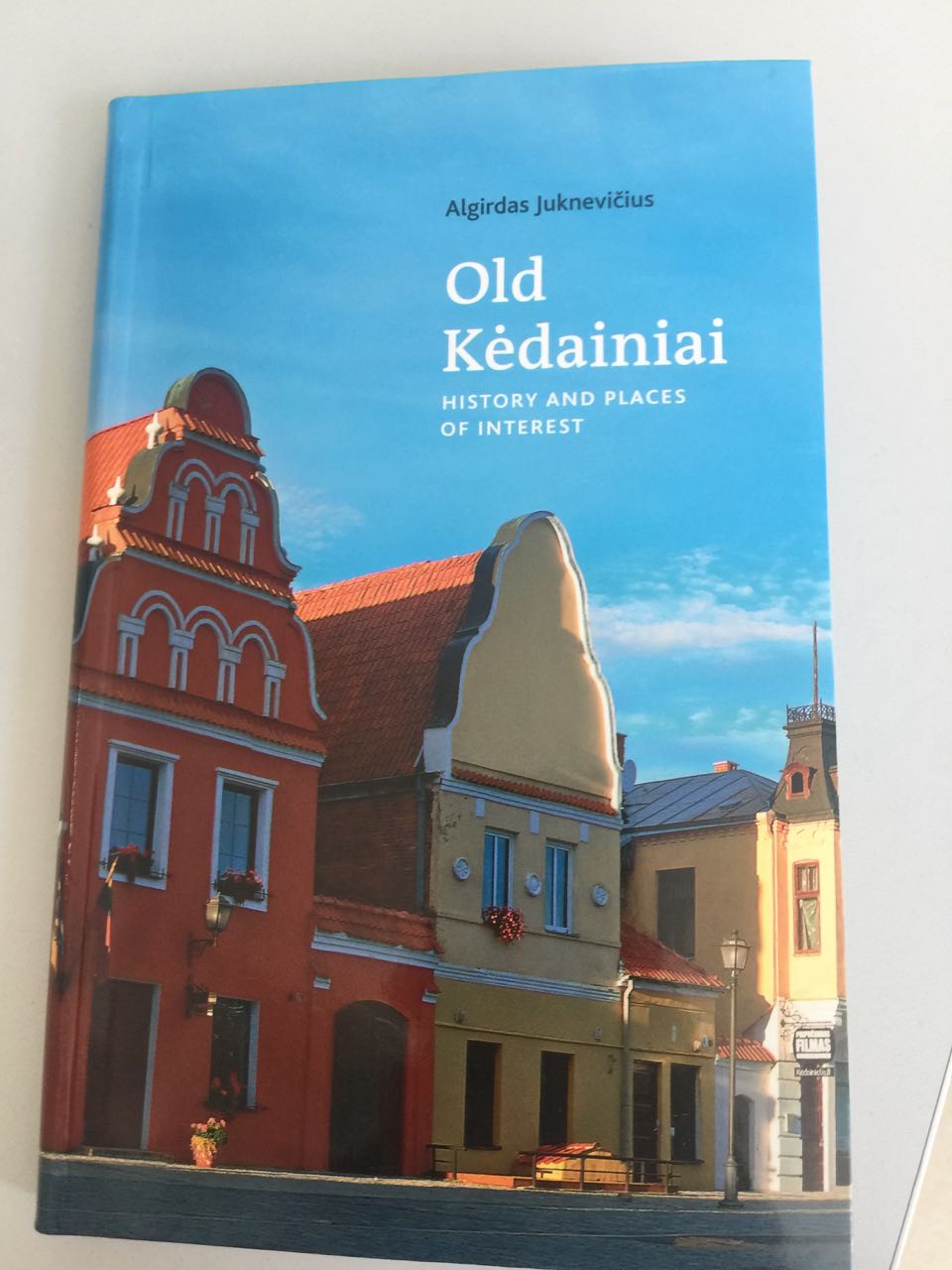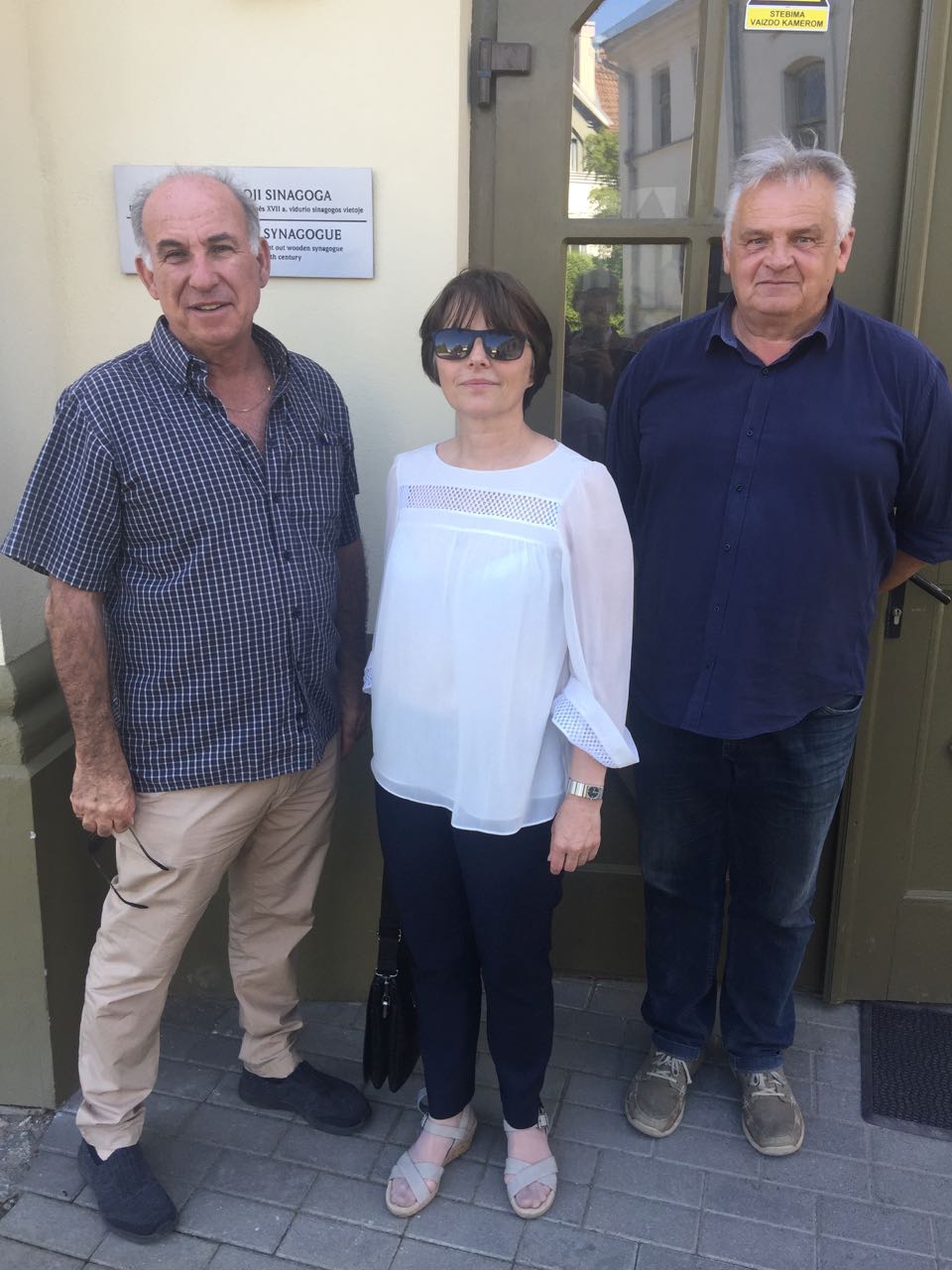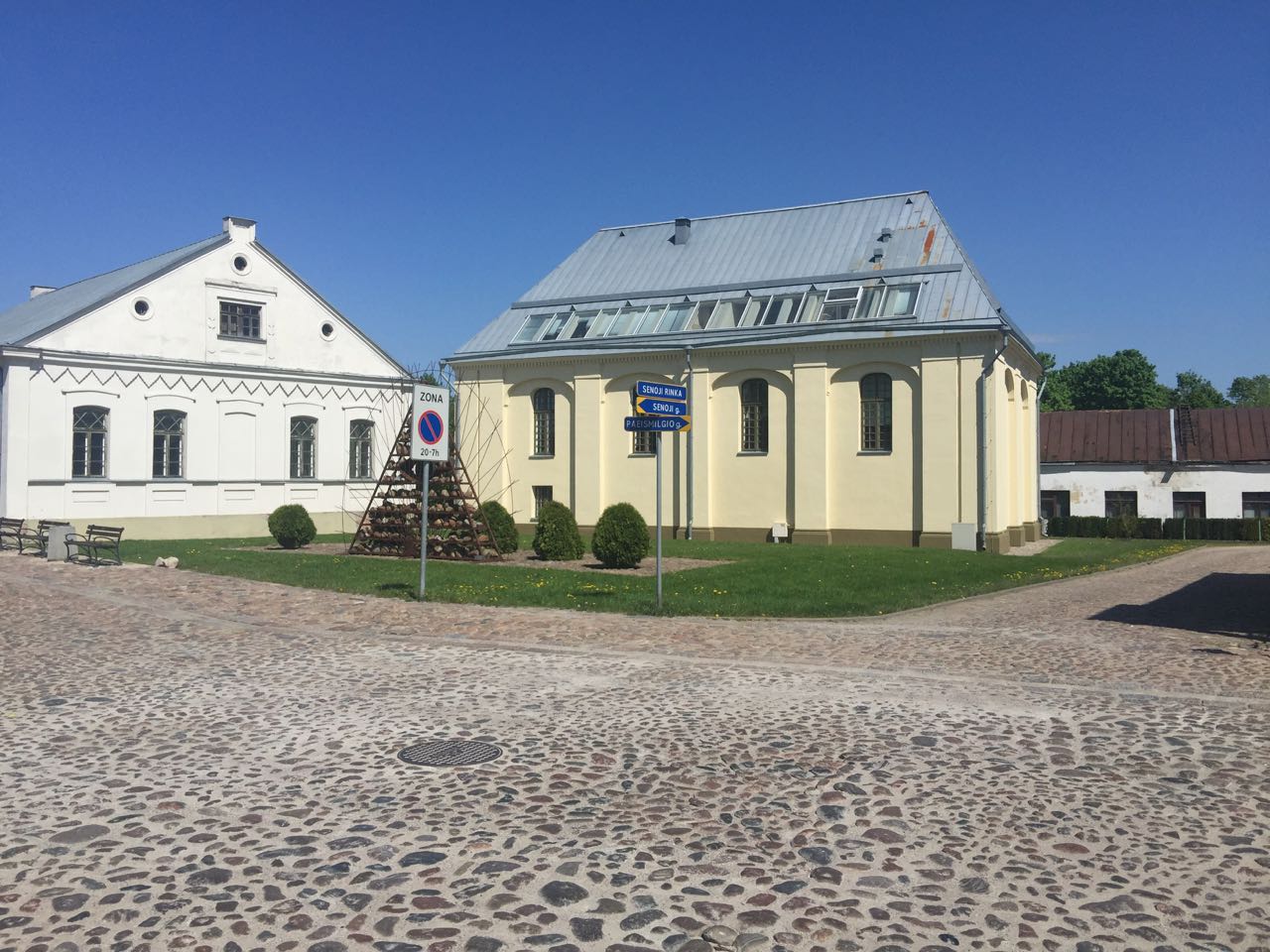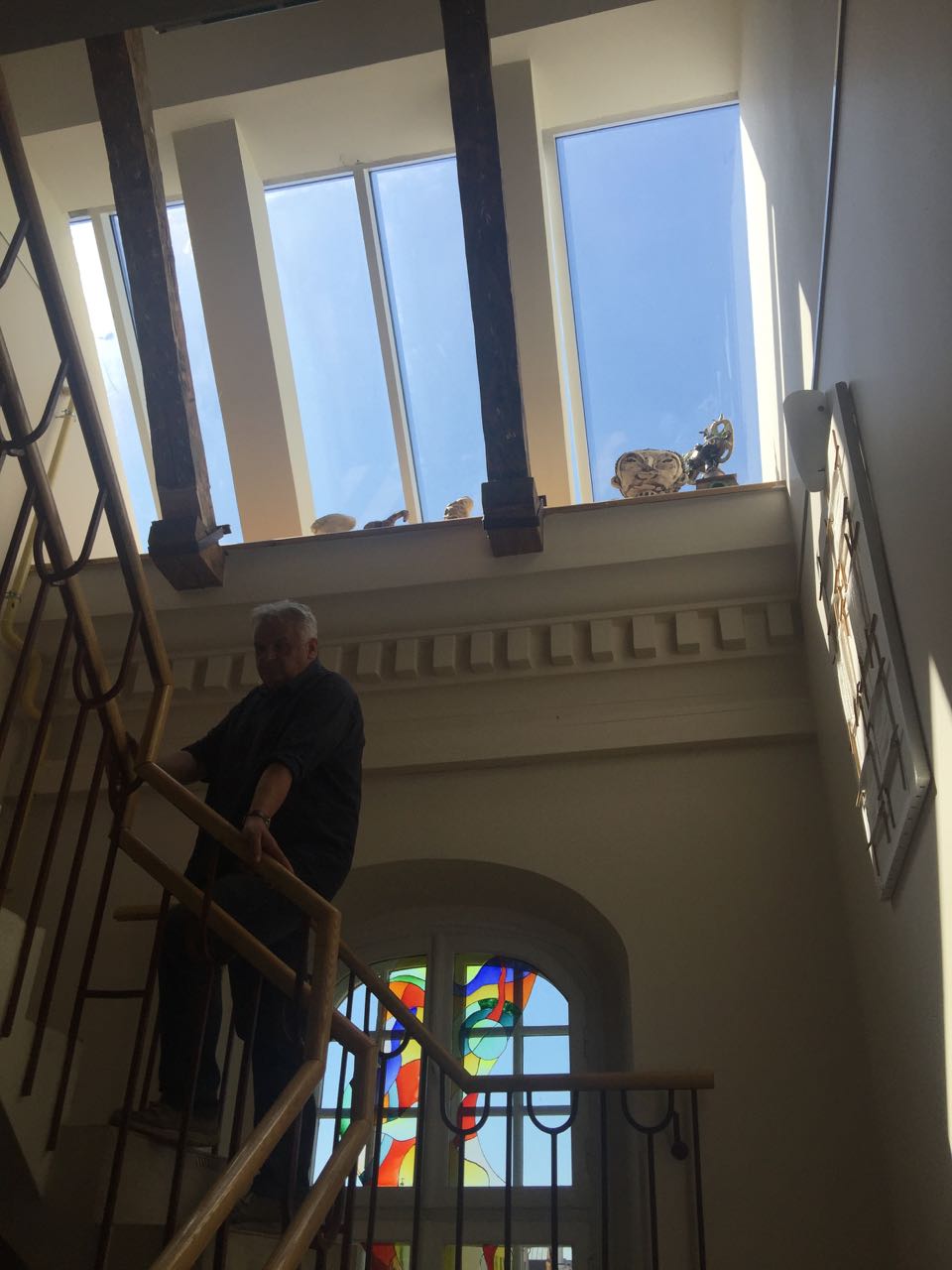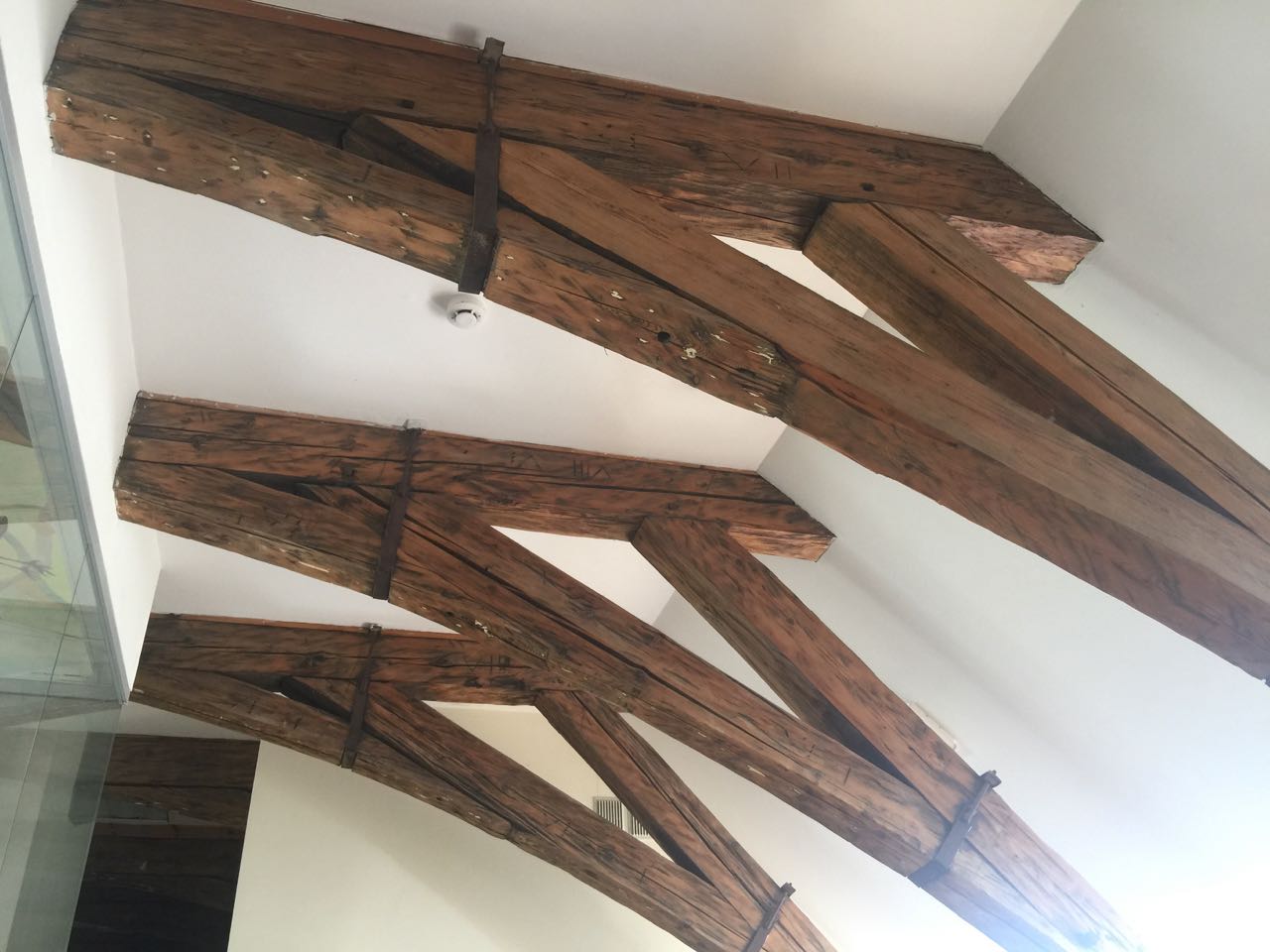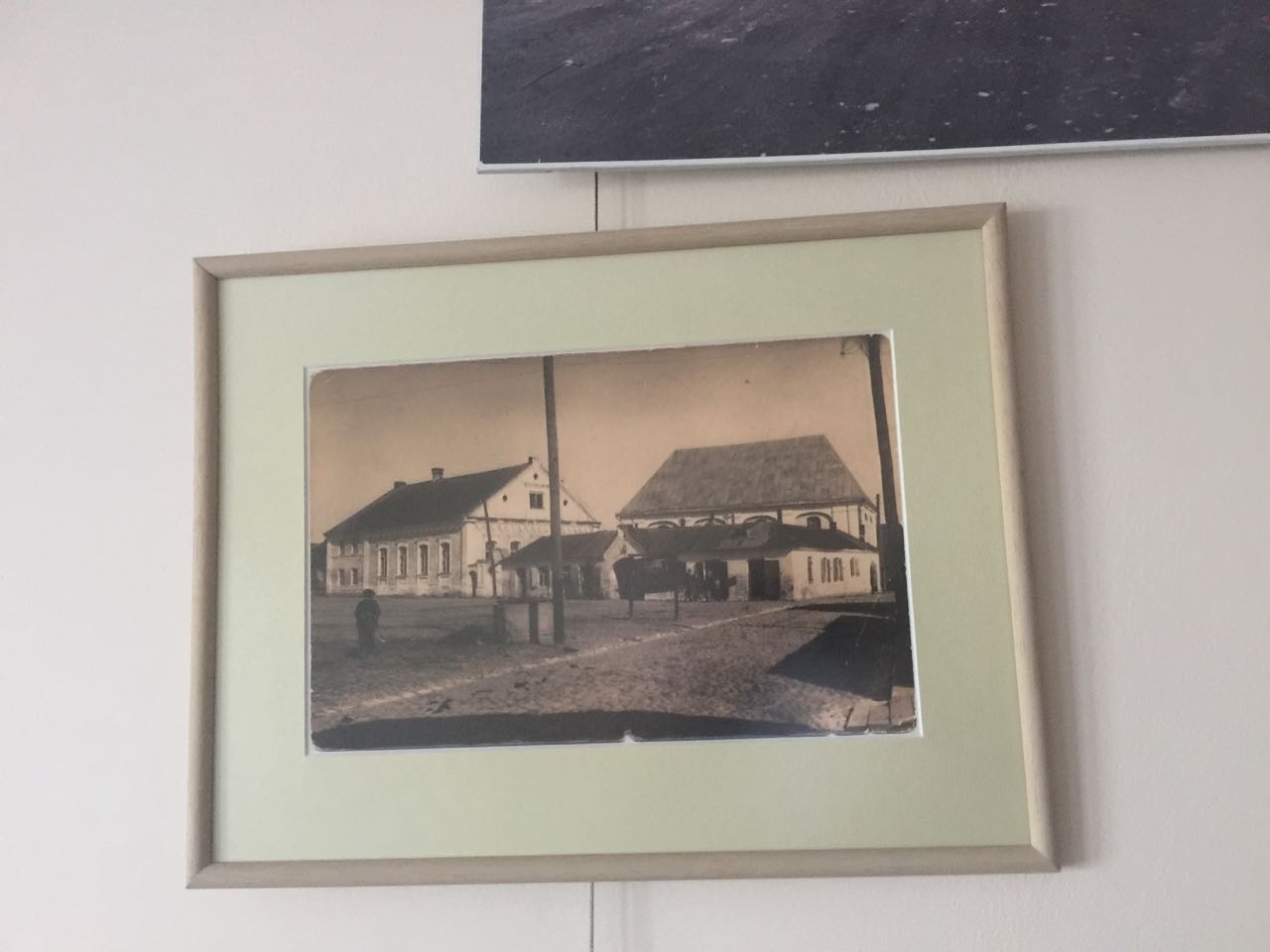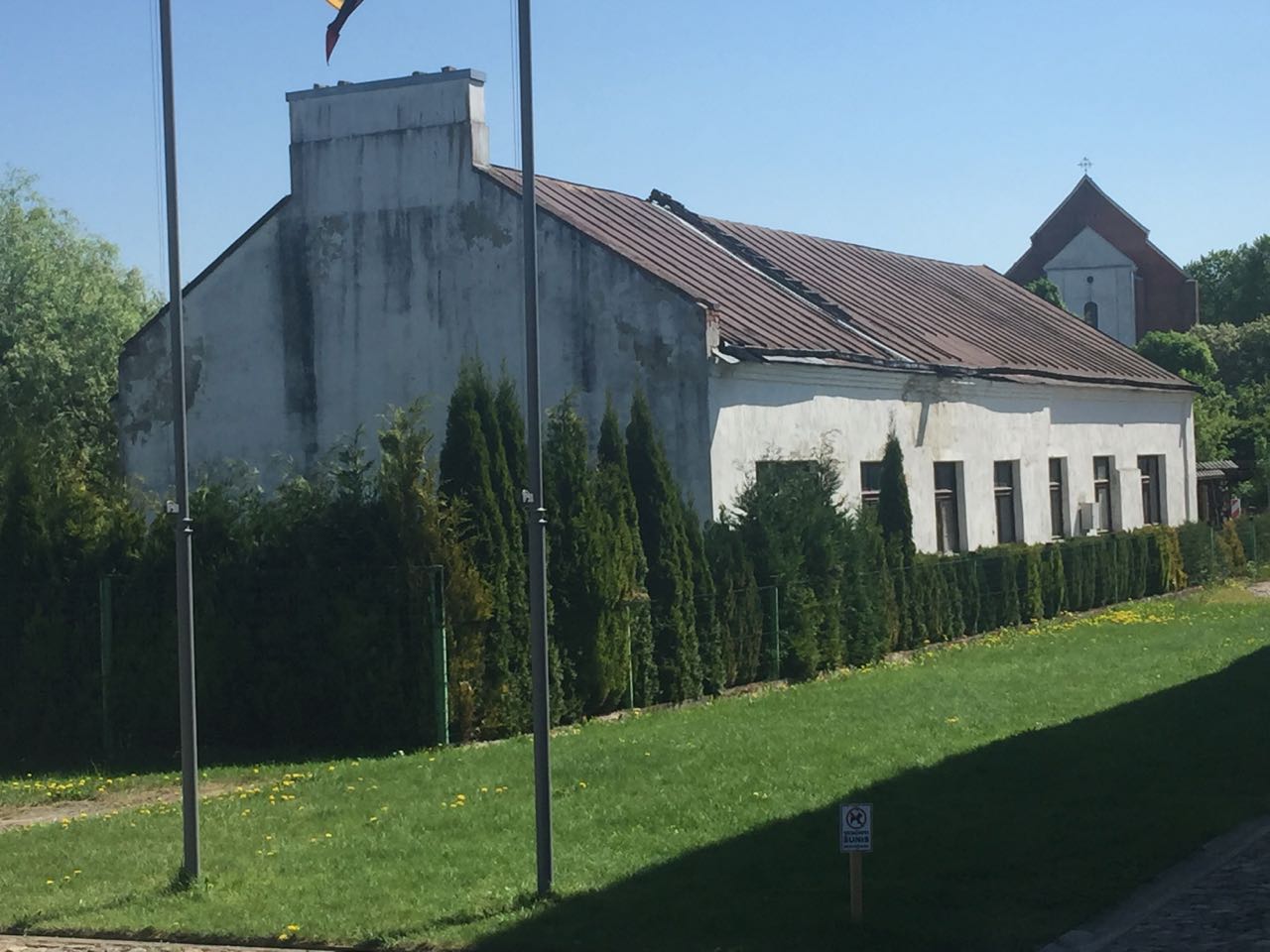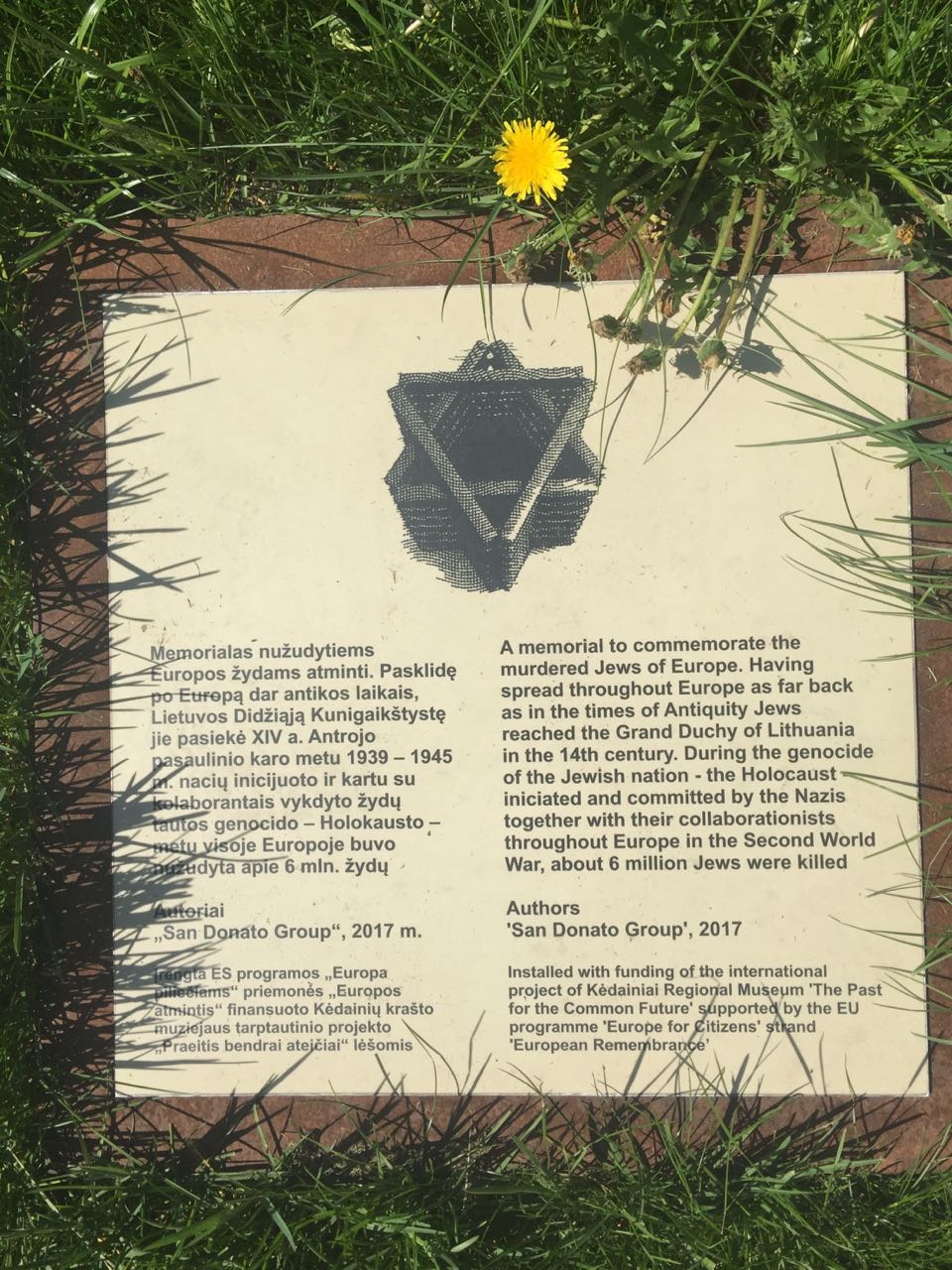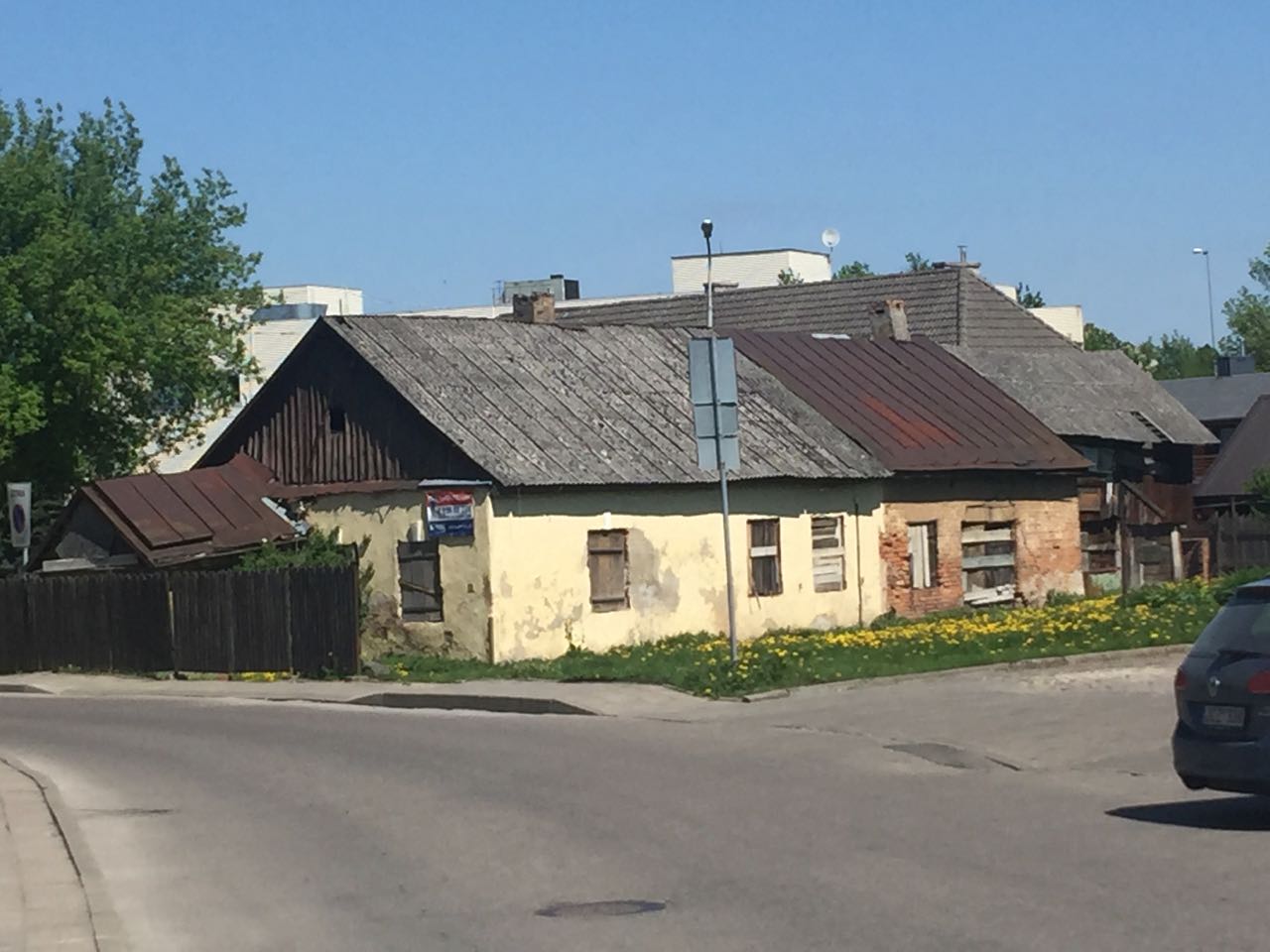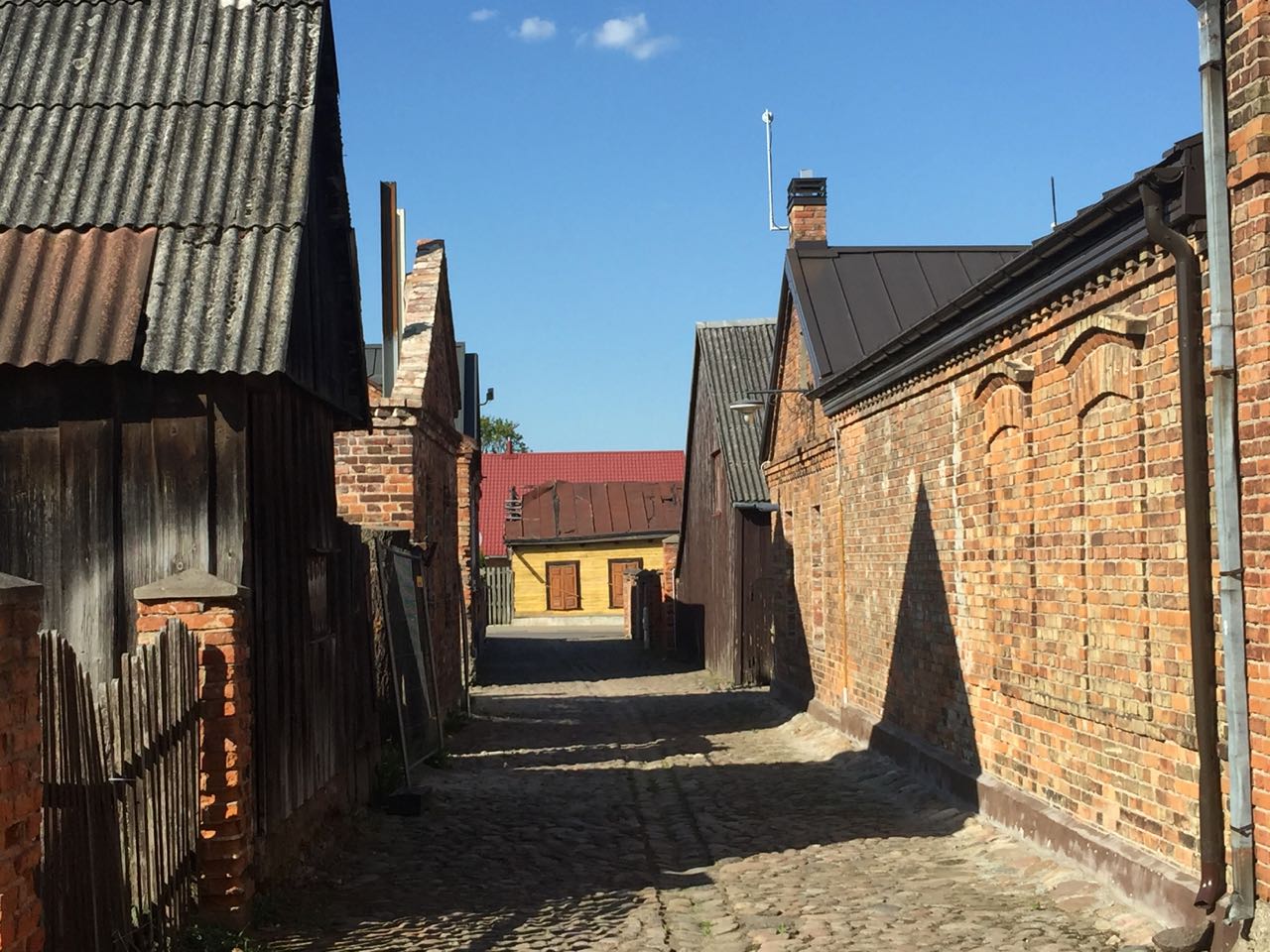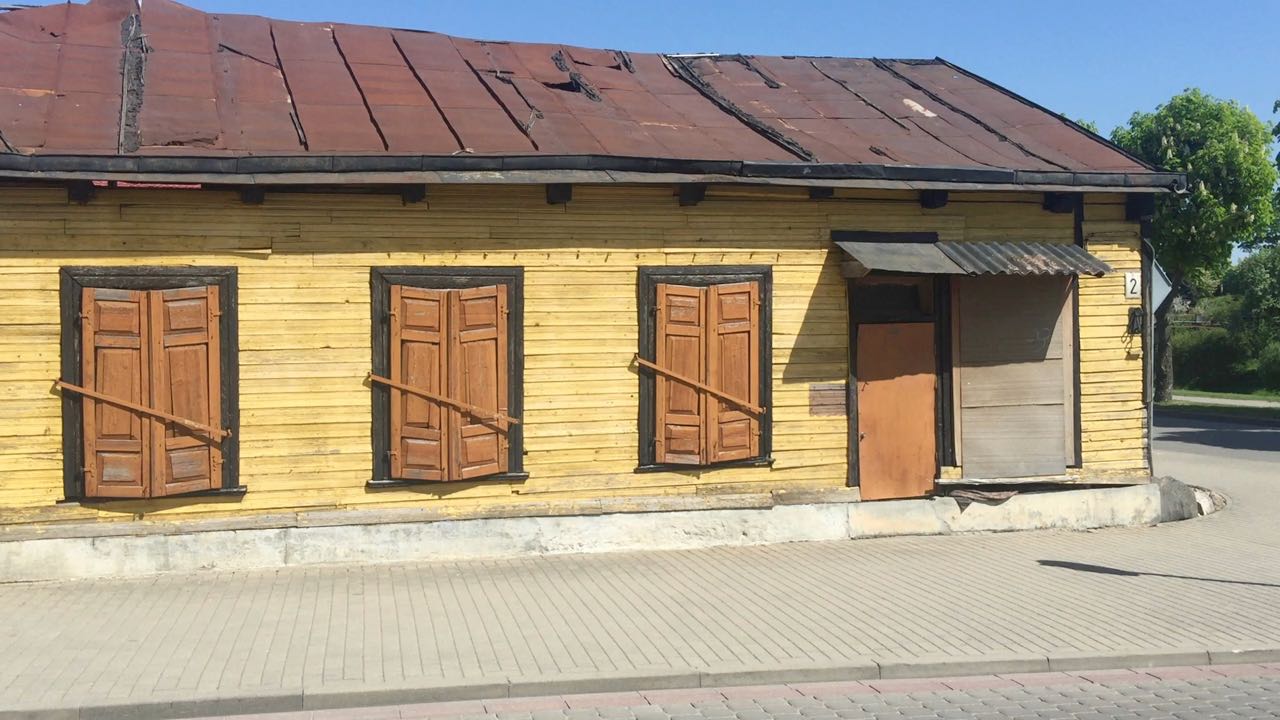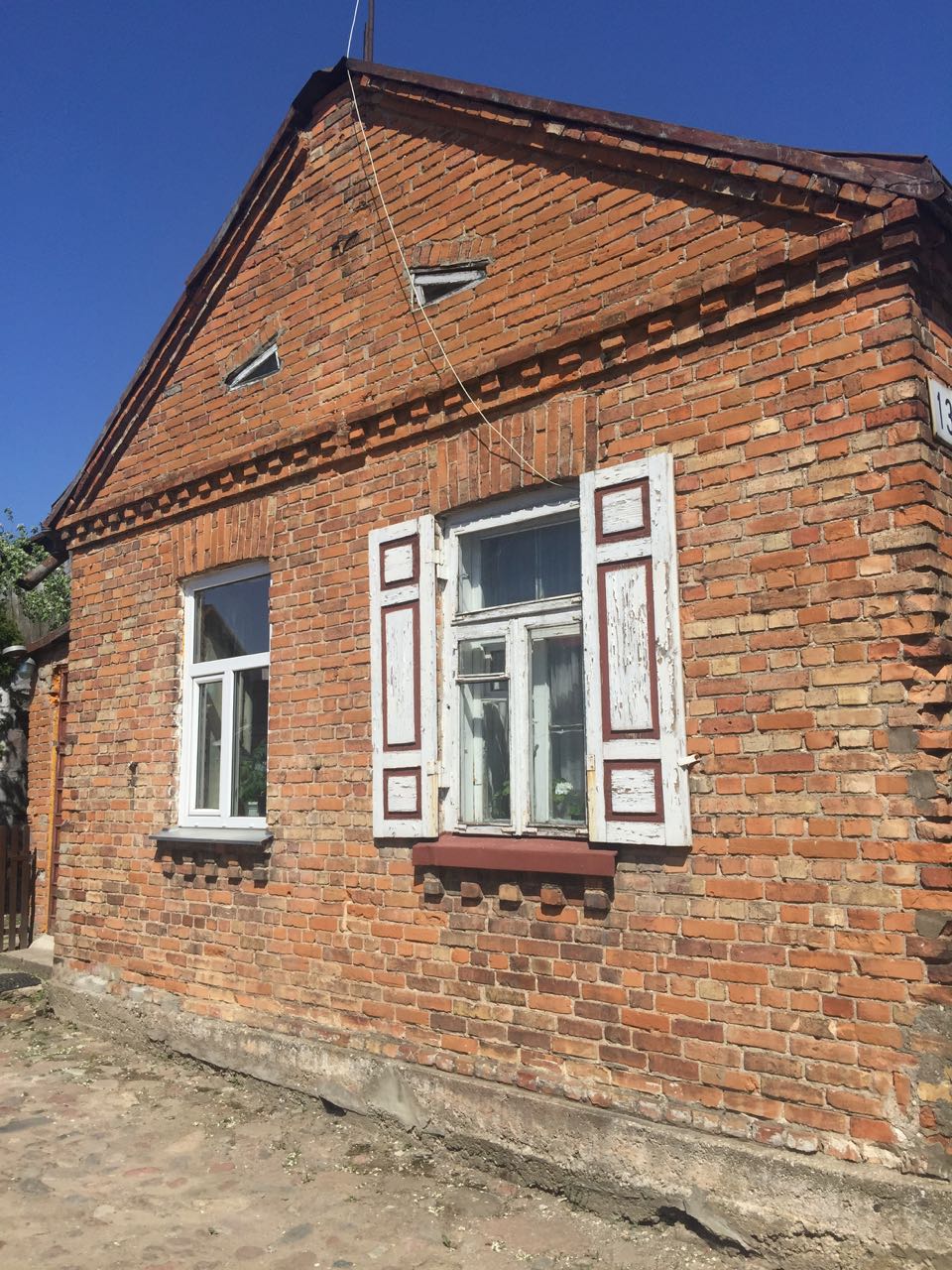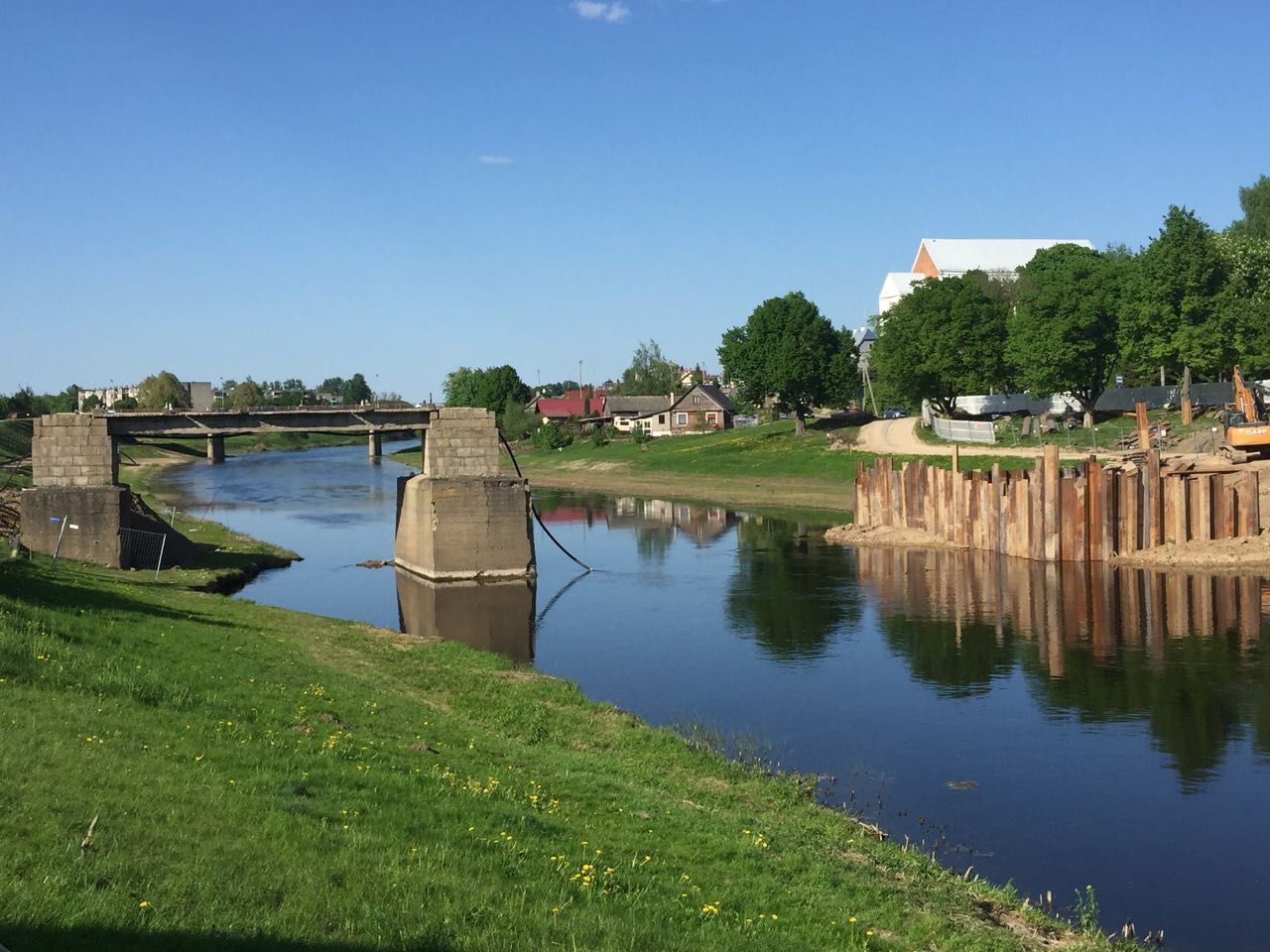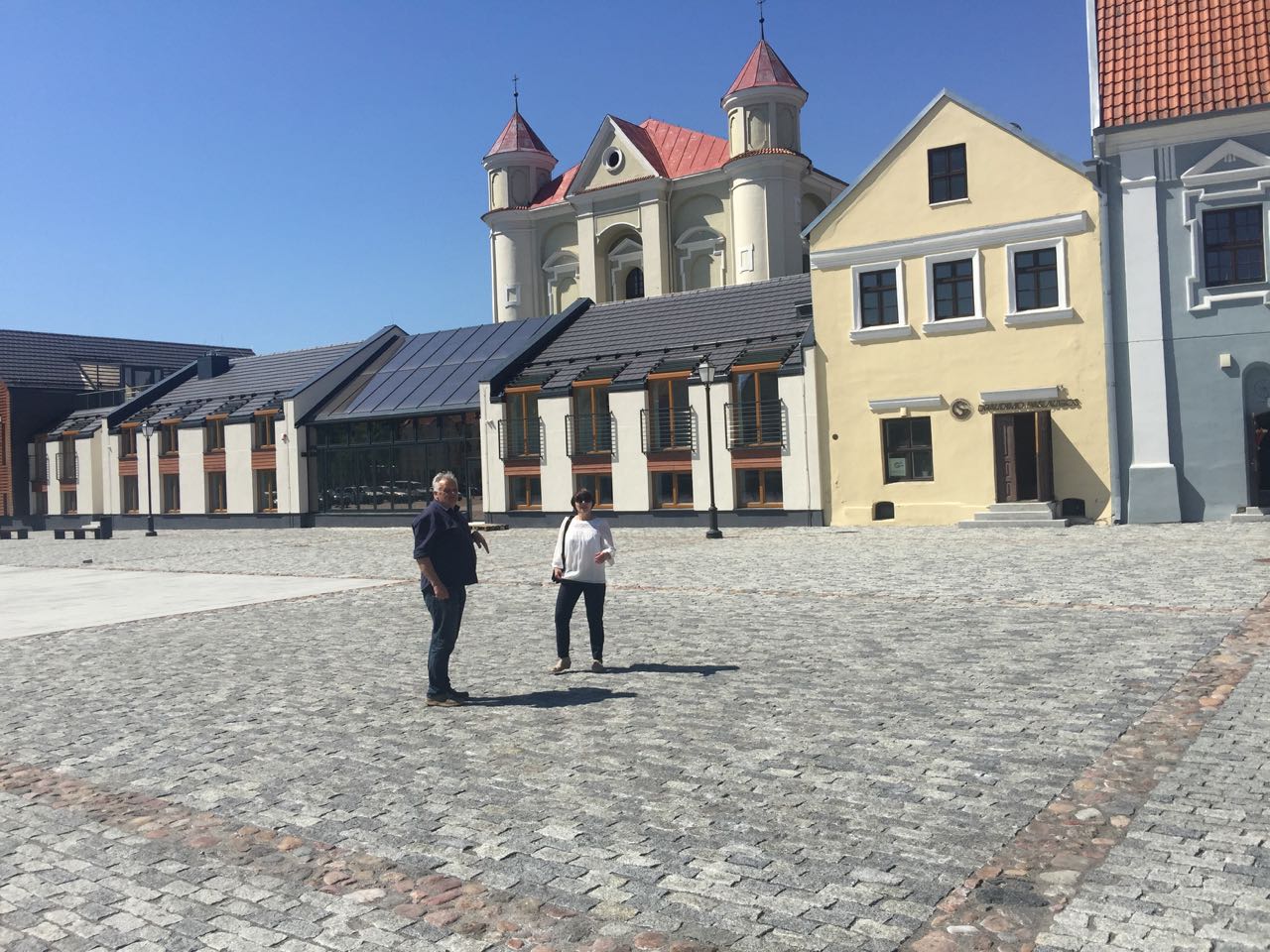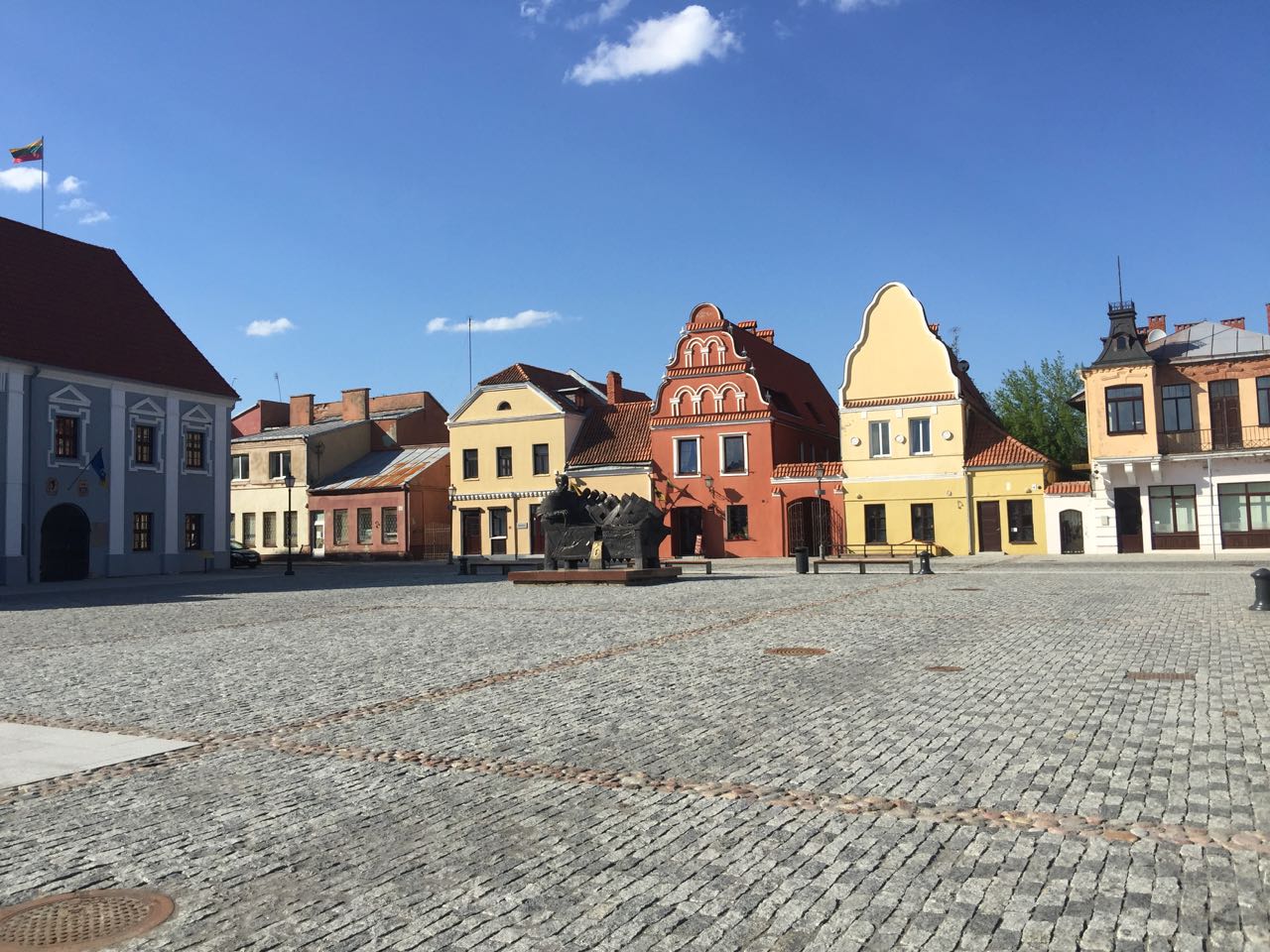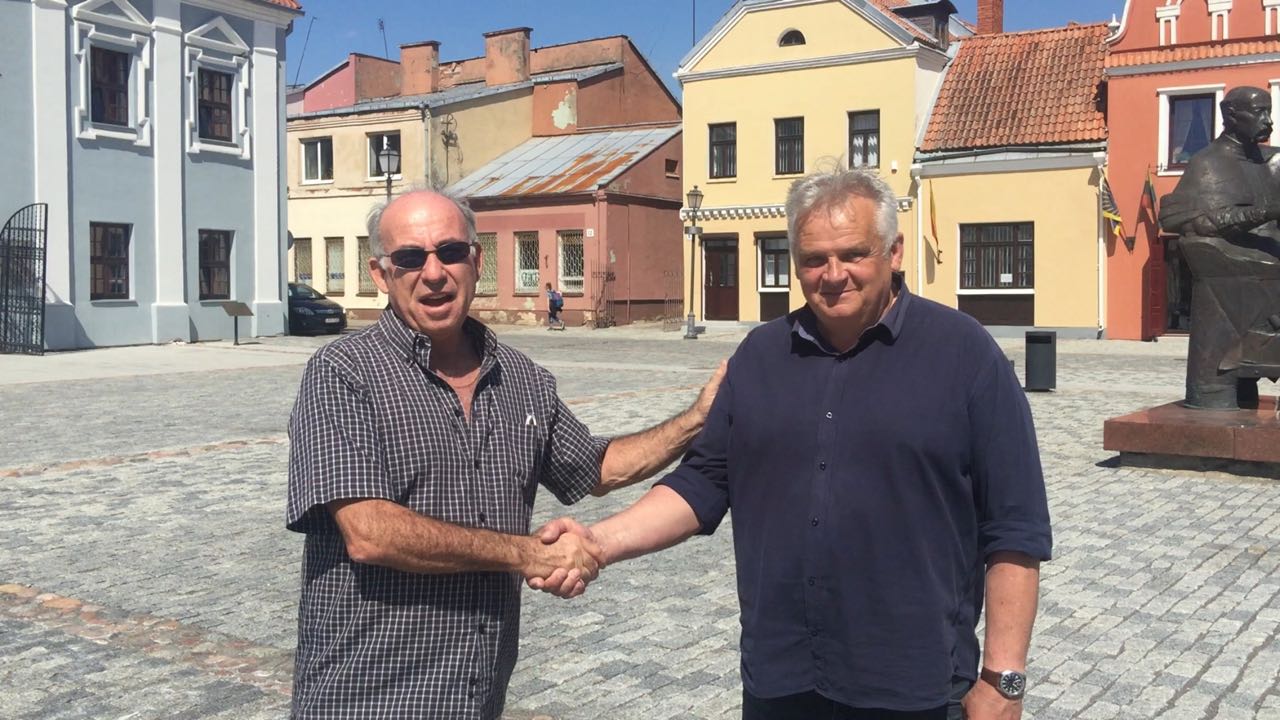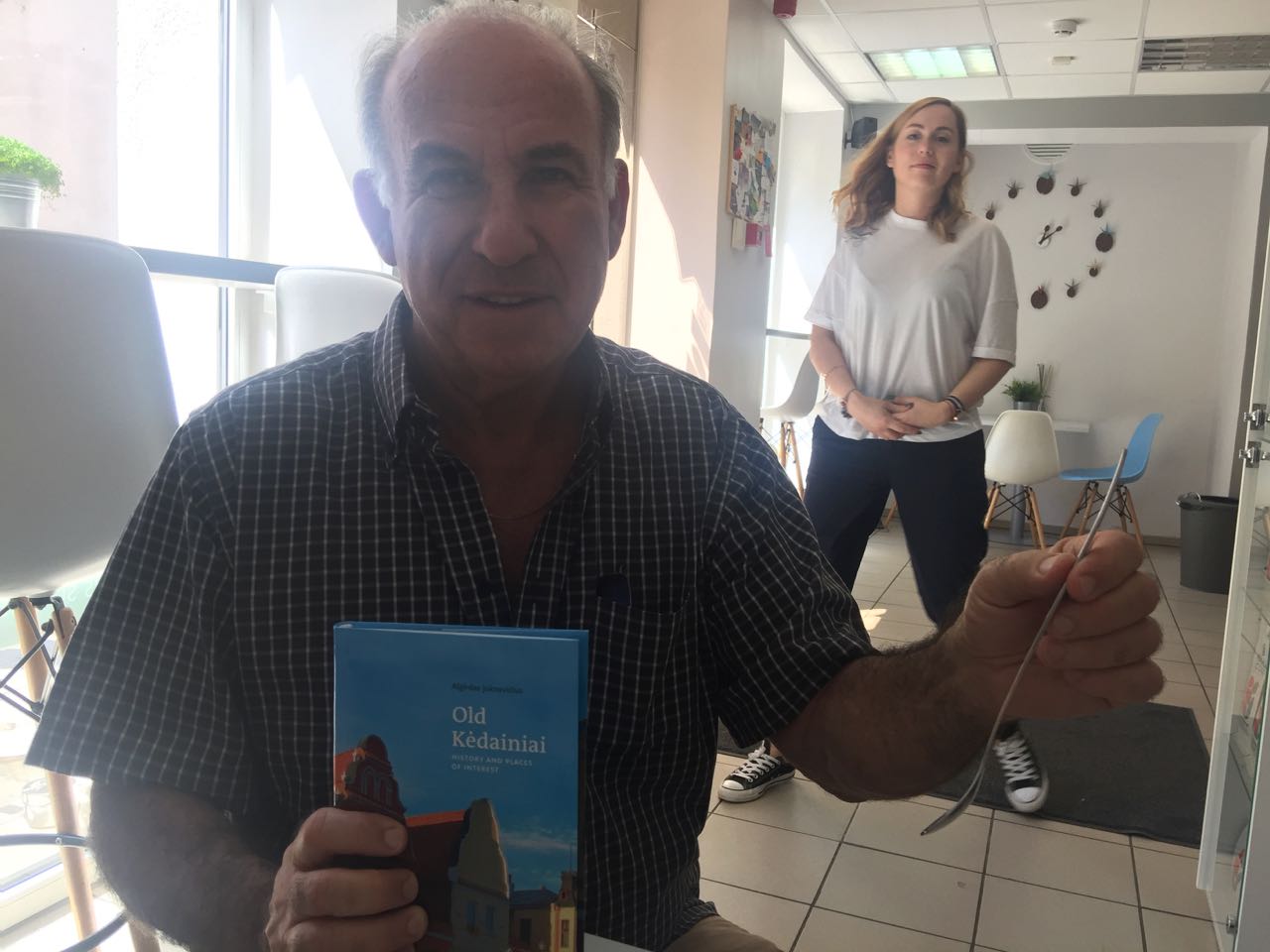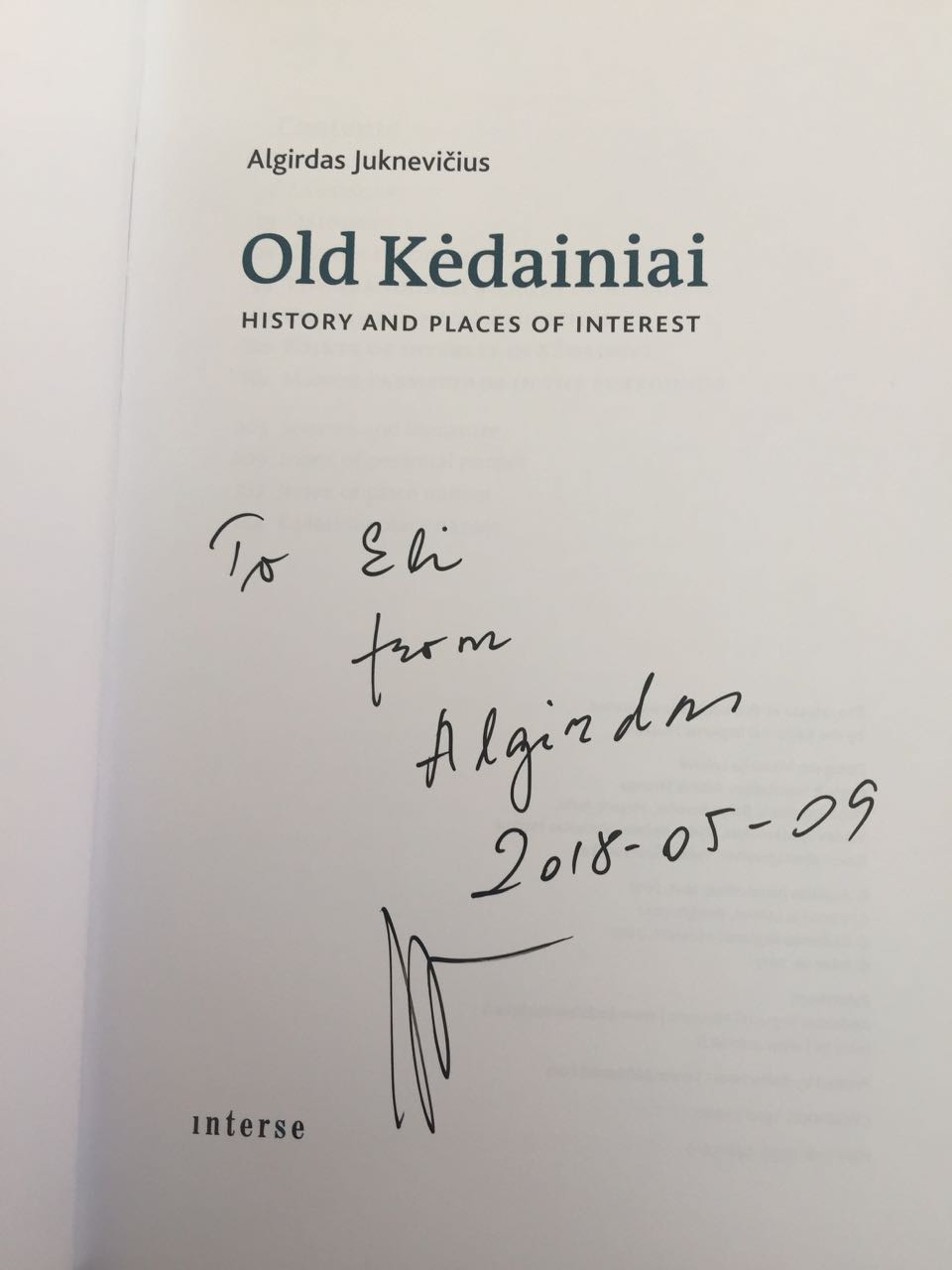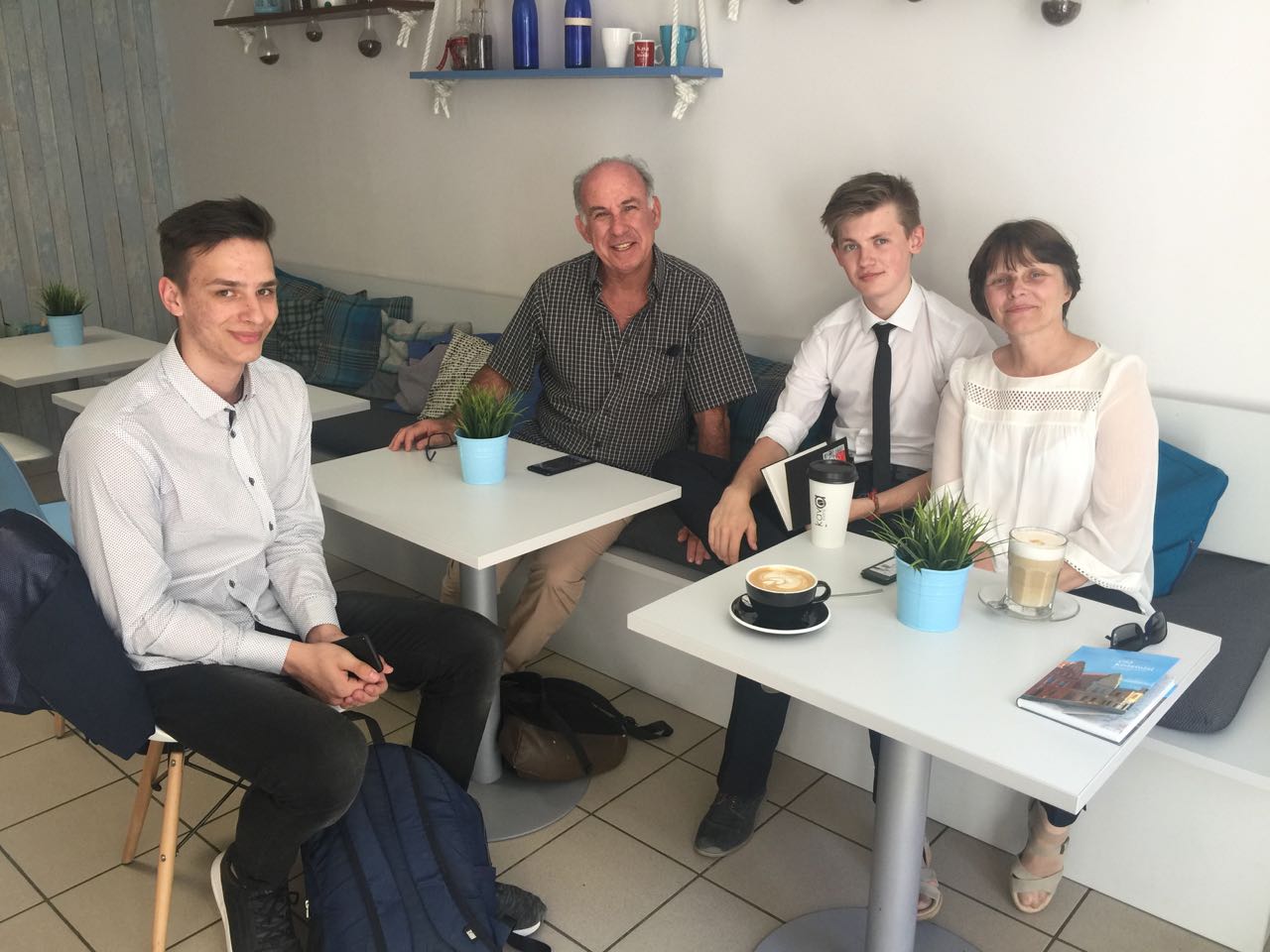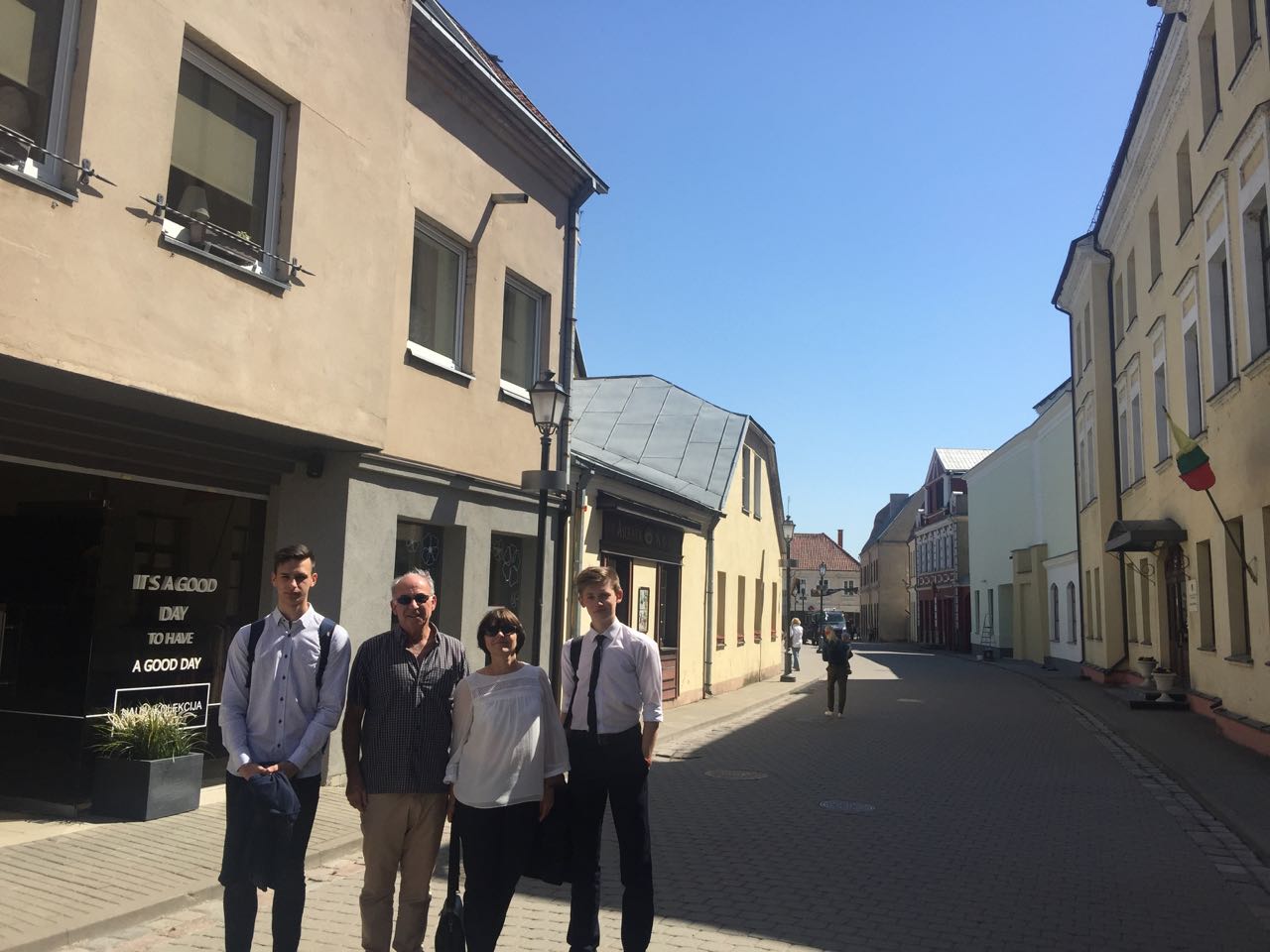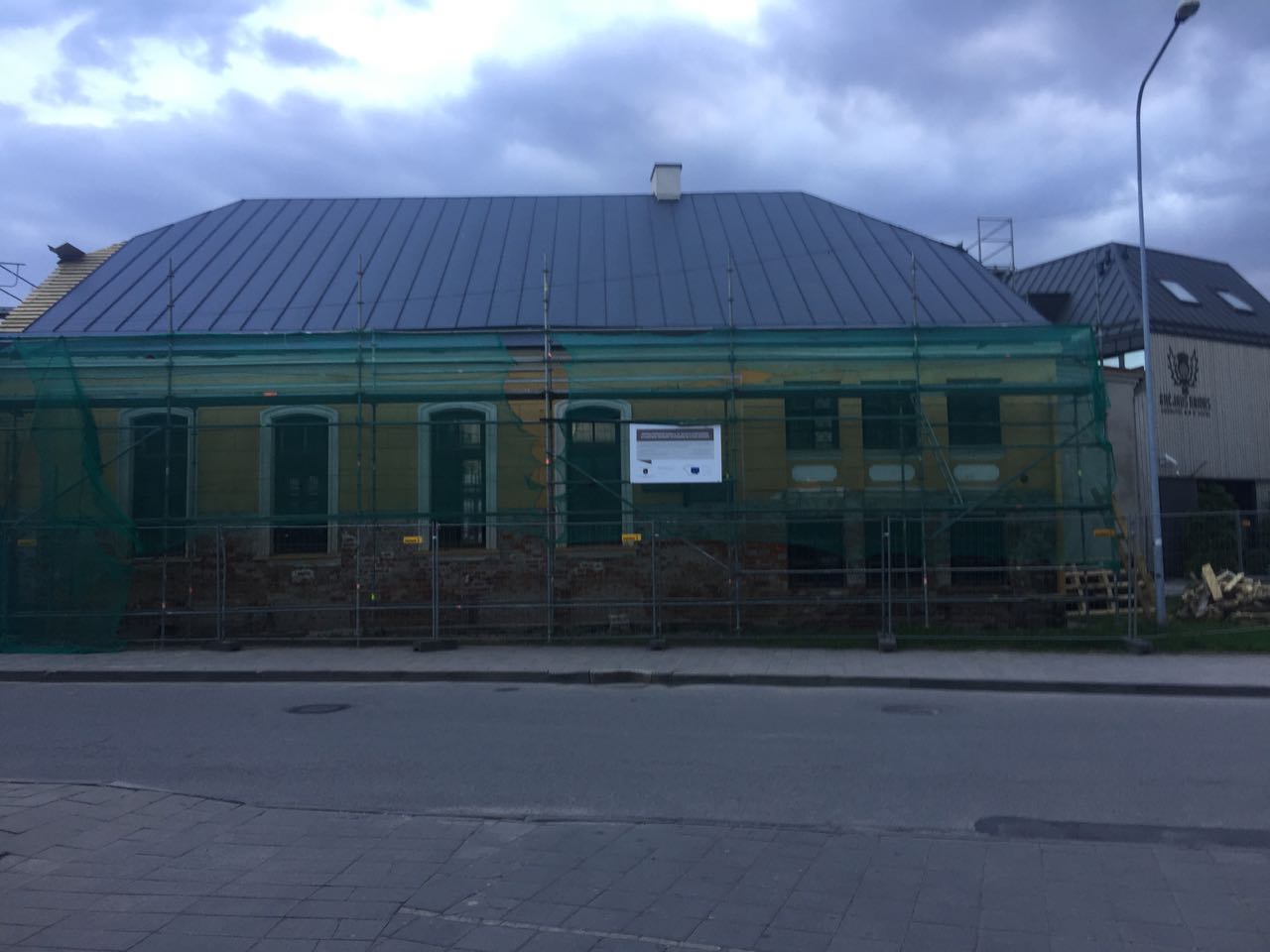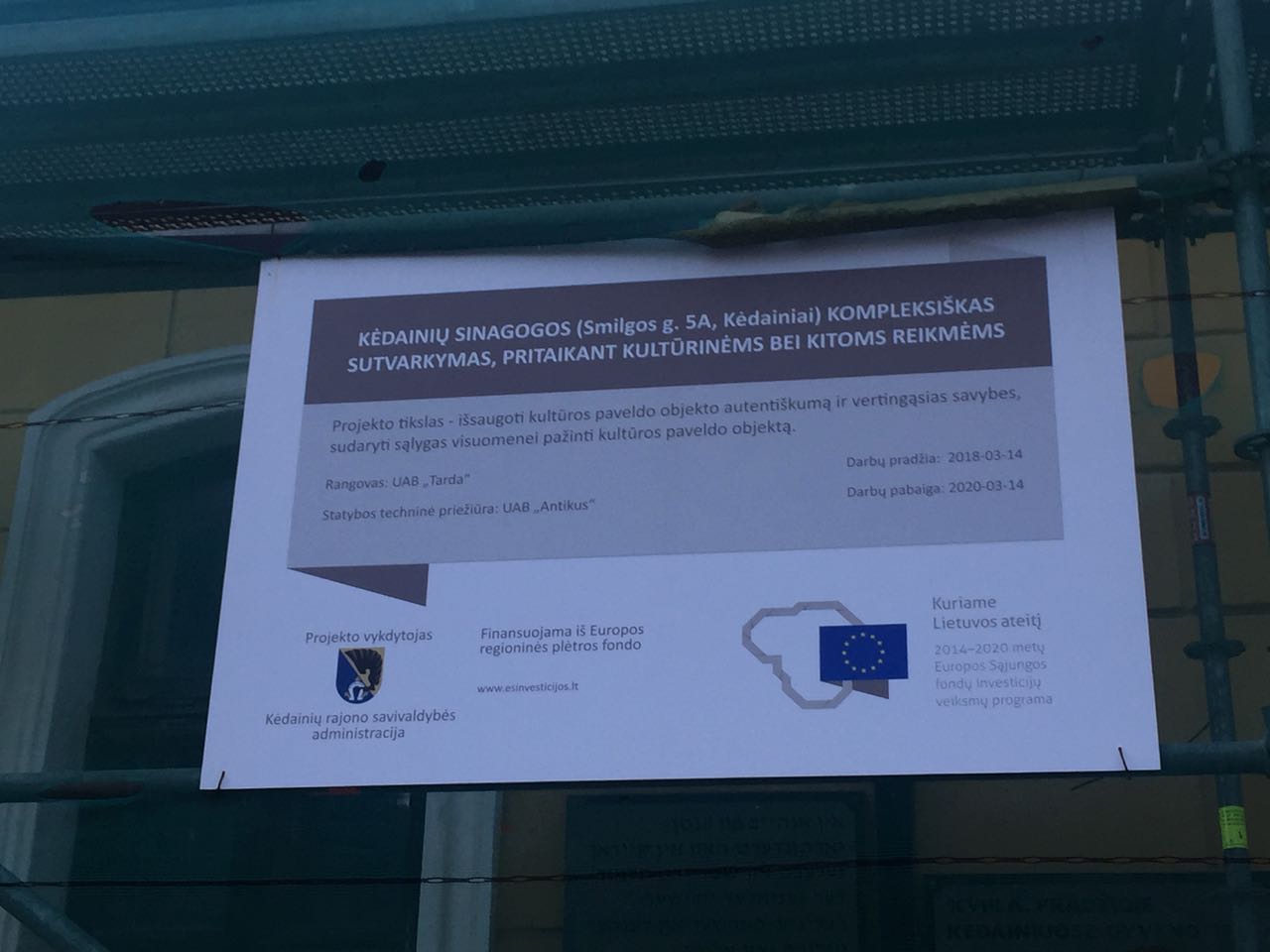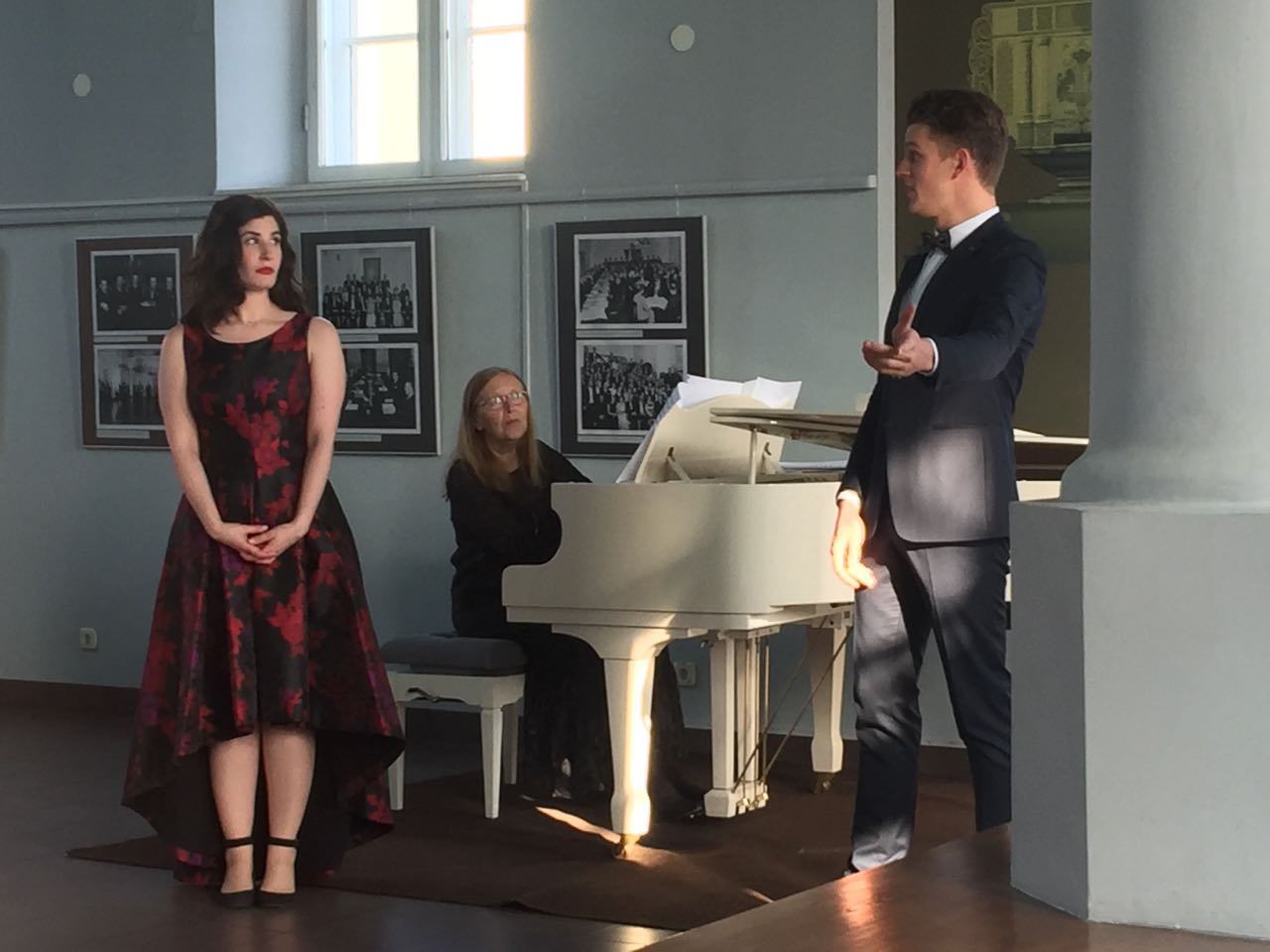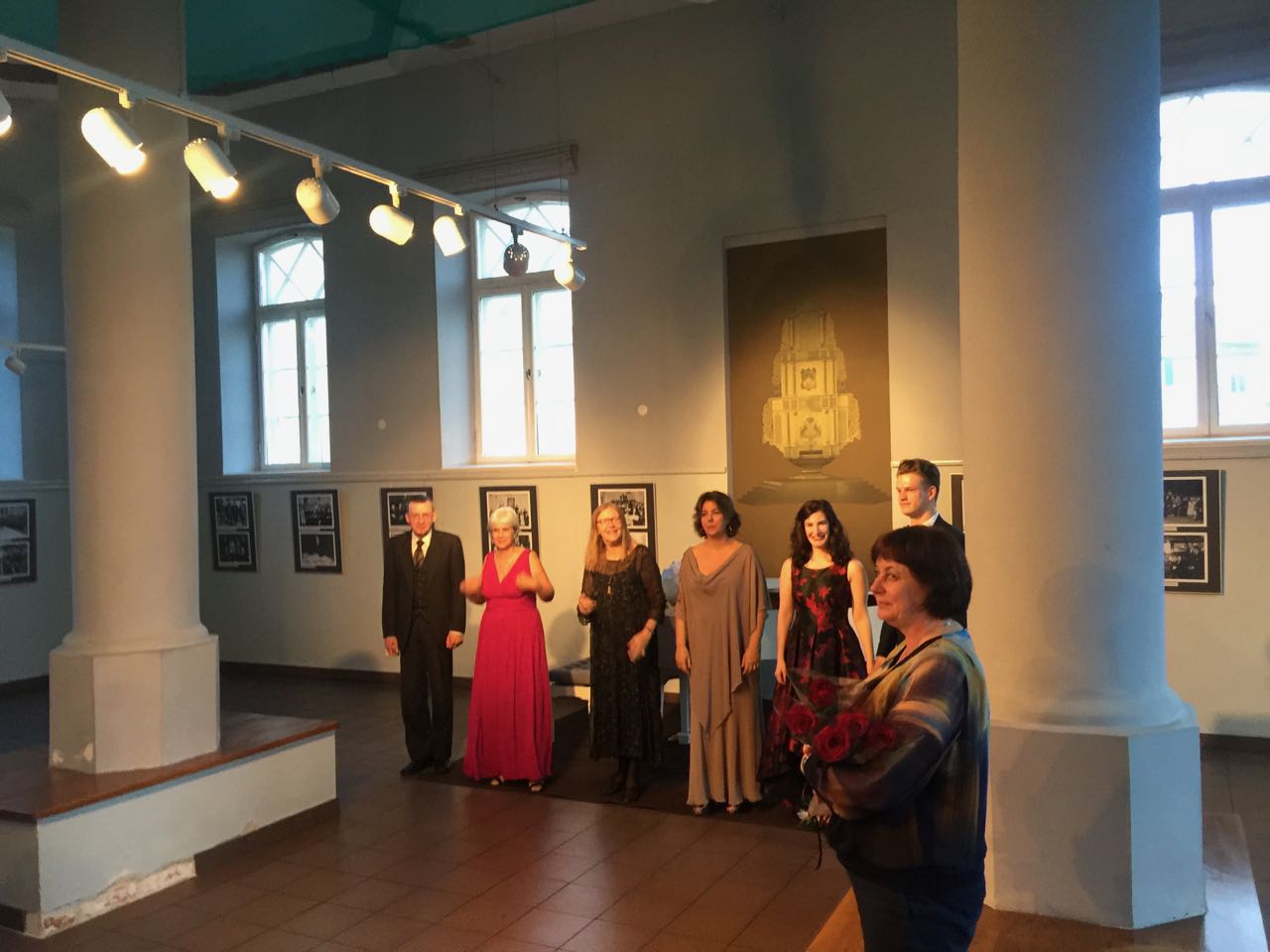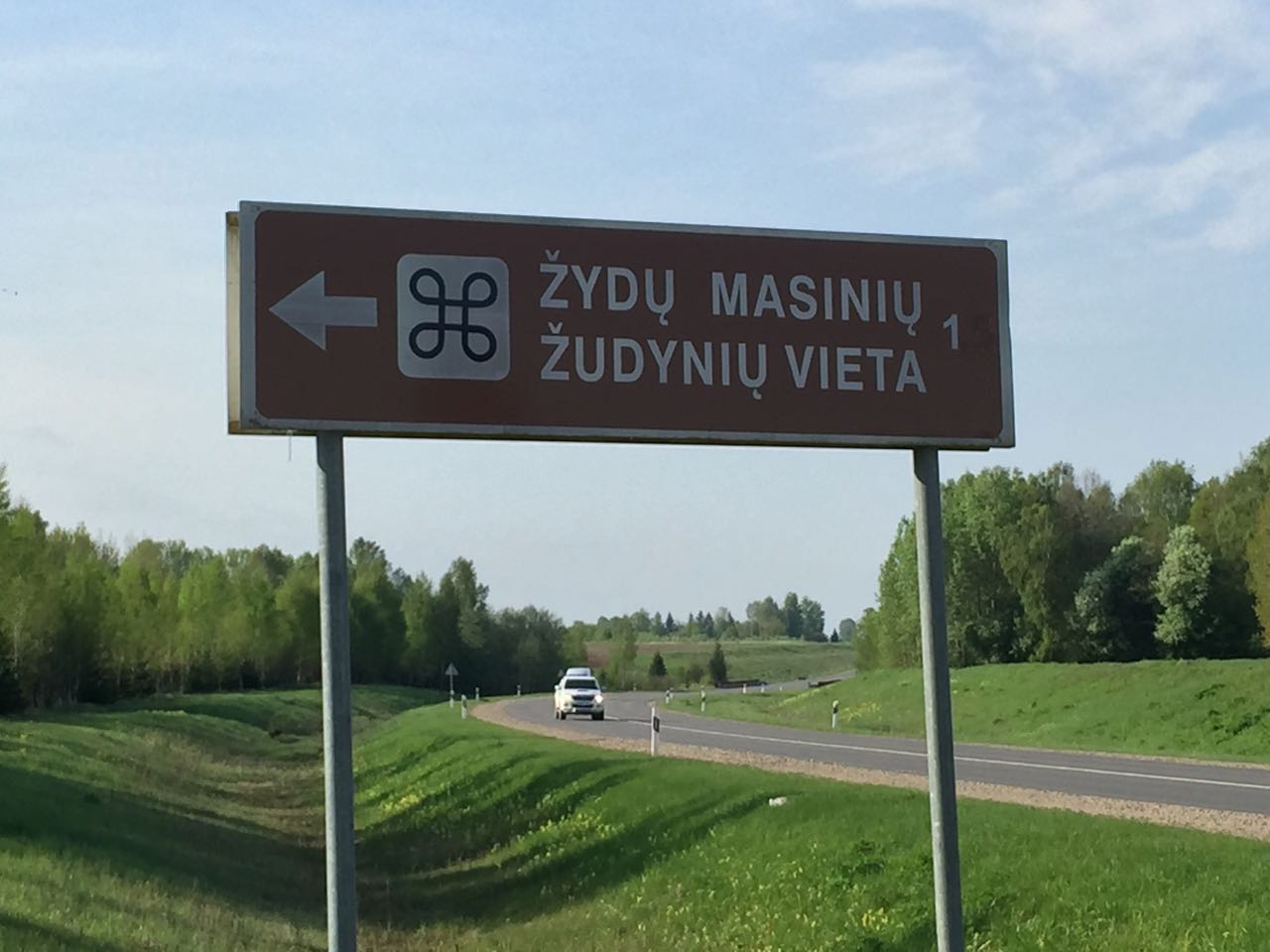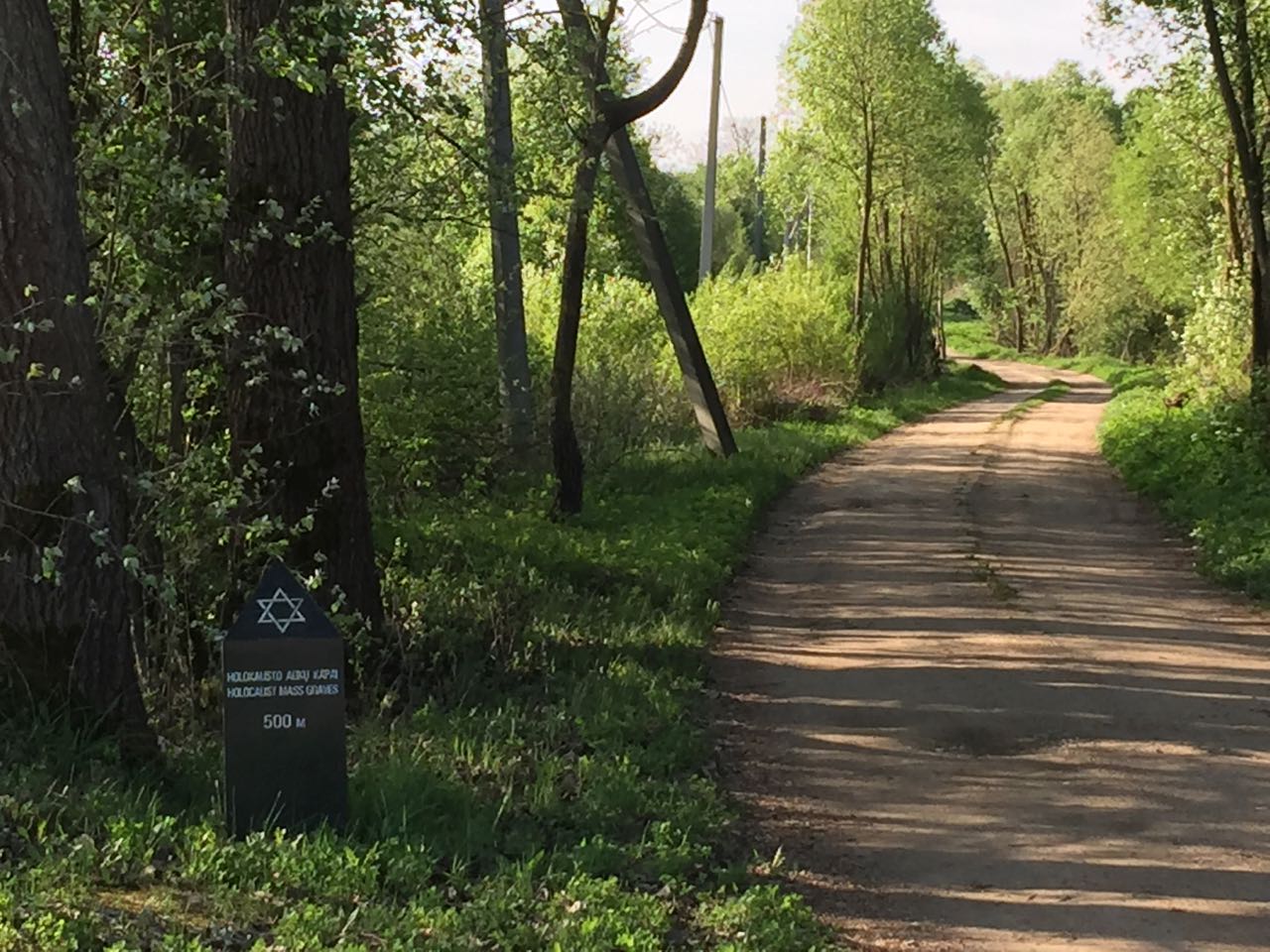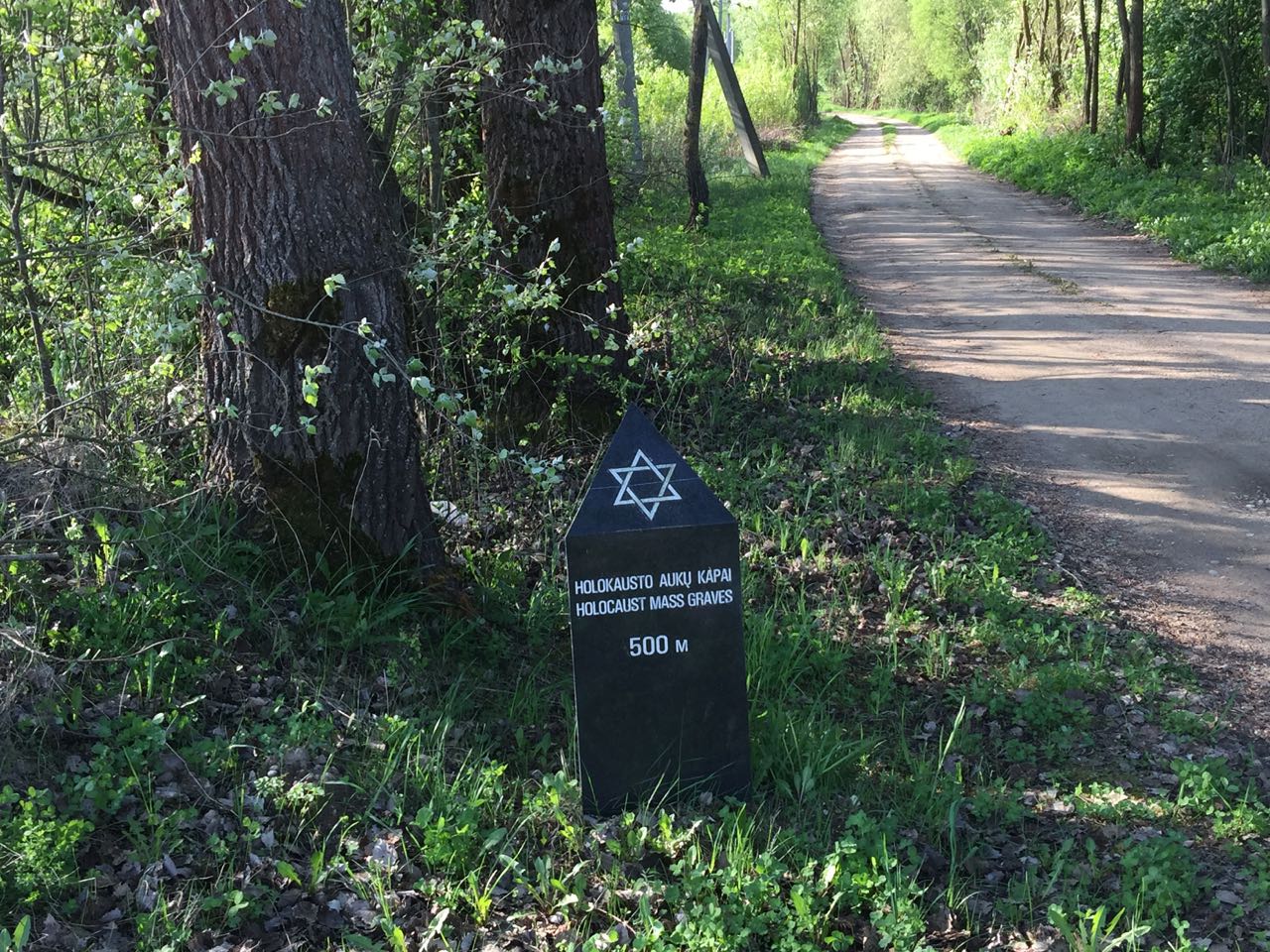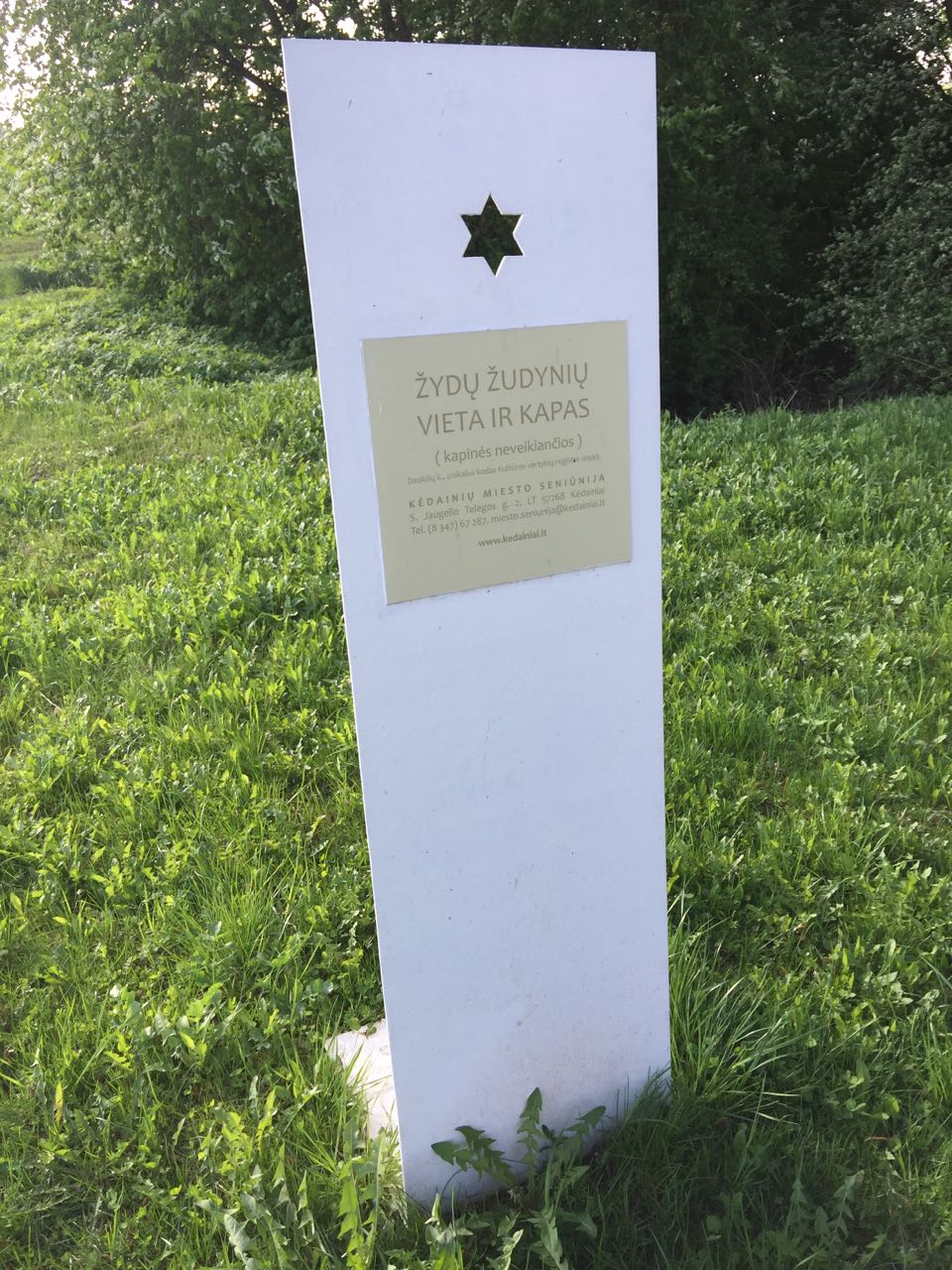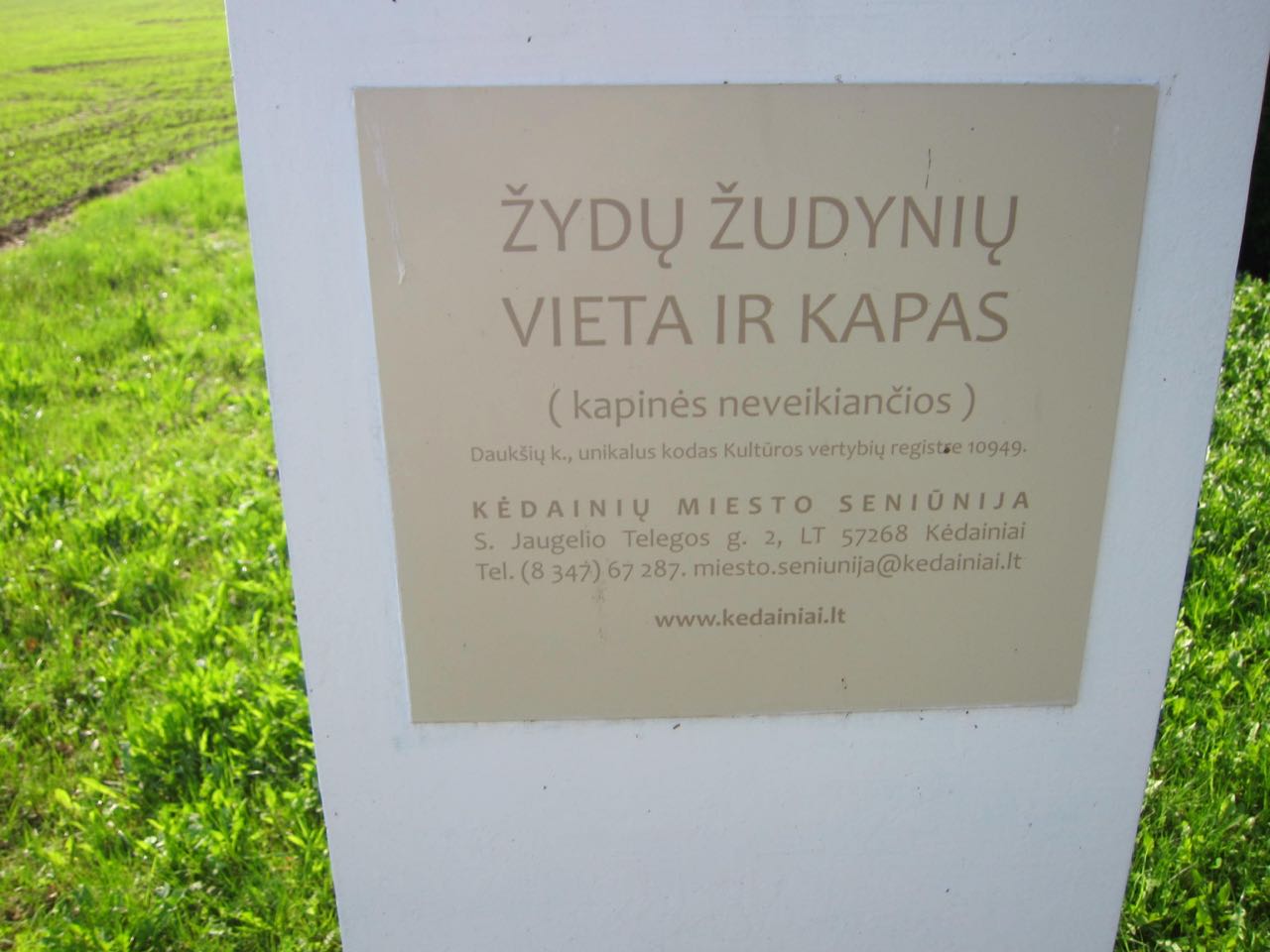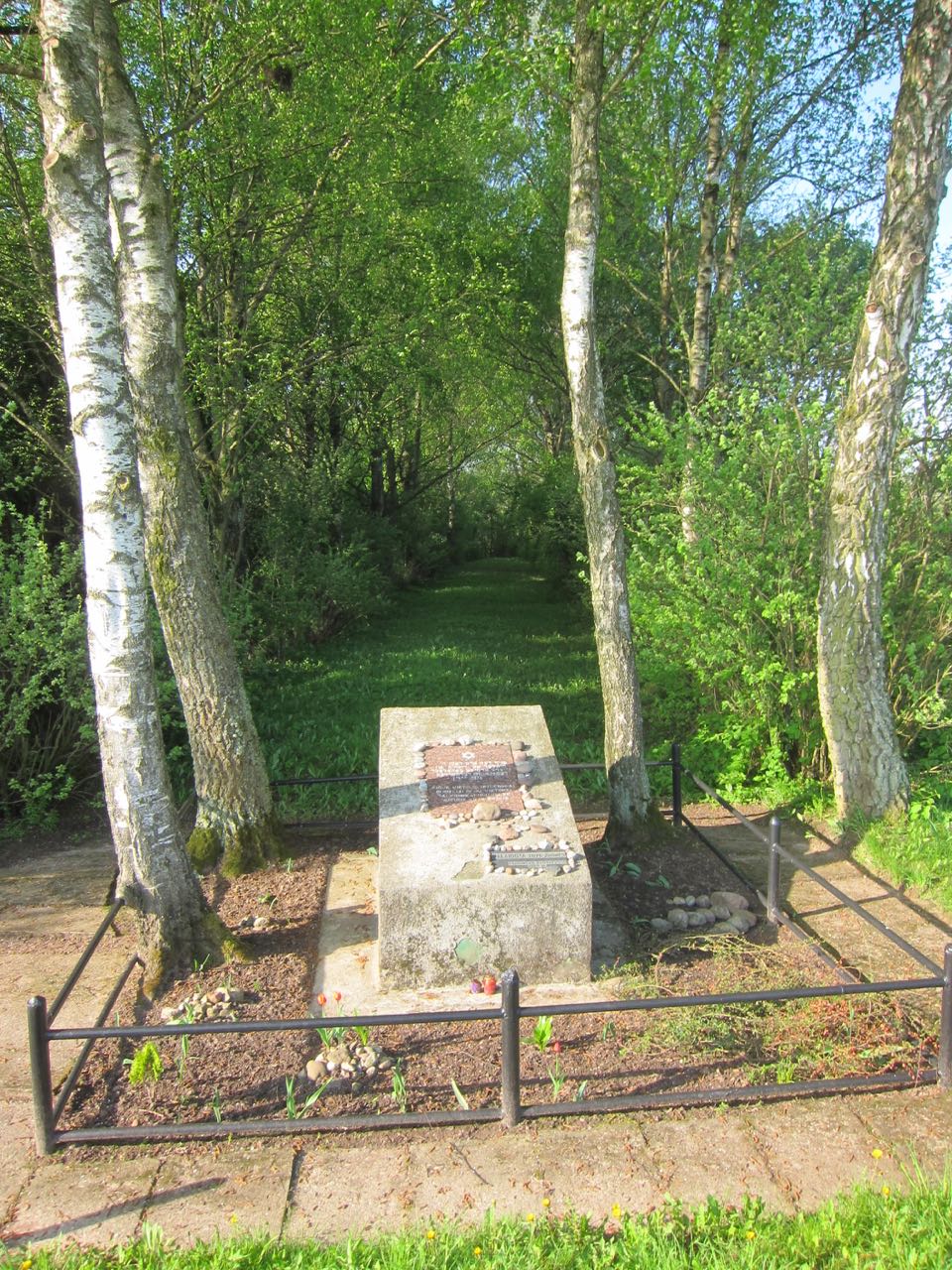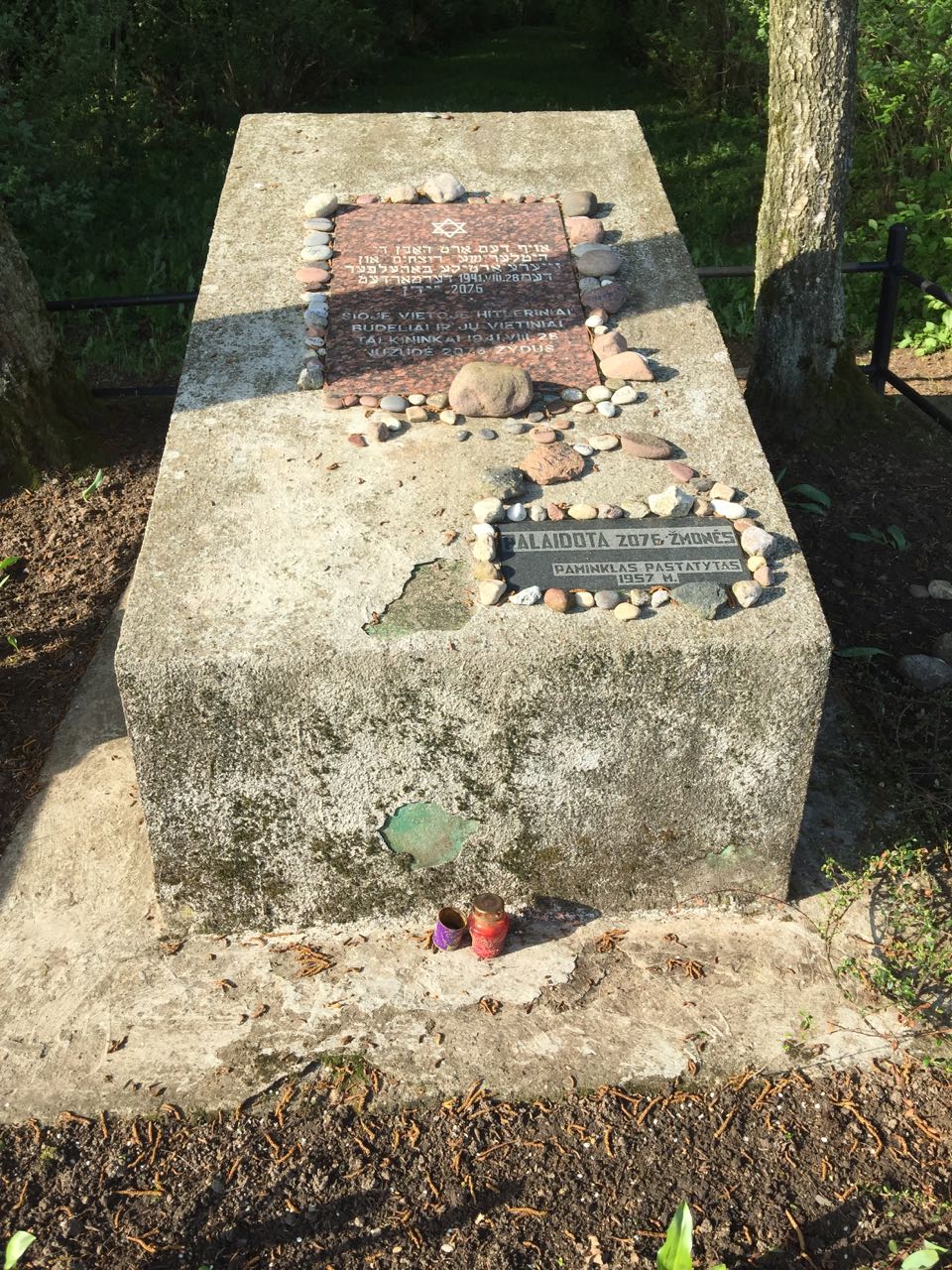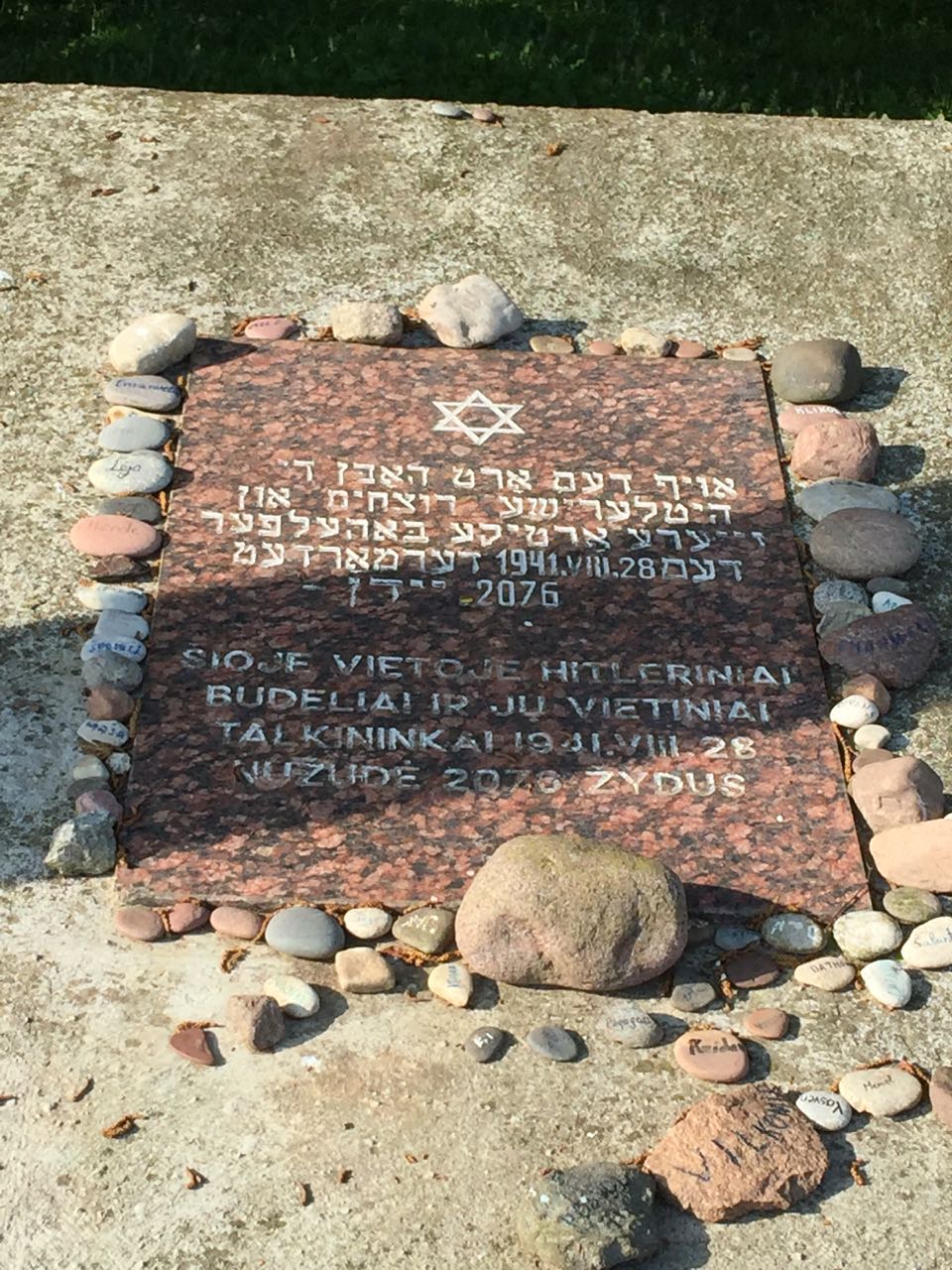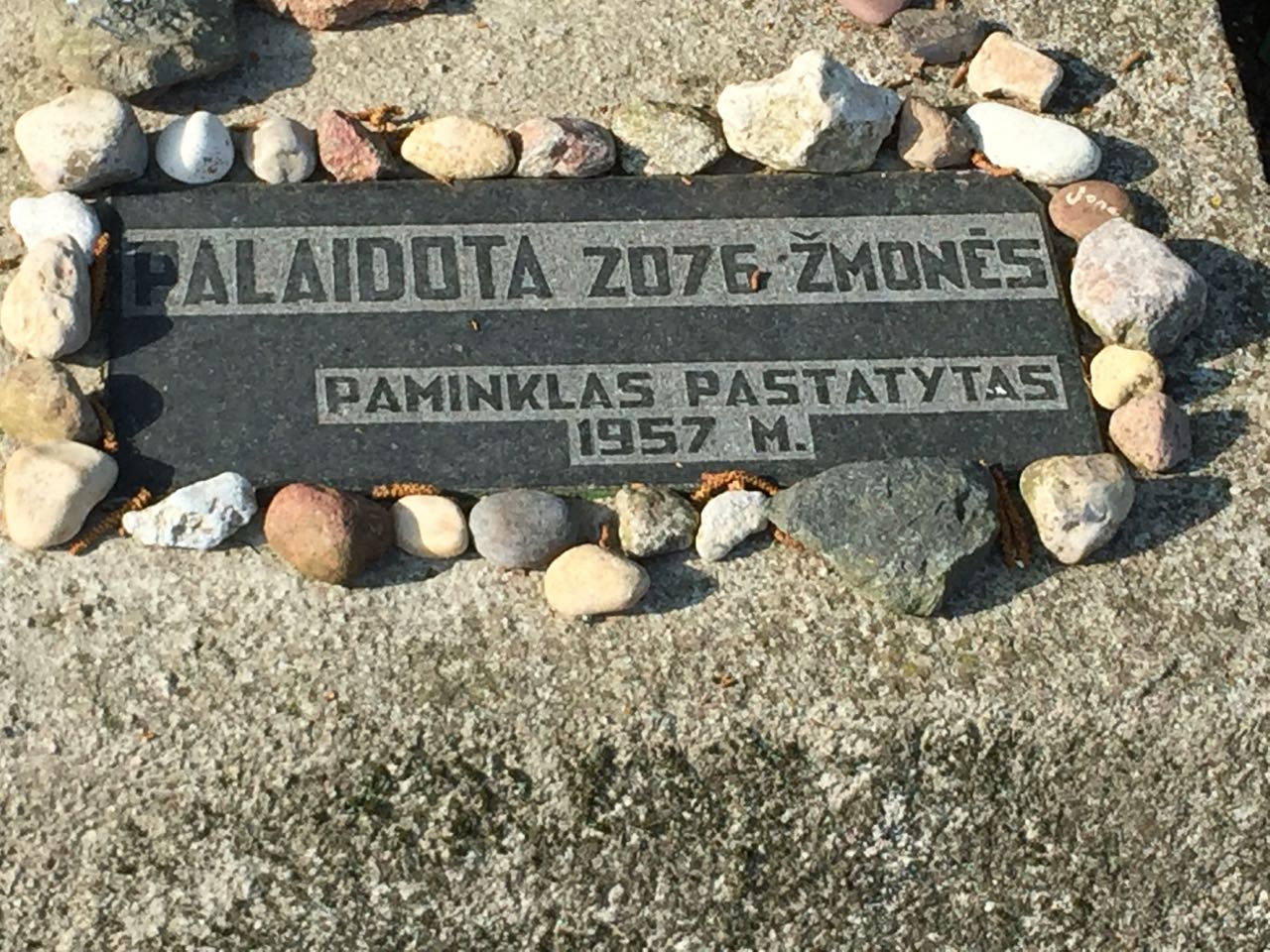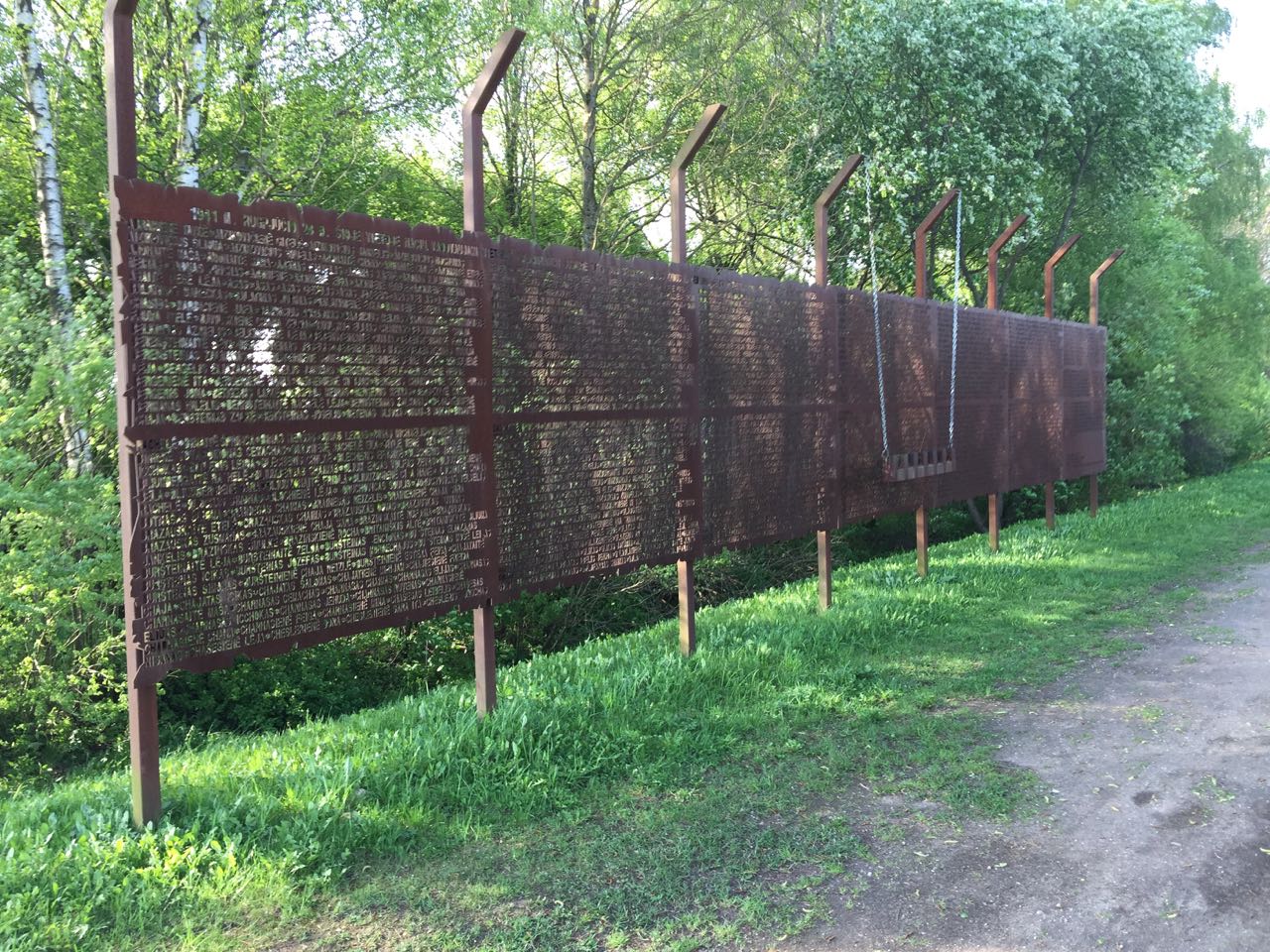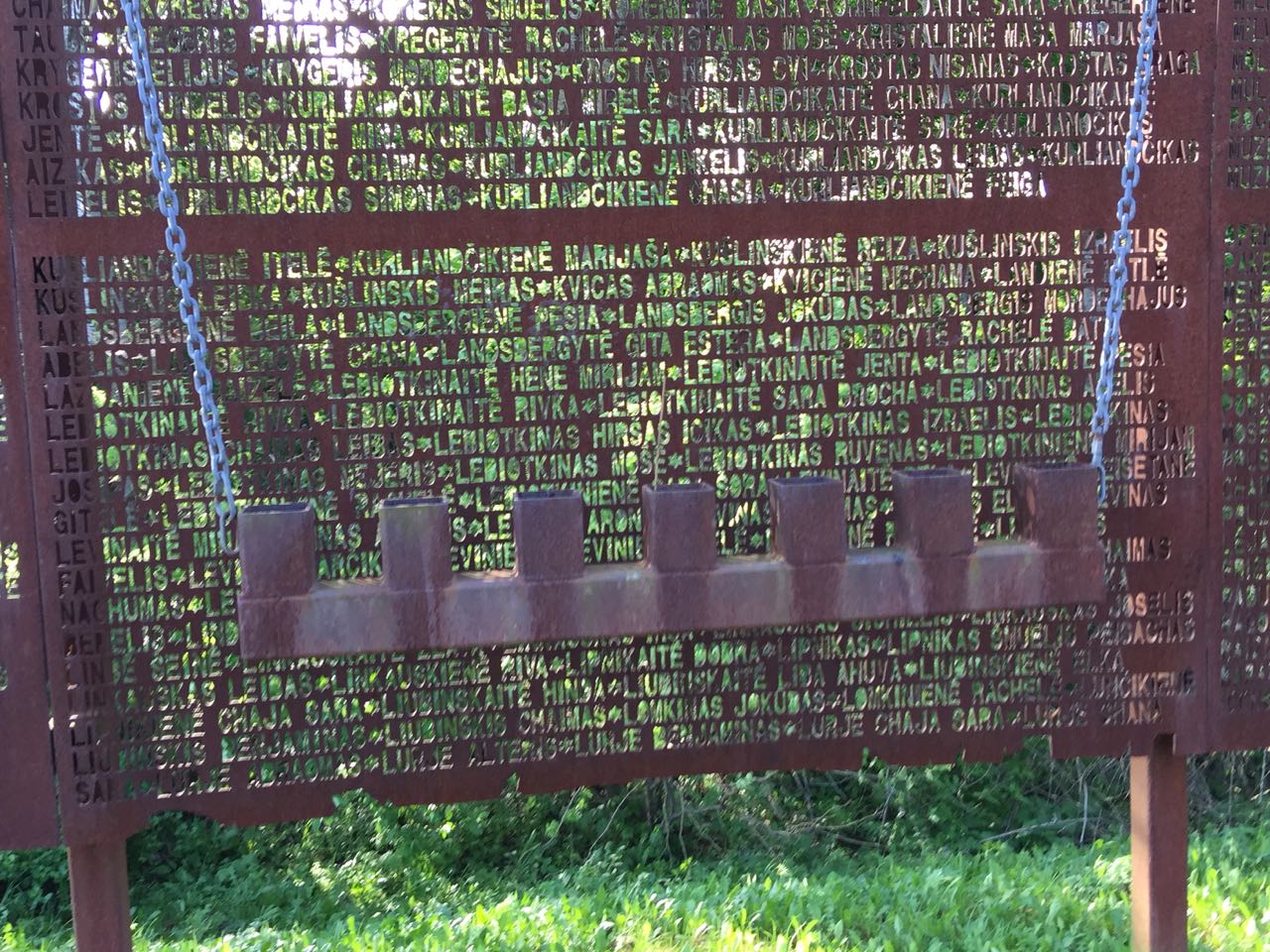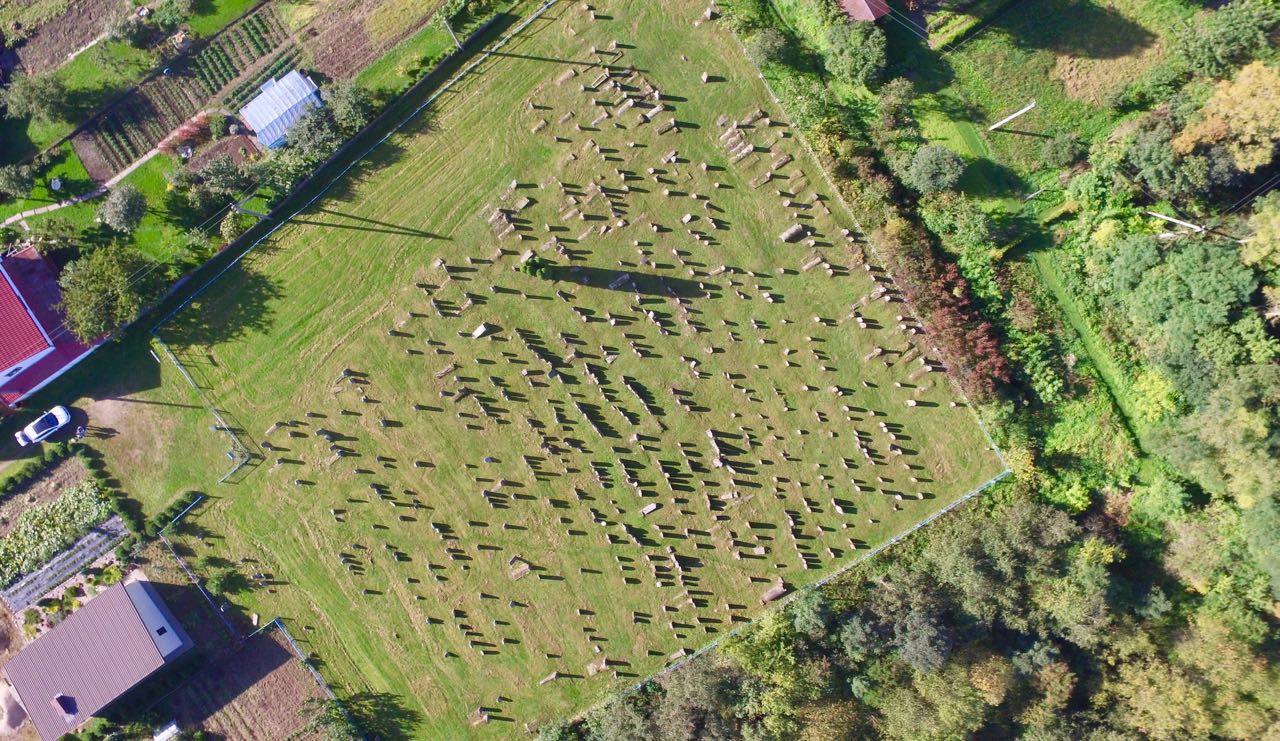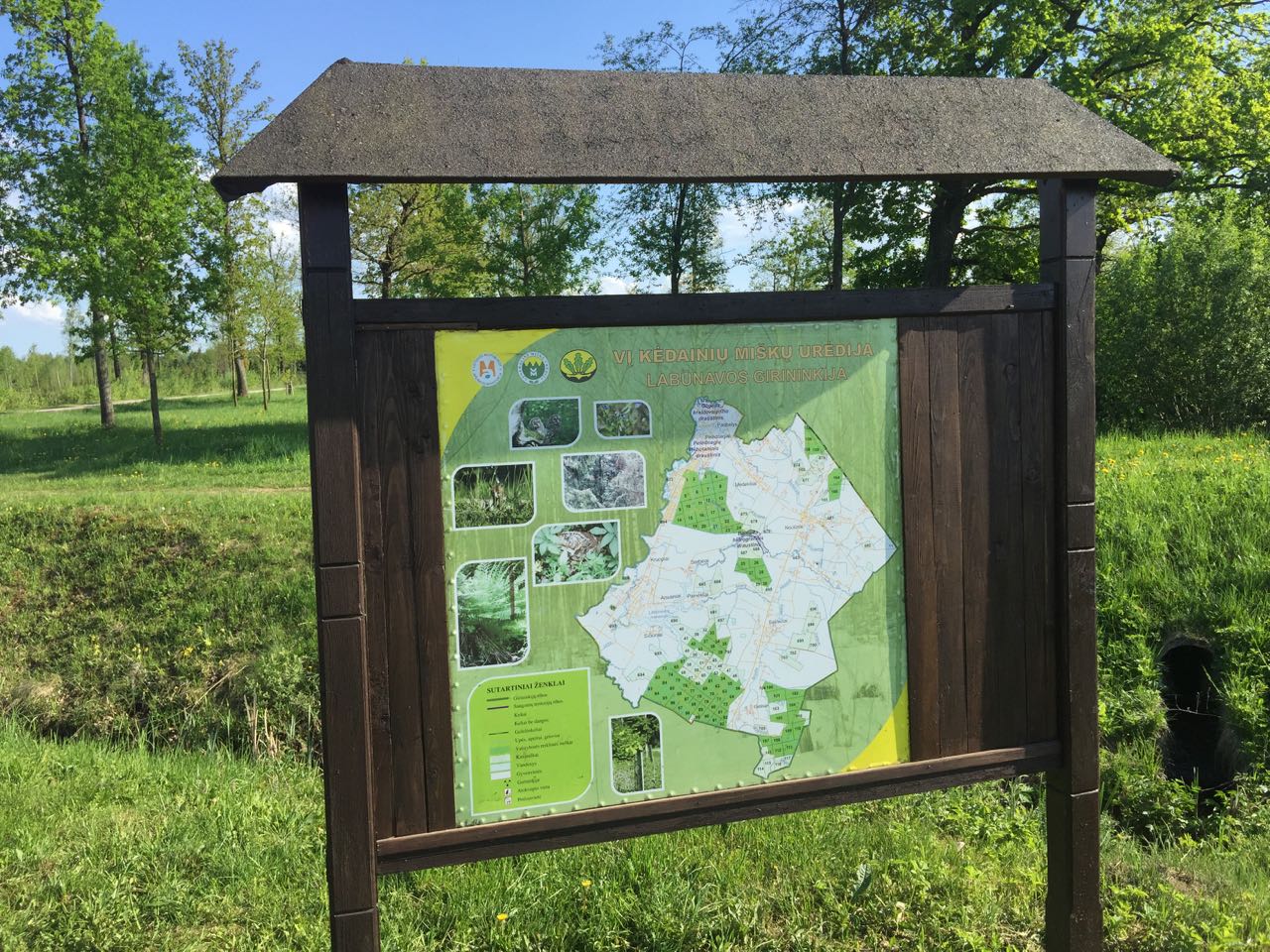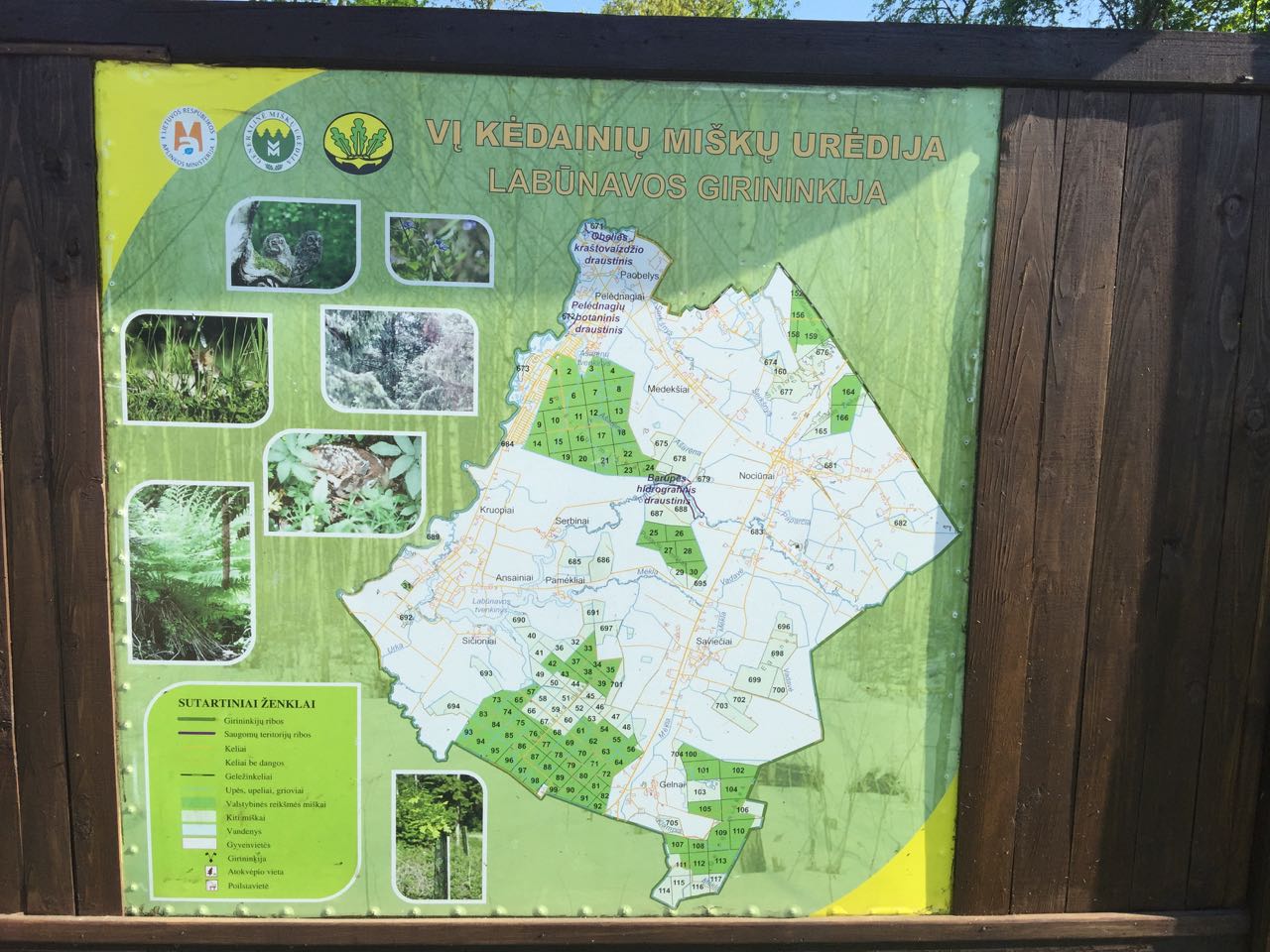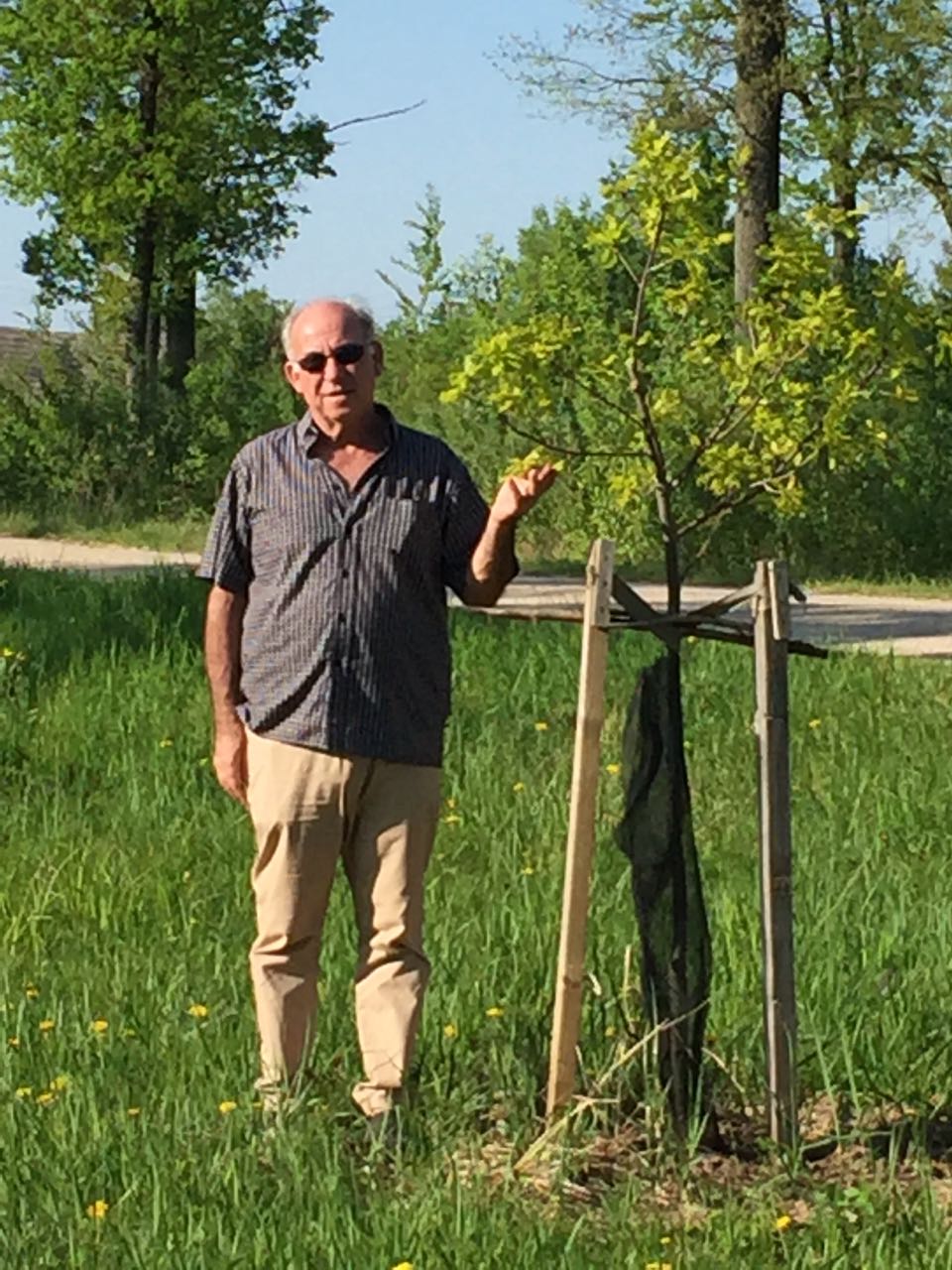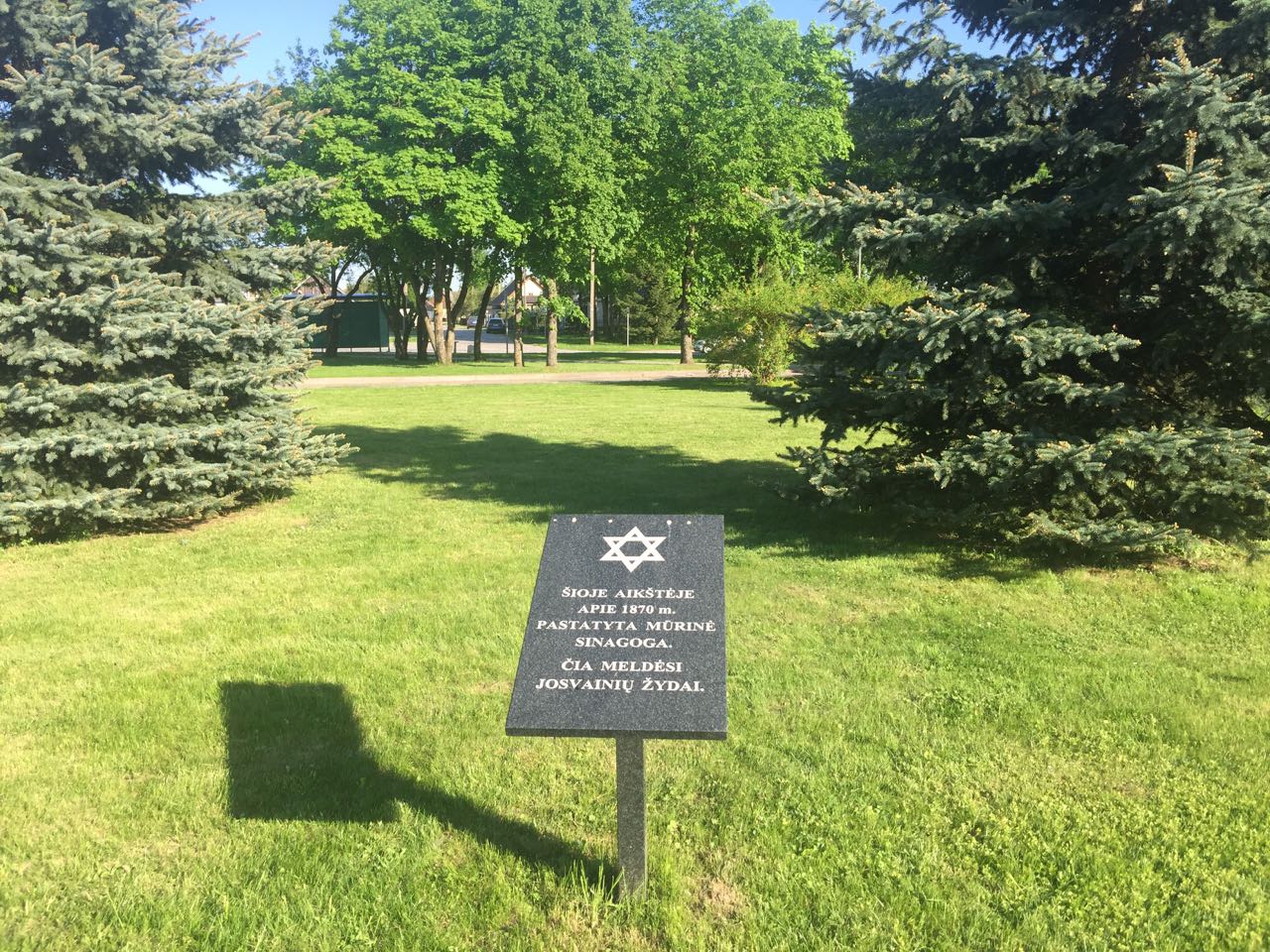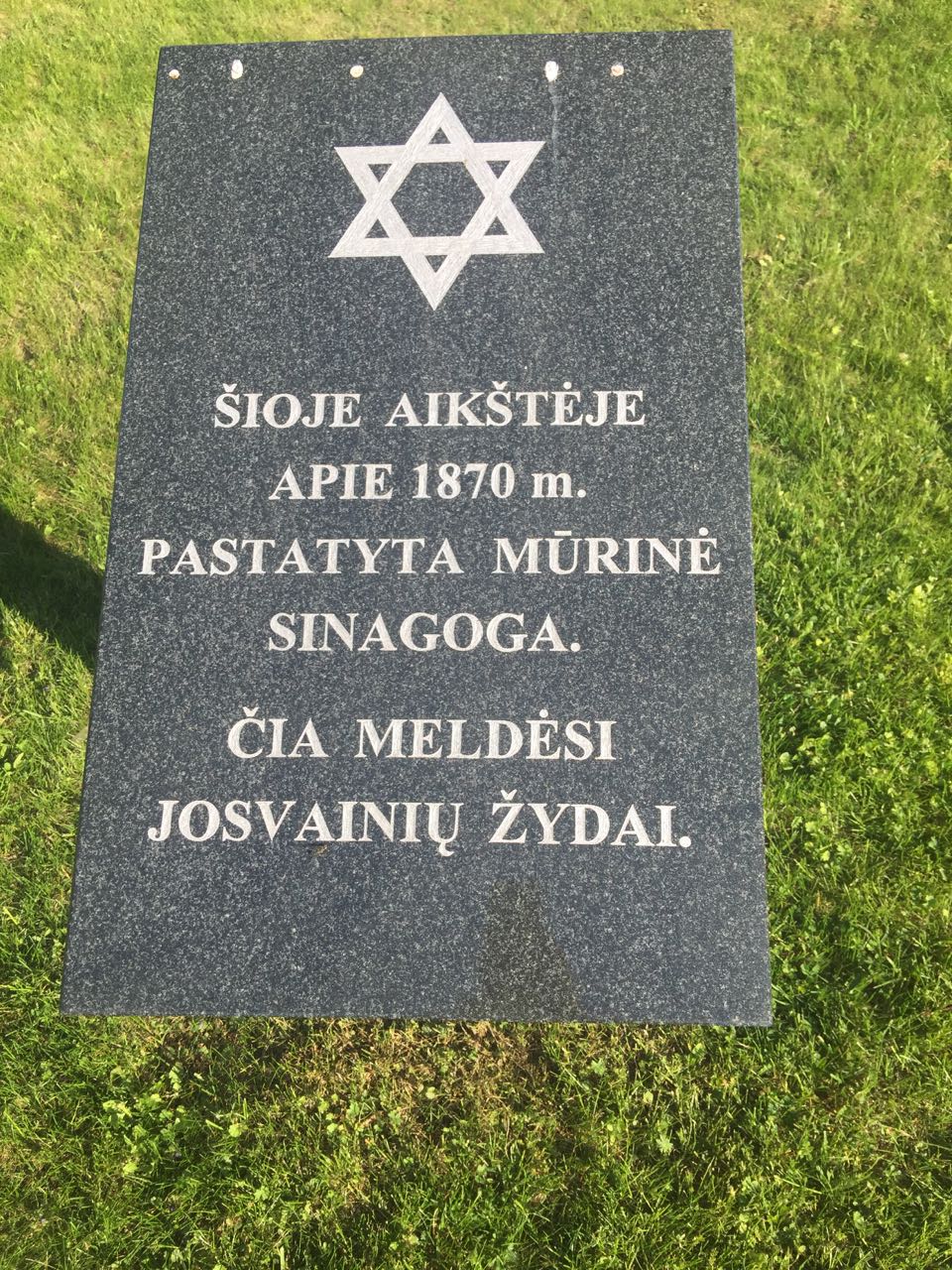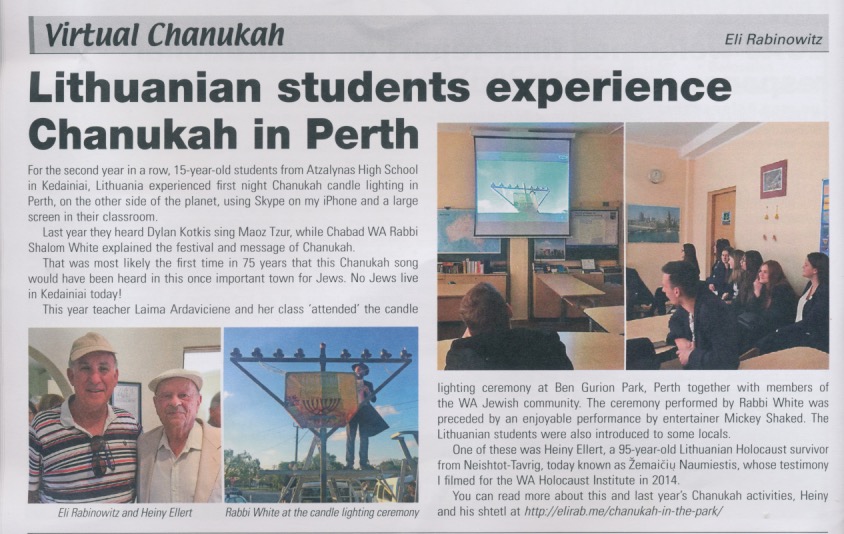Since a few of our Keidaners, who do not speak Hebrew, asked me to write this report, I’m writing it this time in English. I apologize in advance to my Hebrew readers.
This year, a number of Keidan descendants – both from Israel and the USA – intended to come to Lithuania for the 80th anniversary (August 28, 1941) of the mass slaughter of our families and the whole Jewish community of Kėdainiai. For most of them, because of the COVID-19 pandemic, this appeared to be too complicated. Nevertheless, the commemoration meeting by the mass grave in Daukšiai village is already a tradition in Kėdainiai, so it took place as usual in recent years. Like back in 1941, this year also, the day of August 28 fell on Saturday. For this reason, the commemoration meeting was moved to August 29.
The last time I was standing in this Valley of Slaughter, on this particular commemoration day, was August 29, 1971, exactly 50 years ago, a few months before leaving Lithuania to Israel. It was also Sunday – as our parents were coming to this place once a year, on the first Sunday following August 28 (in the Soviet Union you couldn’t take a day off on any other day). At that time, we were sure that if we ever manage to leave Lithuania, we will never come back to this place. But time passed, the world map and our minds have changed, and we came to Kėdainiai again.

Thanks to the efforts of Rimantas Žirgulis, a director of the Kėdainiai Regional Museum, who actually became our spokesman and representative versus Kėdainiai district municipality, and readiness of the municipality mayor, Valentinas Tamulis, to cooperate, a few changes were made at this mass murder site and the old Jewish cemetery of Kėdainiai:
- the memorial erected in 1957 by the generation of our parents, Holocaust survivors, was renewed
- a new memorial plaque was installed (the controversial number of victims was removed. It was added there by the local authorities at the end of the 70s, and was based on the infamous K. Jaeger’s report, disclosed by Soviets in 1963. Since there are other testimonies, and the actual number is difficult to prove now, 80 years after the massacre, it was decided to remove the number at all). The plaque was funded by the Association of the Keidan Jews in Israel
- the whole site was cleared, a small area around the memorial was paved and a staircase leading to the memorial was constructed
- the fallen and inclined tombstones at the old Jewish cemetery were raised to the upright position. So, the cemetery, cleaned from weeds and wild vegetation (and freshly mowed before the commemoration day) looks now completely different
Almost 50 people participated in the commemoration. Among them:
- a group of people from the Kėdainiai municipality, including the vice mayor Paulius Aukštikalnis
- a group of fellow workers from the Kėdainiai Regional museum, including its director, Rimantas Žirgulis, and a head of its Multicultural Center, Audronė Pečiulytė
- a group of teachers and students from the Kėdainiai Atžalynas gymnasium, among them the teachers, Laima Ardavičienė and Aušra Aksomaitytė-Ščiukienė
- I‘m sorry not to mention all those whom I do not know yet personally, but must note, that not only people connected to the museum or municipality came to the meeting, but apparently not related people arrived as well. Thus, a young couple, Loreta and Linas Pankūnai with their teenage sons arrived with two national flags of Israel.
- because of COVID, the Jewish representation at the commemoration was more limited: David Kagan with his daughter Talia arrived from New York, another representative of the Kagan family, Aryeh Leonard Shcherbakov with his wife Mila, came from Israel, Sender Girshovich came from Klaipeda and two representatives of Shneider family – Vitaly David and his son Igor came from Vilnius. Last, but most important, a leading singer of the Lithuanian National Opera, Rafailas Karpis, arrived from Vilnius to take part in the meeting.
As the vast majority of participants were Lithuanians, the meeting was held – except for the prayers recited in Hebrew – in the Lithuanian language.
Because of this, I try to translate (not literally, but so as to preserve the essence of the talks) and present here a summary of things being said.
The commemoration meeting was opened at 15:00 by Rimantas Žirgulis. He told that Kėdainiai had seen many tragedies in its history, but this mass murder which happened here 80 years ago, was undoubtedly the most horrible, bloody and brutal event in its history – when a few dozens of Kėdainiai townsmen murdered from two to more than three thousands of Kėdainiai, Šėta and Žeimiai Jews only because they were Jews. „Those people, who lived in our town for more than three hundred years, who were our neighbors, who created this town with us, built it, traded in it, bought in the same shops, who were an integral part ofKėdainiai, Šėta, and Žeimiai communities and their economic life. Because of a crazy idea of some madmen that these people have no right to live, on one single day in the course of a few hours, a few dozen of our Lithuanian fellow citizens guided by several German Nazis drove all those people to this pit – 100 meters long, 3 meters wide and 2.5 meters deep.“
To honor the martyrs, Rimantas declared a few minutes of silence. We knew that at that moment, other Keidaners joined us in different parts of the world.
Flowers were put on the memorial and candles were lit.
Rimantas continued by telling that 10 years ago, on the 70th anniversary of this tragedy, when the memorial iron boards holding the names of the murdered, were erected here, a Jewish Keidan descendant, prof. Mira Sklarew from the USA participated in the commemoration. A singer Vilma Merkytė performed then „The Songs of Orphans“. Hearing the song, Rimantas felt, that Kėdainiai became orphaned after the war. “Fortunately, out of thousands murdered, a handful of Kėdainiai Jews survived the Holocaust. Therefore today we have a possibility to be with our guests, their descendants, who came from Israel and the USA. Their visit and relations we keep with them are very important for us” – said Rimantas. “Despite all the horrible things that happened here – following which some people totally cut off their ties with Lithuania and Kėdainiai – they came to participate in this commemoration together with us. Moreover, the Israel Association of Keidan Jews brought a present – a new memorial plaque, funded by them and now installed on the memorial. This memorial was erected here by Kėdainiai Holocaust survivors in 1957. It was recently renewed by the Kėdainiai municipality and the whole place around the memorial was ordered and reorganized, looking today completely different, more decent and civilized than it looked for dozens of years, and I want to thank the municipality for this.”
On behalf of the Israel Association of Keidaners, I tried to talk in Lithuanian, which I didn’t use for the last 50 years. Because of this and because I didn’t want to repeat things that were already said, I changed my introduction, so the talk went stumbling, but it can be approximately summarized as follows. I told that I’m glad to see that so many people gathered here. “When I came to Lithuania for the first time, 15 years ago, I saw that nothing changed here from the time I left. Nobody took care of Jewish heritage, there were almost no signs that Jews ever lived in Kėdainiai. But about 10 years ago, I’ve discovered two new friends here – Rimantas and Laima, and today, looking at the people who gathered here, I see that we have many more friends in Kėdainiai. And this is exciting.”
“Each time, when this day approaches (and in recent years we commemorate it simultaneously in Israel and Lithuania), I recall the Hebrew saying of Passover: ‘On this day each of us must see himself as if he came out of Egypt, from slavery to freedom’. On such a day as this, on the contrary, I see myself standing among my family members and other Keidan Jews in this death pit, and with time this feeling becomes more painful. Sometimes people wonder – why to be occupied with these old memories, with those people who are dead for so many years, and nobody can help them today? Then I always recall a book, which I received as a present on my 10th birthday. The book was named ‘The Legend about Till Ulenspiegel and his Adventures’ . It was written in an easy-going manner, as if for the children, and published in the children’s publishing house. But it talked also about hard things, and among others, about Till’s father, who was burnt at stake following a false denunciation by his neighbor. At night, Till sneaked to the execution place, picked up a handful of ashes of his father, and filled with it a small bag, which from that time he always carried on his chest, like a medallion. Whenever anybody started talking to him, Till’s first words were: ‘My father’s ashes are pounding on my heart’, irrelevant of the circumstances and the topic of the conversation. And this is exactly what I want to say here: ‘All these years the ashes of the murdered are pounding on my heart’, and I‘m unable to forget them.”
“I want to add that in all those years after the war, Jewish pain was totally denied by Soviet authorities. It wasdiscarded to such an extent, that the word ‘Jew’ wasn’t allowed to be written on memorials at the mass graves all over Lithuania and the Soviet Union. The same happened in Kėdainiai – ‘To the Victims of Fascist Terror’ was written there for many years. Only by the end of the 70s, a new inscription appeared, saying that Jews were murdered here.”
“Two things are important to us: acknowledgment of the Jewish suffering and pain, and preservation of Jewish memory in Kėdainiai.
Coming in recent years to Kėdainiai, I see more signs of the former Jewish presence in the city, and I want to thank all Kėdainiai people who are responsible for this. First of all – Rimantas Žirgulis from the Kėdainiai Regional Museum, then – Valentinas Tamulis, the Kėdainiai district mayor, Audrone Pečiulytė from theKėdainiai Regional Museum and Laima Ardavičienė from the Kėdainiai Atžalynas gymnasium for their most important educational activity – so that the young Kėdainiai generation knew that other people also lived once in this town, that they were innocently murdered, and that such atrocities should never happen again in the future.“
Finally, according to the old Jewish tradition, I recited psalms and El Male Rachamim to those lying in the common grave.
The vice mayor of Kėdainai, Paulius Aukštikalnis, greeted all those who came for the commemoration. He told that it is very difficult to talk on such occasions, to find proper words for such tragedy. “This is mainly done by historians. The birch tree by the memorial with an iron rod of the fence passing through its trunk symbolizes brothers and sisters who fell into this pit when lead bullets pierced their hearts. Such tragedy is like a severe burn for a human being. We must always remember this. The second tragedy would be to forget such events. So, we must thank people like Rimantas, Audrone, and other members of this community who do not allow us to forget, who each year remind us of what had happened here, and who organize such commemorations. We will not have proper knowledge of how to create a future without remembering the painful events that burnt us. Forgetting history can lead us to great errors. Although 80 years passed and the blood is soaked deep in this ground, remembering this event is very important to all of us. Politicians should be brought to such places and shown that such things should not happen. Such gatherings and sincere discussions will only strengthen us as a society and allow us to proceed further into the future. You, Rimantas, don’t have to thank the municipality for upgrading this place, but we must thank you for telling us what should be done – so that the history will not disappear. I wish all of us to leave this place remembering what had happened here and reminding the young generation what shouldn’t be done. Only in this way, we will not destroy ourselves.”
Rafailas Karpis concluded the meeting with a breathtaking performance of Kaddish.

An hour later, being accompanied by Darius Mažintas (piano), he gave a beautiful concert of Yiddish songs in the Town Hall of Kėdainiai. This was one of the best performances of Yiddish songs (in clear Lithuanian Yiddish) I ever heard.
To get an impression of the event, here’s a link to a set of photographs:
https://photos.app.goo.gl/hdc44o9gh5eTjSLE9
The following report was broadcast the same day during the evening news on Balticum TV – the cable channel covering the whole Kėdainiai district:
https://www.youtube.com/watch?v=q_fXYM0RtWI
It includes excerpts of short interviews, given separately by Rimantas and me before the event. Although, for those who do not speak Lithuanian, there is a problem…
As a continuation of this memorable day, on September 17, 2021, another event took place in Kėdainiai: “The Road of the Memory 1941-2021”. It was a part of the similar commemoration events in several other small and large towns of Lithuania – marking the beginning of the Holocaust in Lithuania in 1941, when almost the whole Lithuanian Jewish population was brutally annihilated in the course of a few summer and autumn months.
It included a memory march, starting in the park (the former estate, where Jews were kept for almost two weeks before their bitter end) and walking to the slaughter place at Daukšiai village, where the commemoration meeting took place.
In addition to our Kėdainiai friends, who already participated in the commemoration of August 29, Tomas Bičiūnas a member of the Lithuanian parliament from Kėdainiai, Ronaldas Račinskas, from Vilnius, a chairman of the international commission for evaluation of crimes of the Nazi and Soviet occupation regimes in Lithuania, Gercas Žakas, a chairman of the Kaunas Jewish community, and several new other people joined the march. Children from the six Kėdainiai schools (one class from each school) were invited as well. The weather was cold and very windy. It was raining the night before, so part of the road was muddy and slippery. Still nobody complaint. Somebody said: “our inconvenience because of the weather is nothing compared to what suffered Jews walking their last road”. One of the large posters had the following text: “We love the Jewish people. We are in pain because of the Holocaust”.
The commemoration meeting took place by the mass grave. Borisas Kiržneris played violin. Israel ambassador to Lithuania, Yossi Levy, and a cultural attaché of the Federal Republic of Germany, Anja Luther, came from Vilnius to take part in the event:
https://photos.app.goo.gl/xoudCe3ZQRxuruvv5
————————————————————-
A few days ago we received a new present from Laima Ardavičienė and her students.
In recent years, the Lithuanian Radio and Television (LRT) authority created a series of documentaries about Lithuanian towns and shtetls and their lost Jewish communities.
The layout of all these documentaries is similar – two young people are walking around the town, discussing various aspects of its Jewish history.
One of these documentaries was about Kėdainiai. Unfortunately, there were no English subtitles. In the last months, Laima and her students worked hard to dub this documentary into English. Here you have a result of their work:
https://www.youtube.com/watch?v=Hv0X25bOJ4Y
With best regards,
Aryeh Leonard Shcherbakov
a secretary of the Association of the Keidan Jews in Israel
0527-909-743























































































































































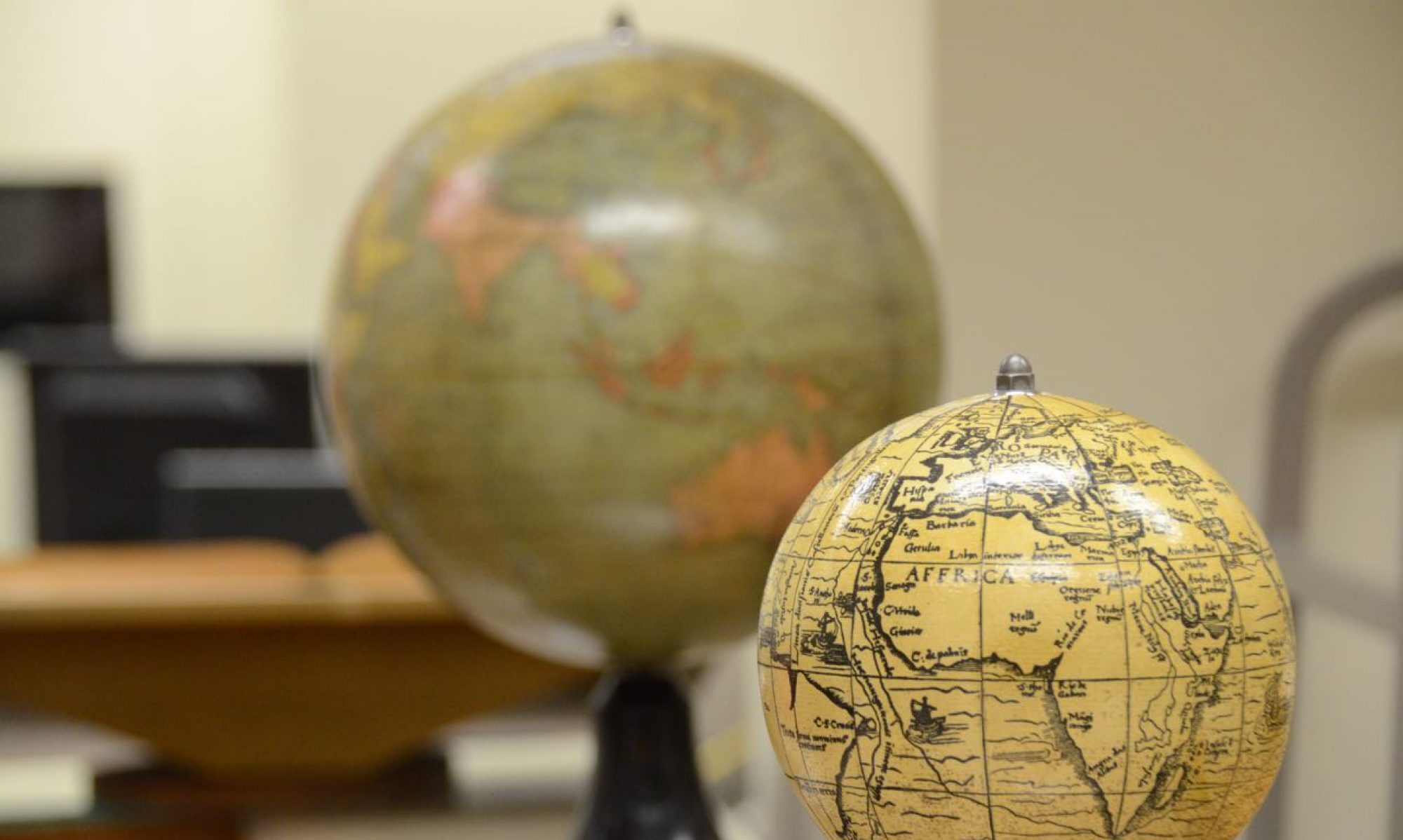




























































































































































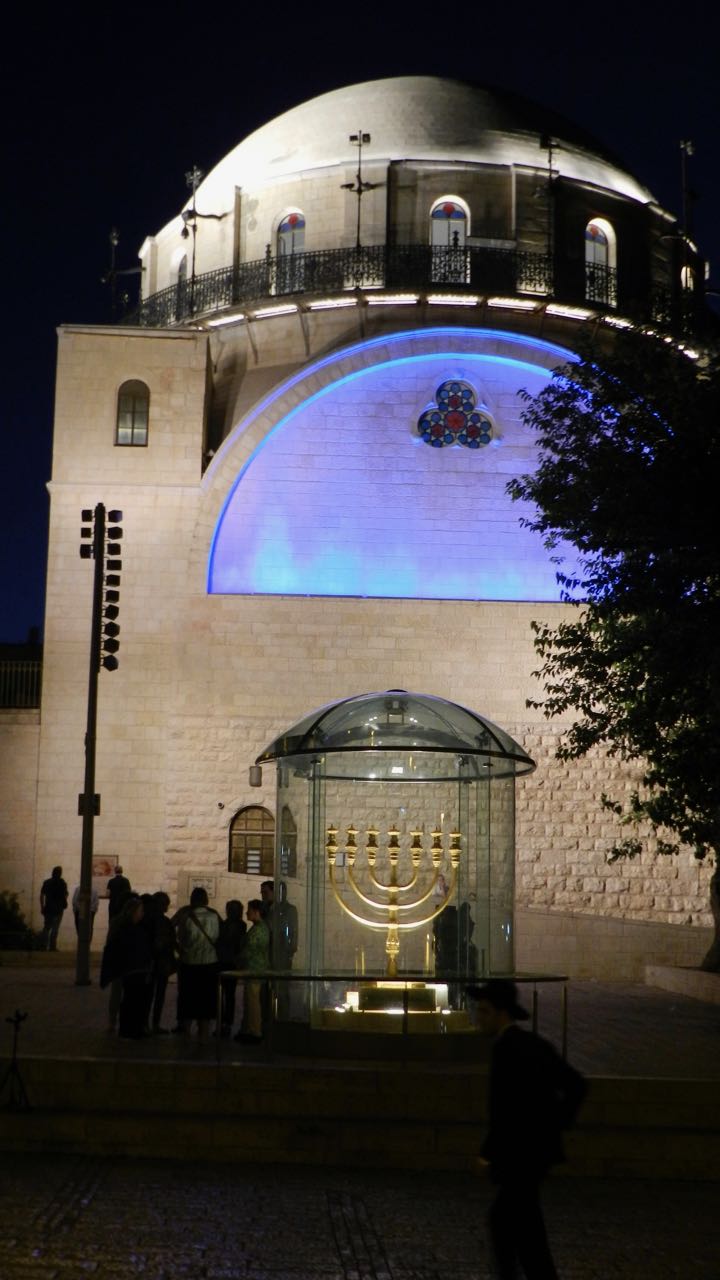

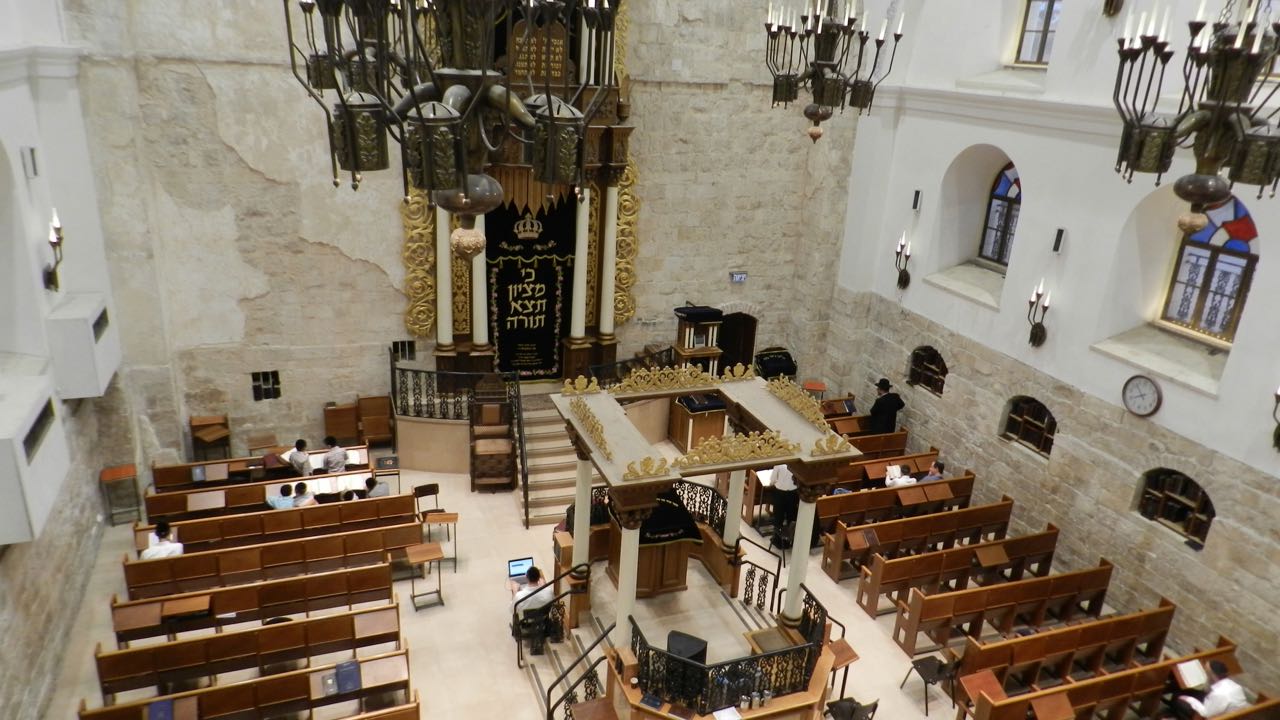


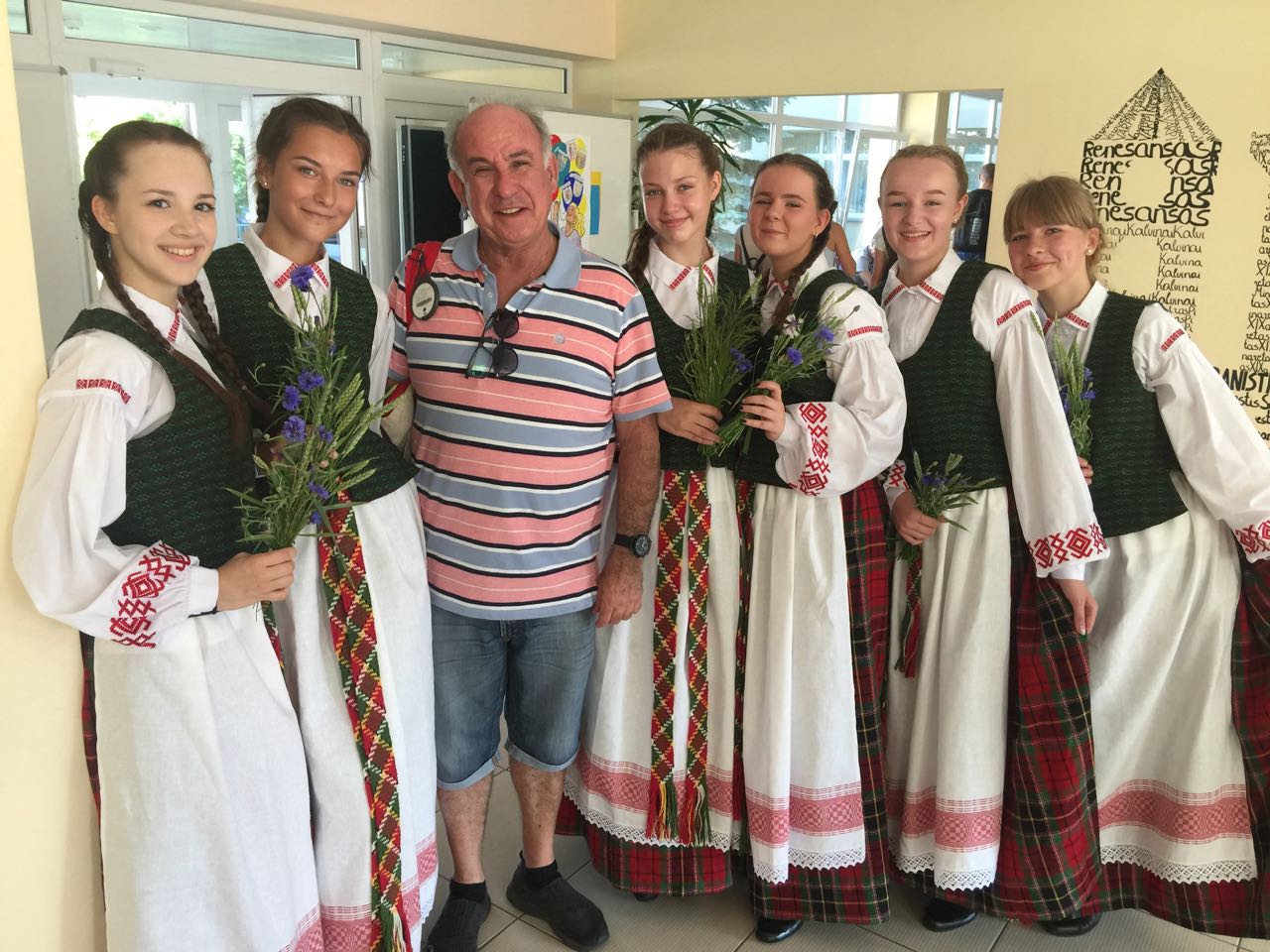


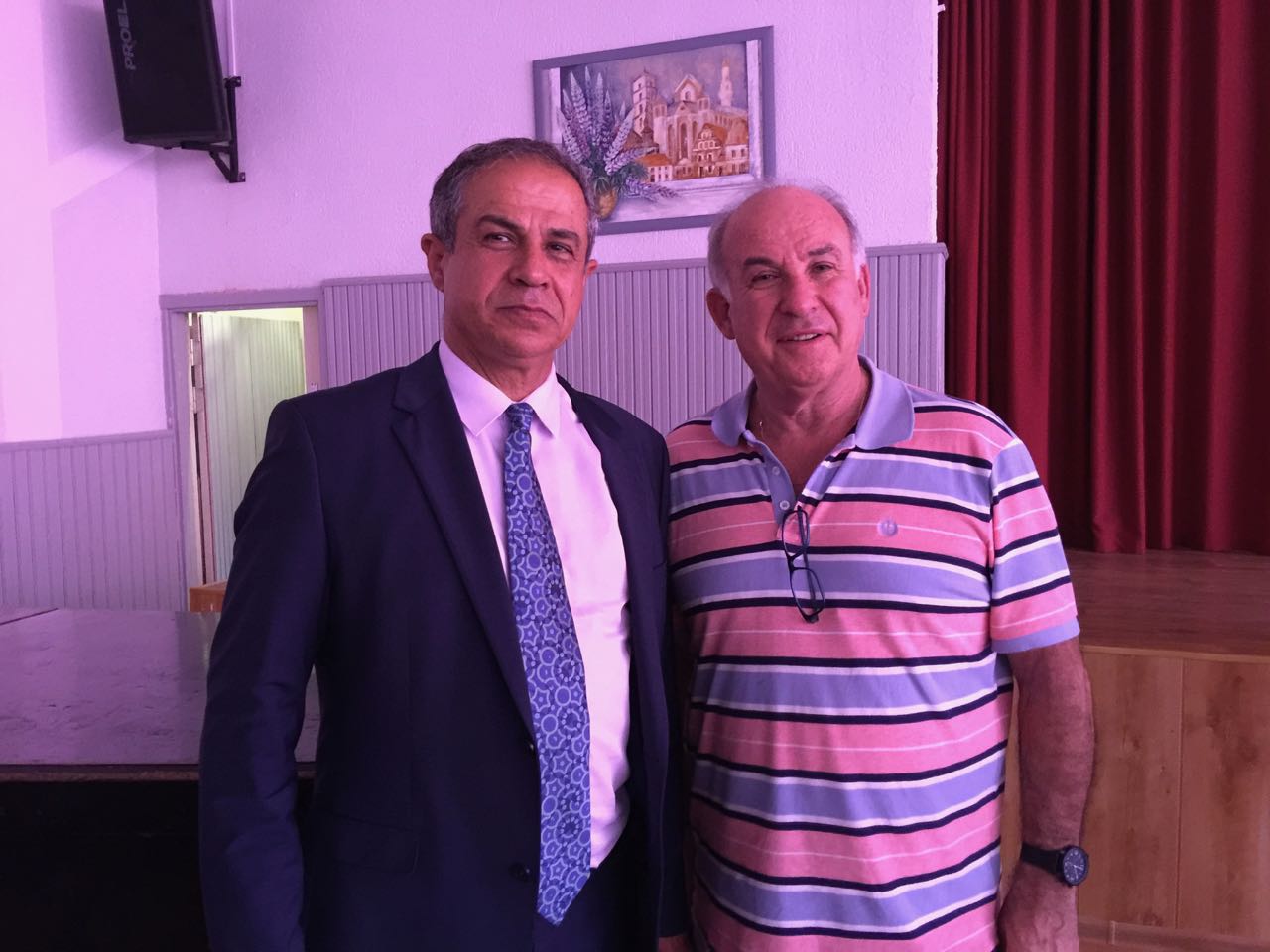

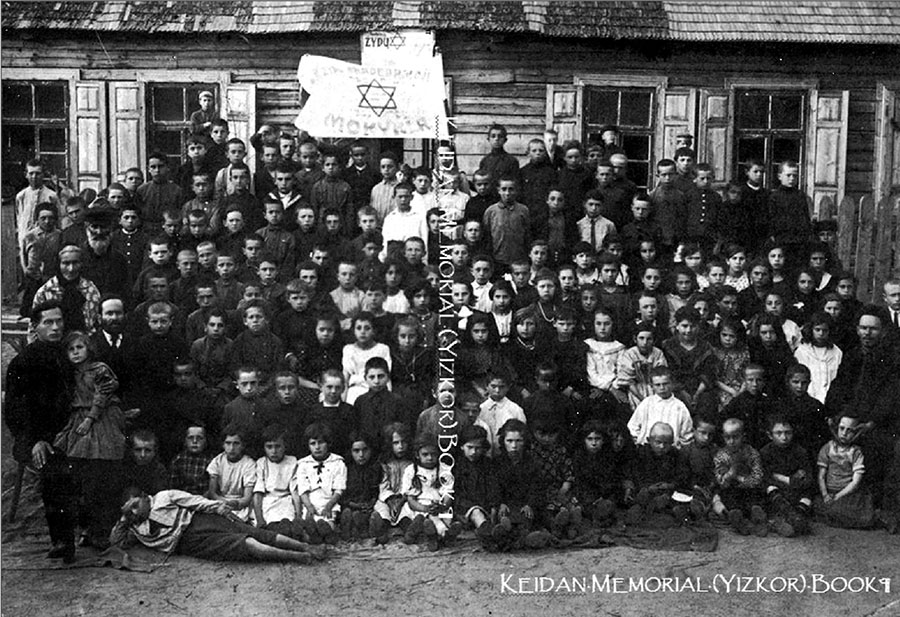

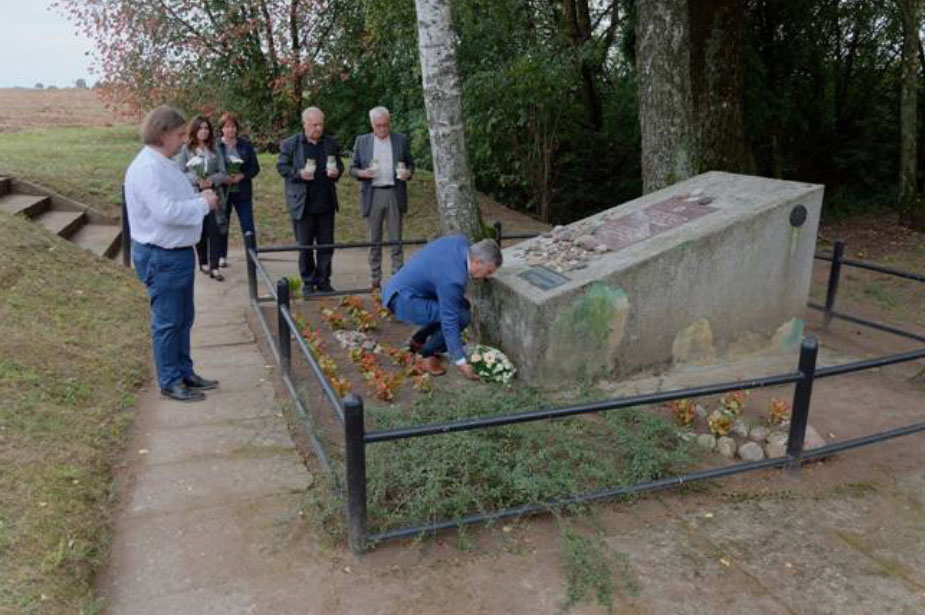
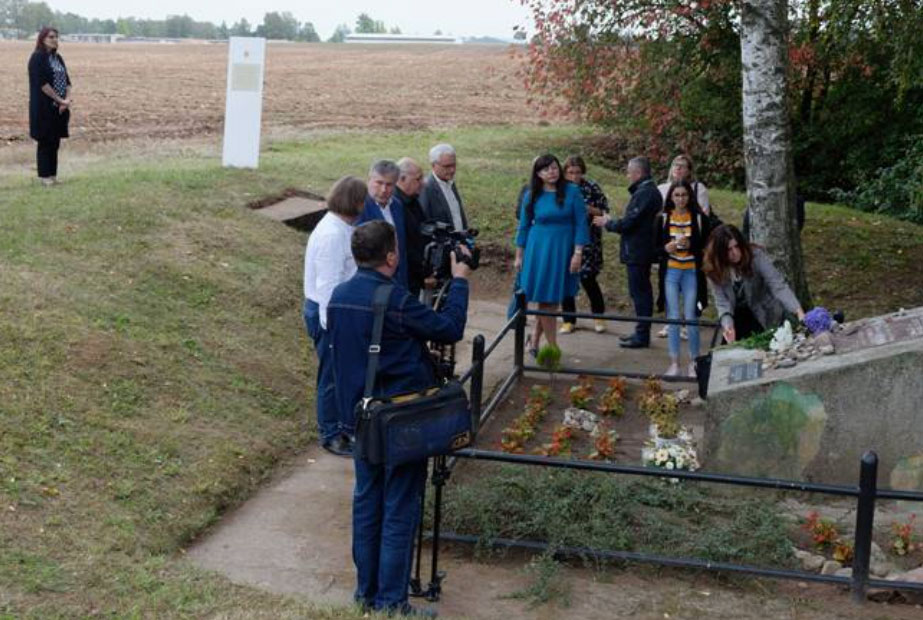
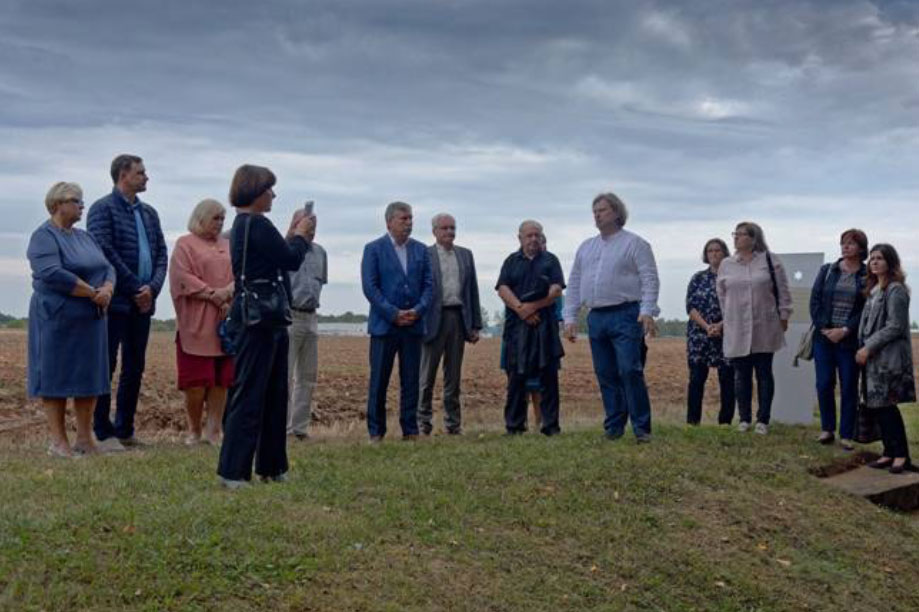
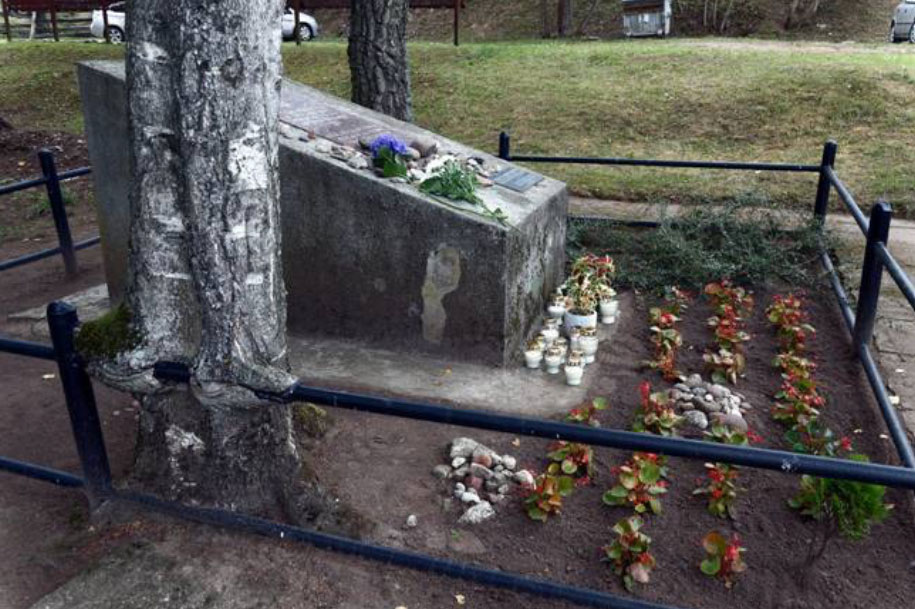
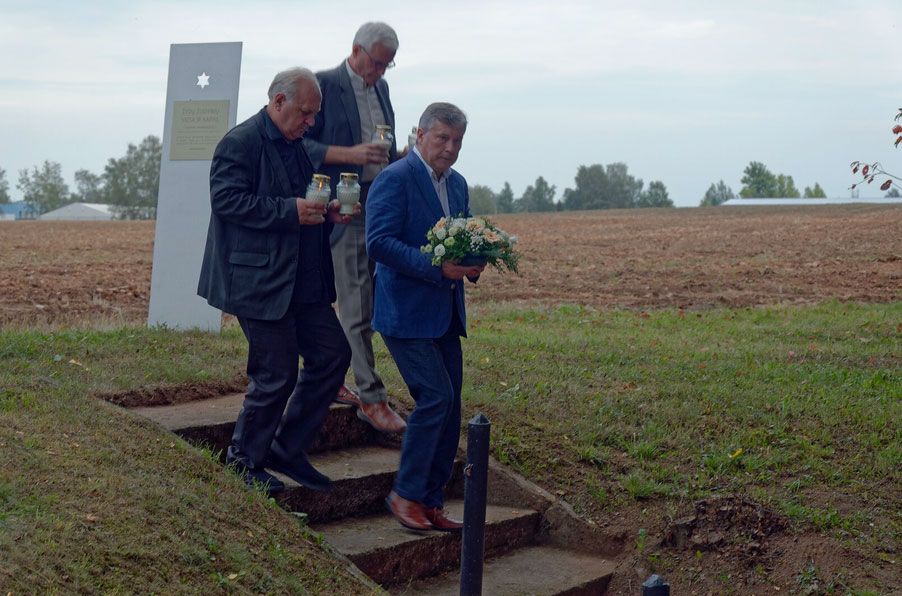
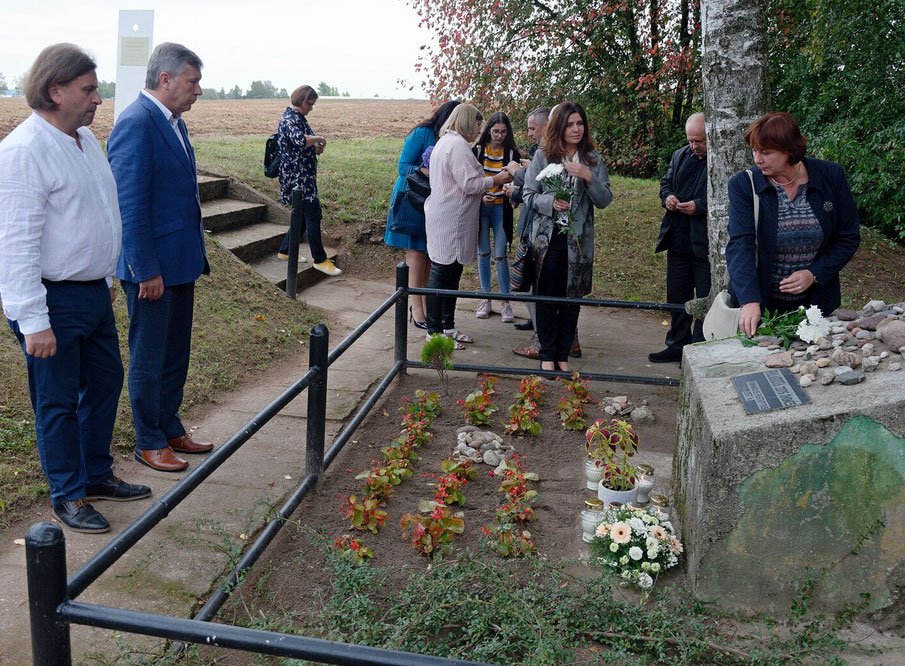
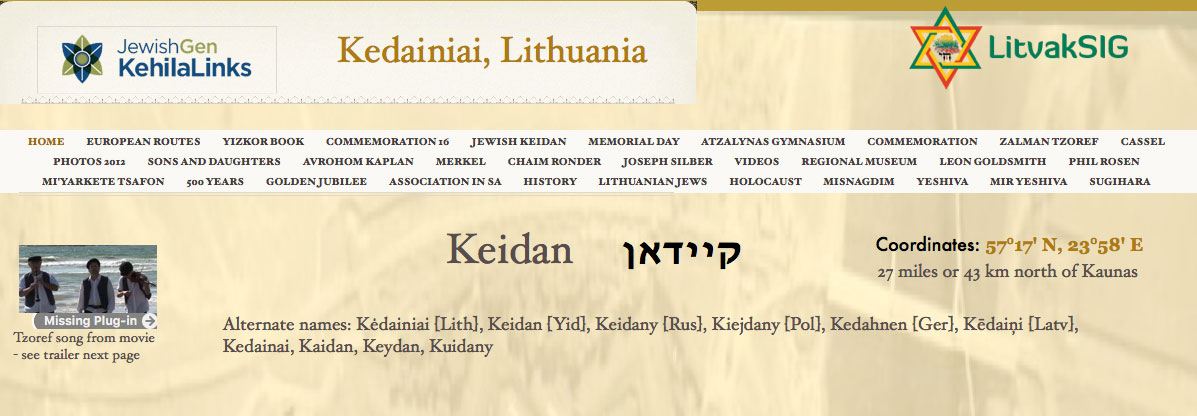 Source:
Source: 

